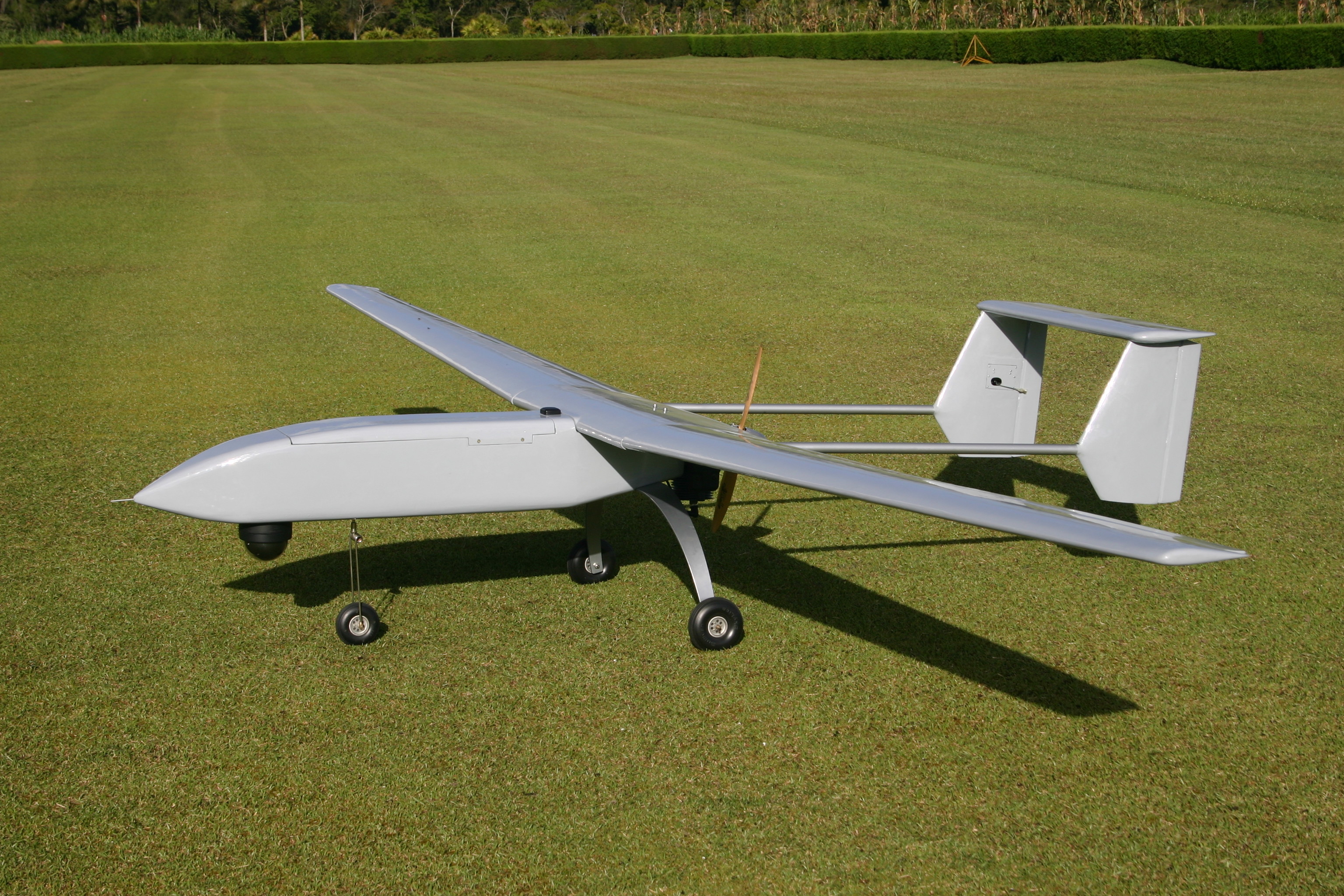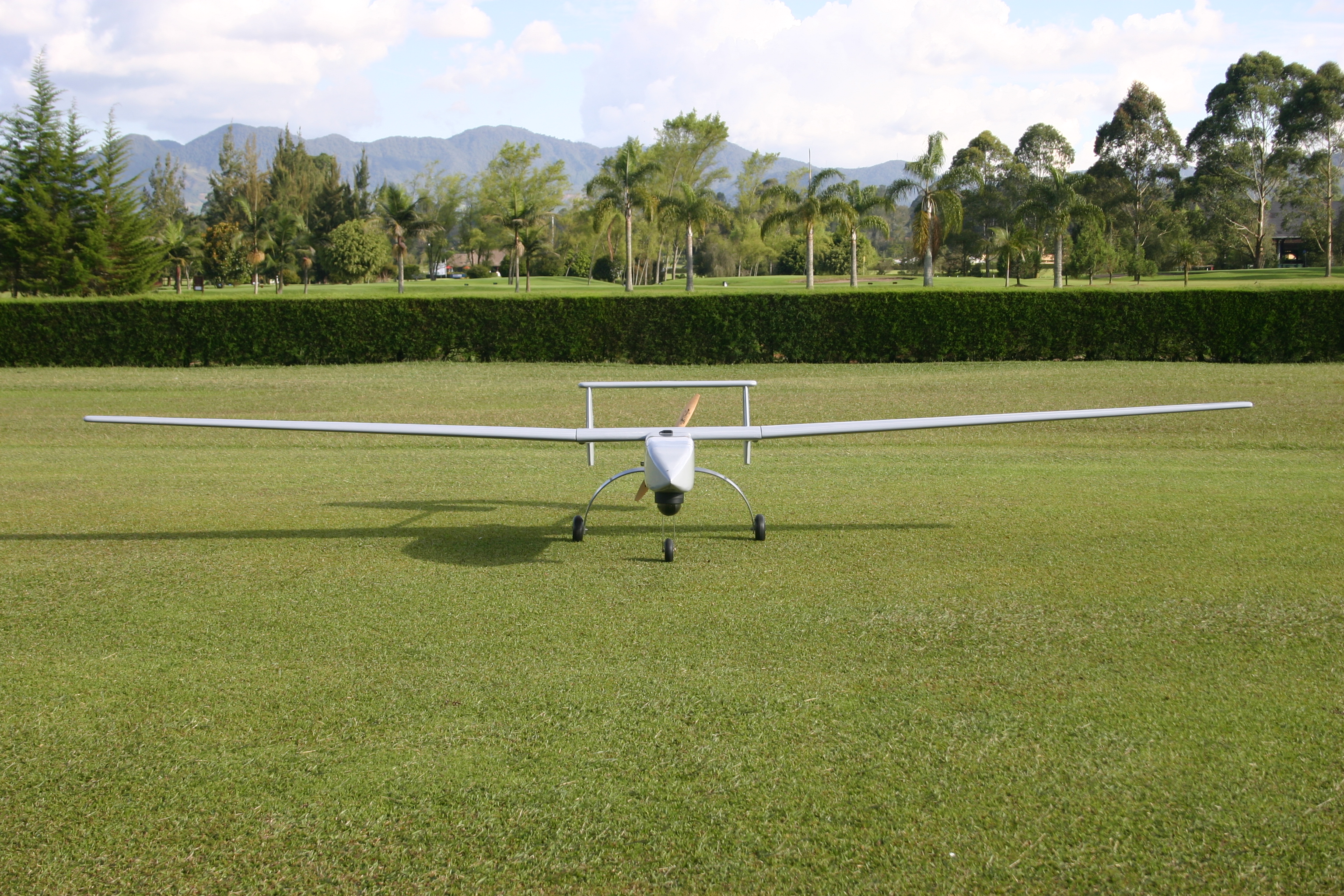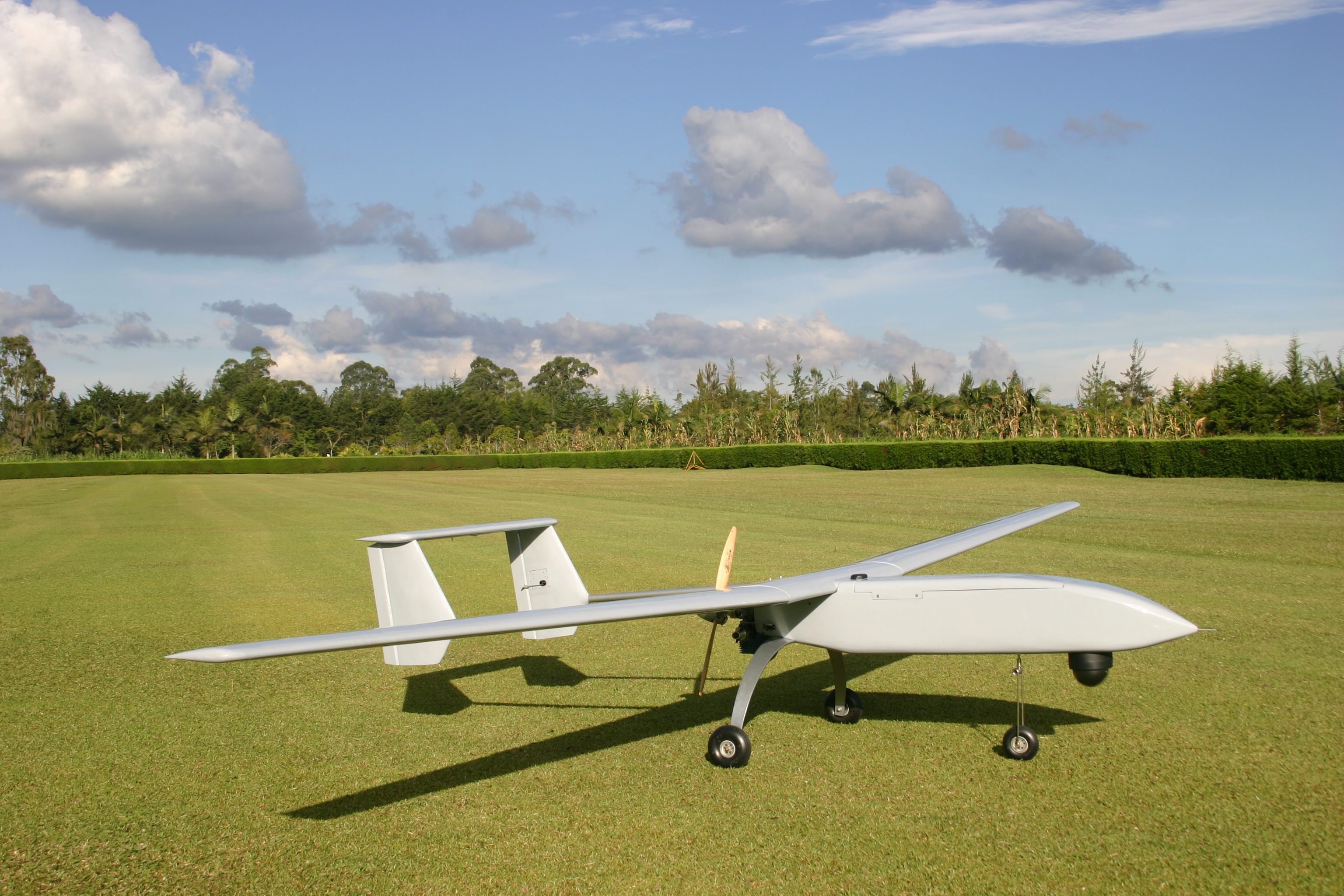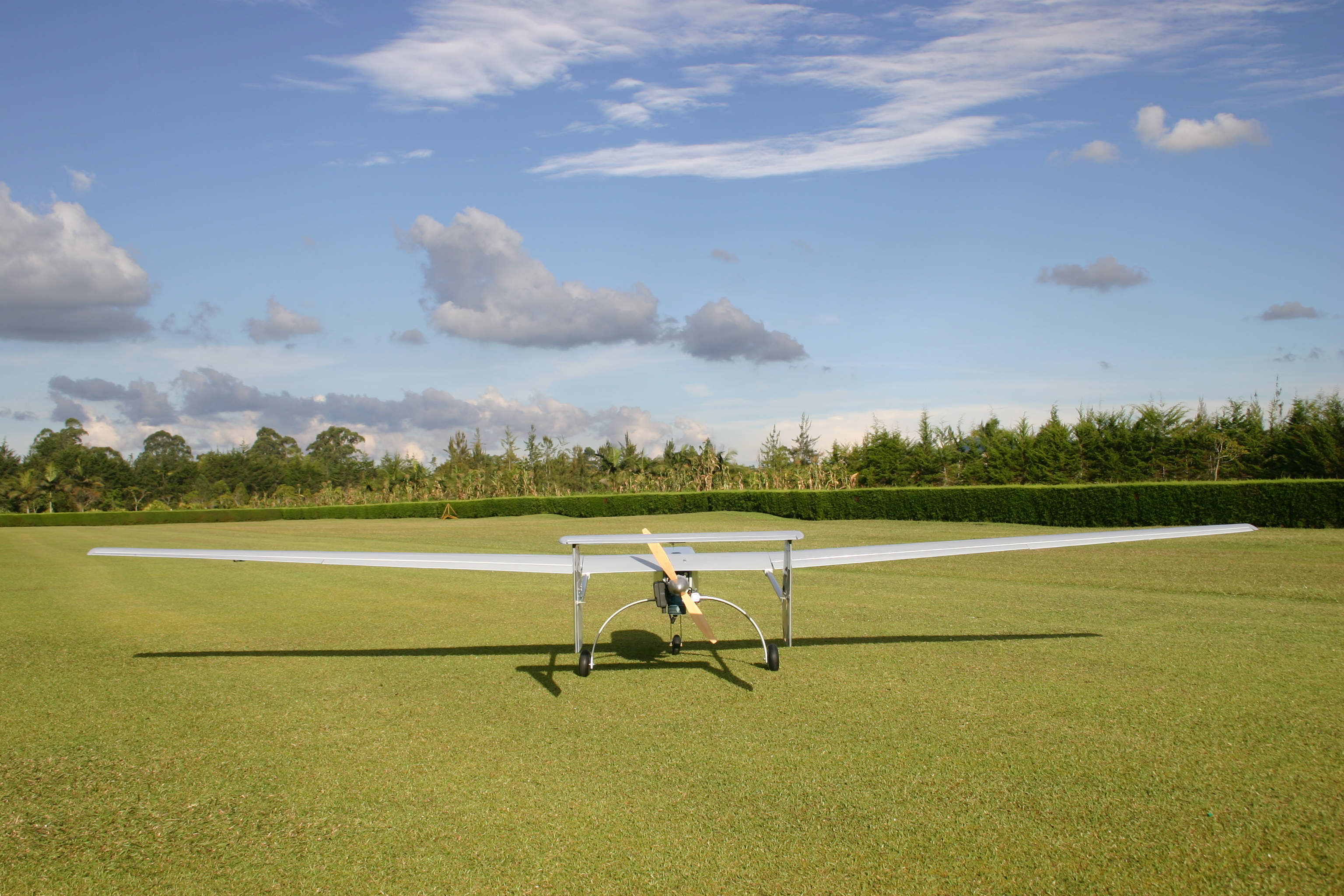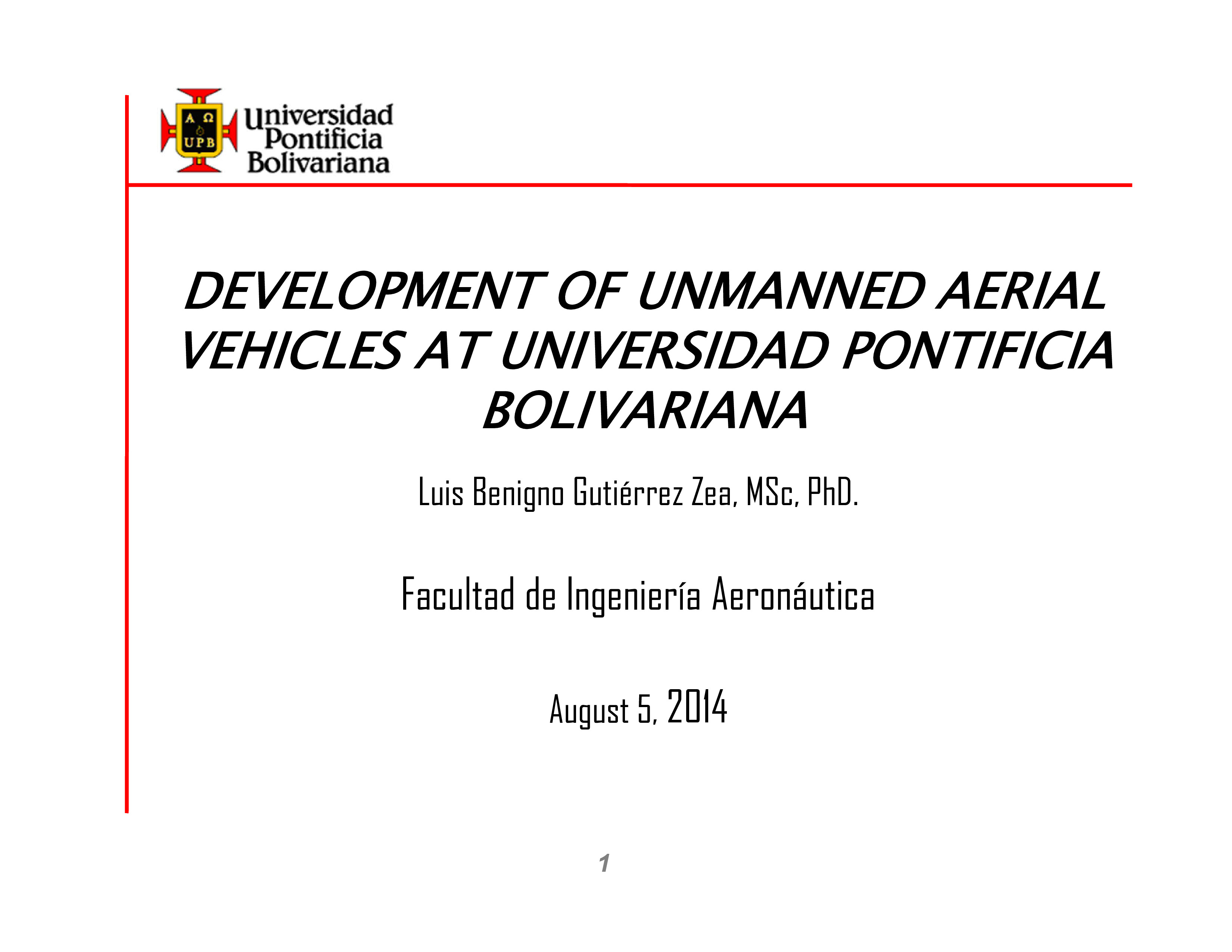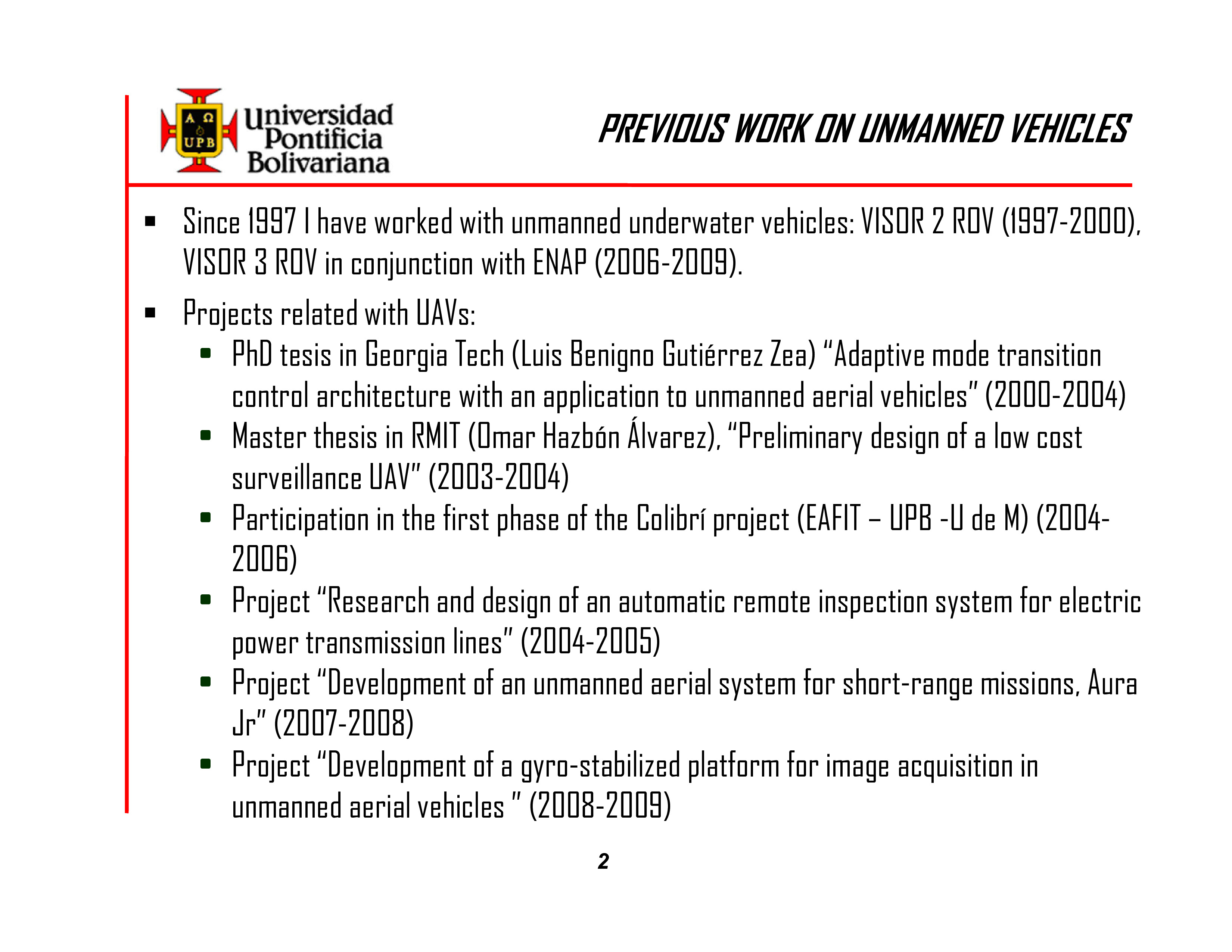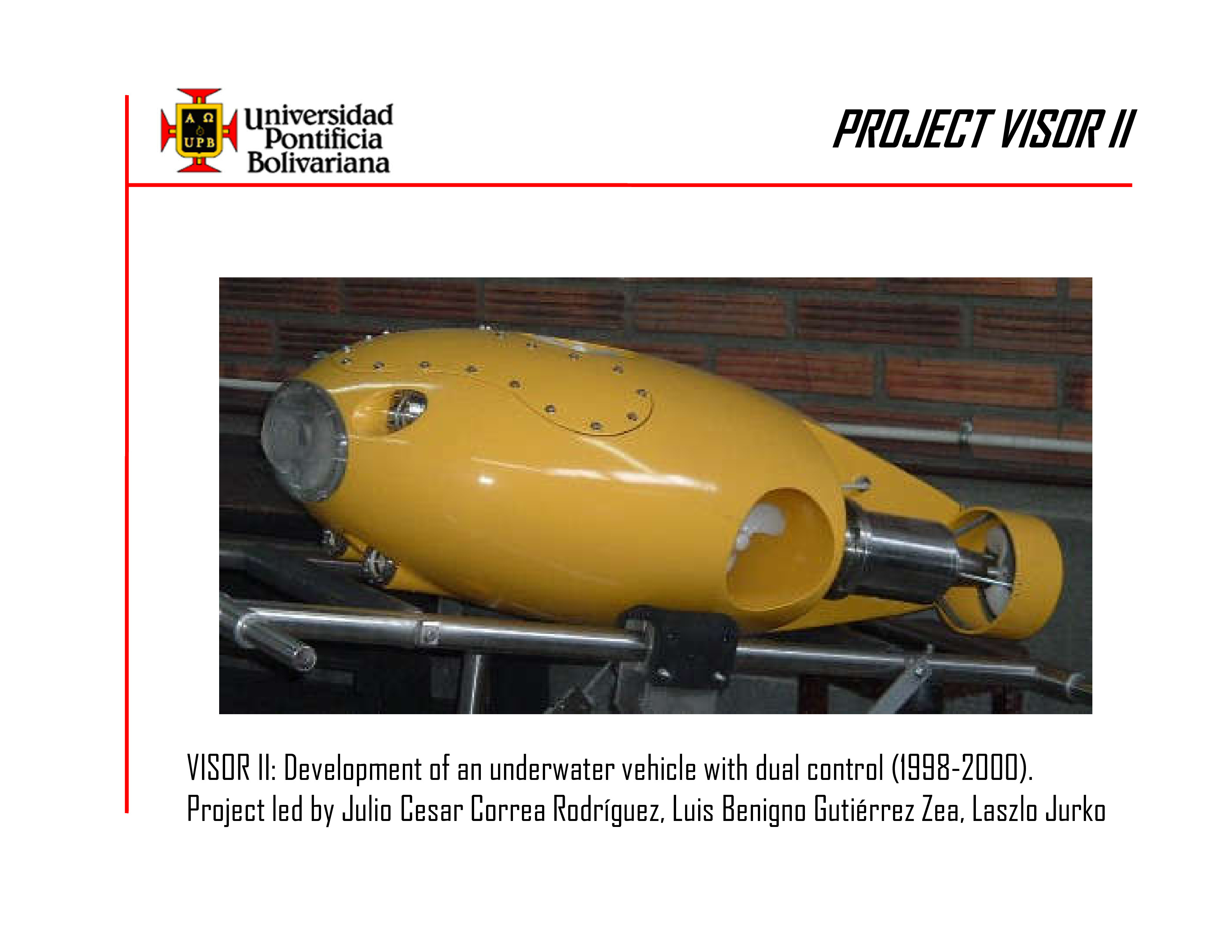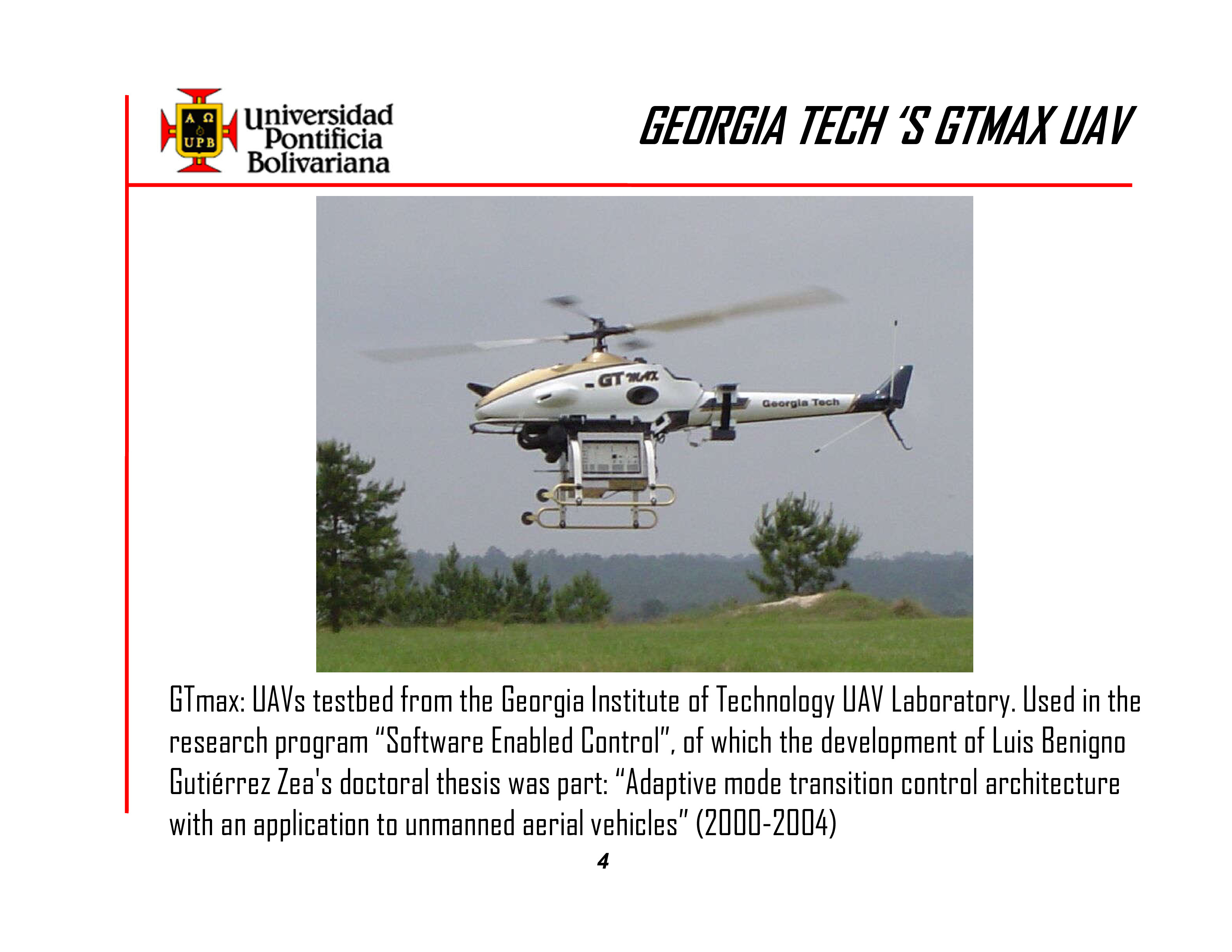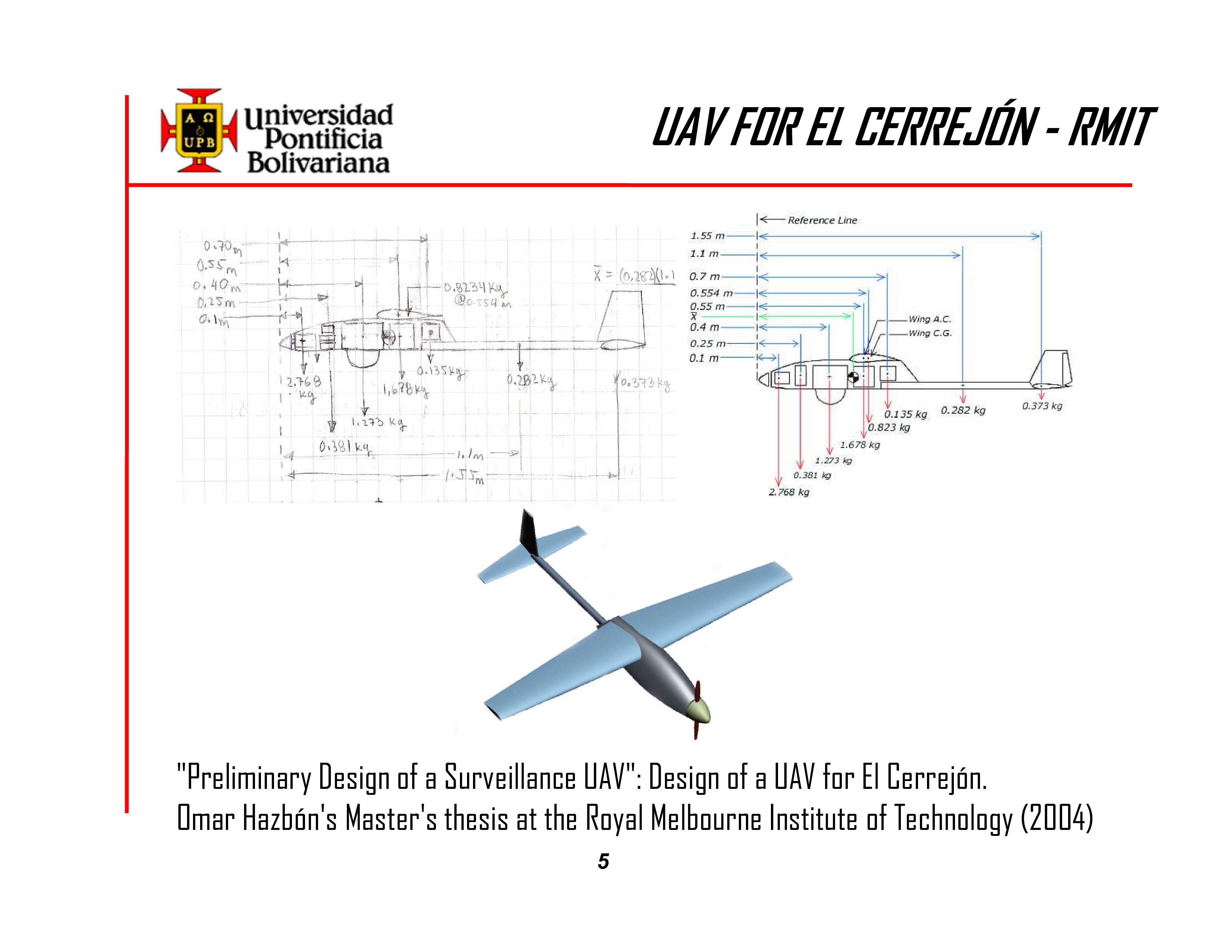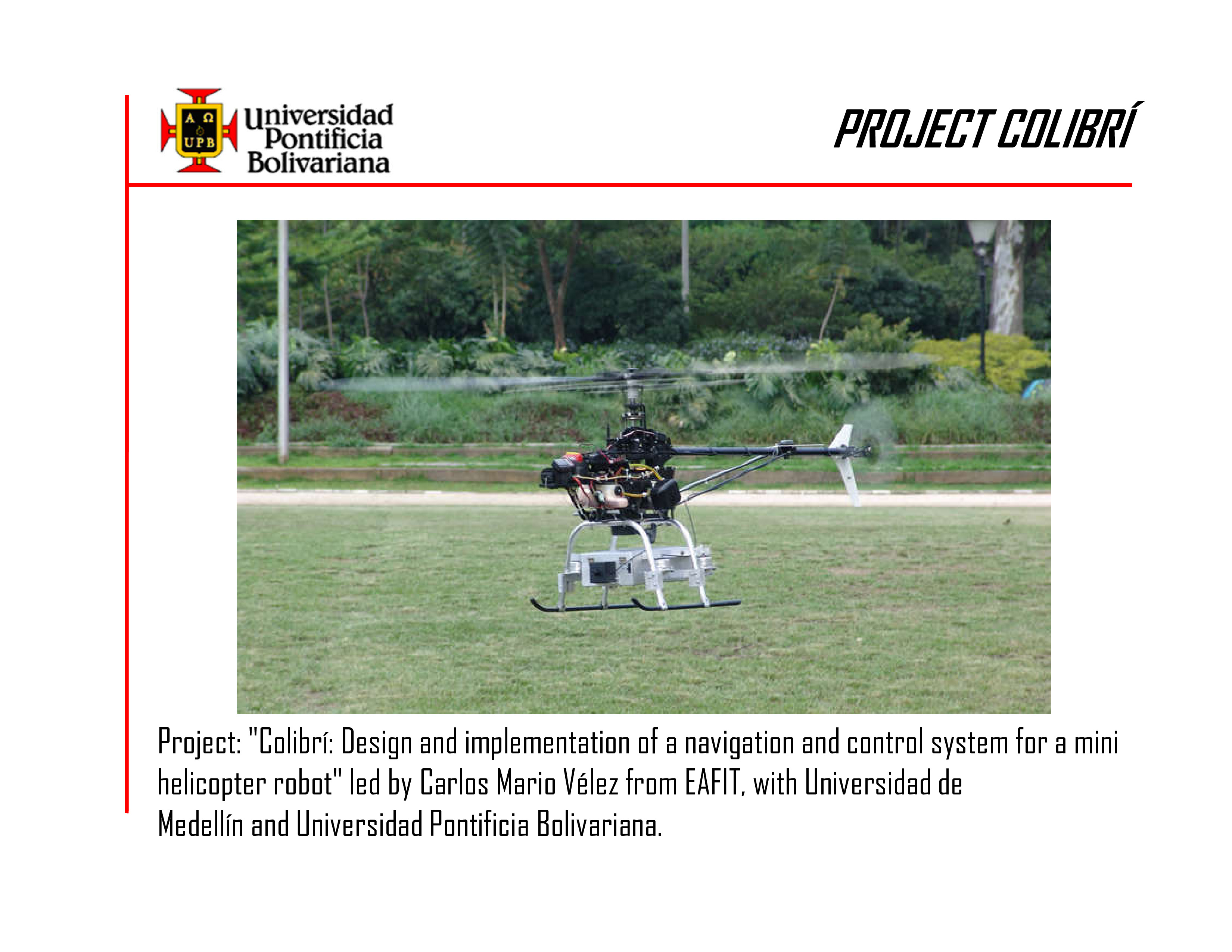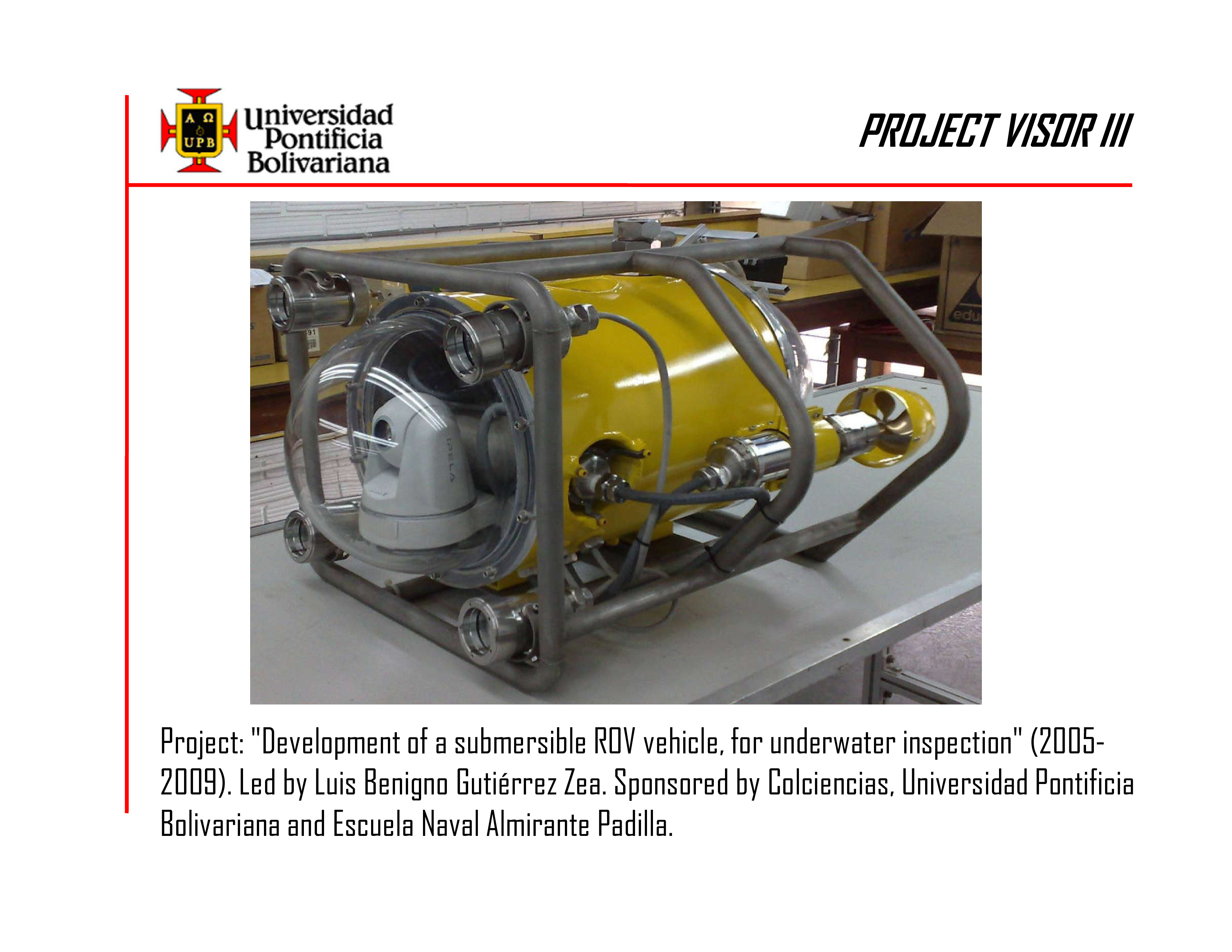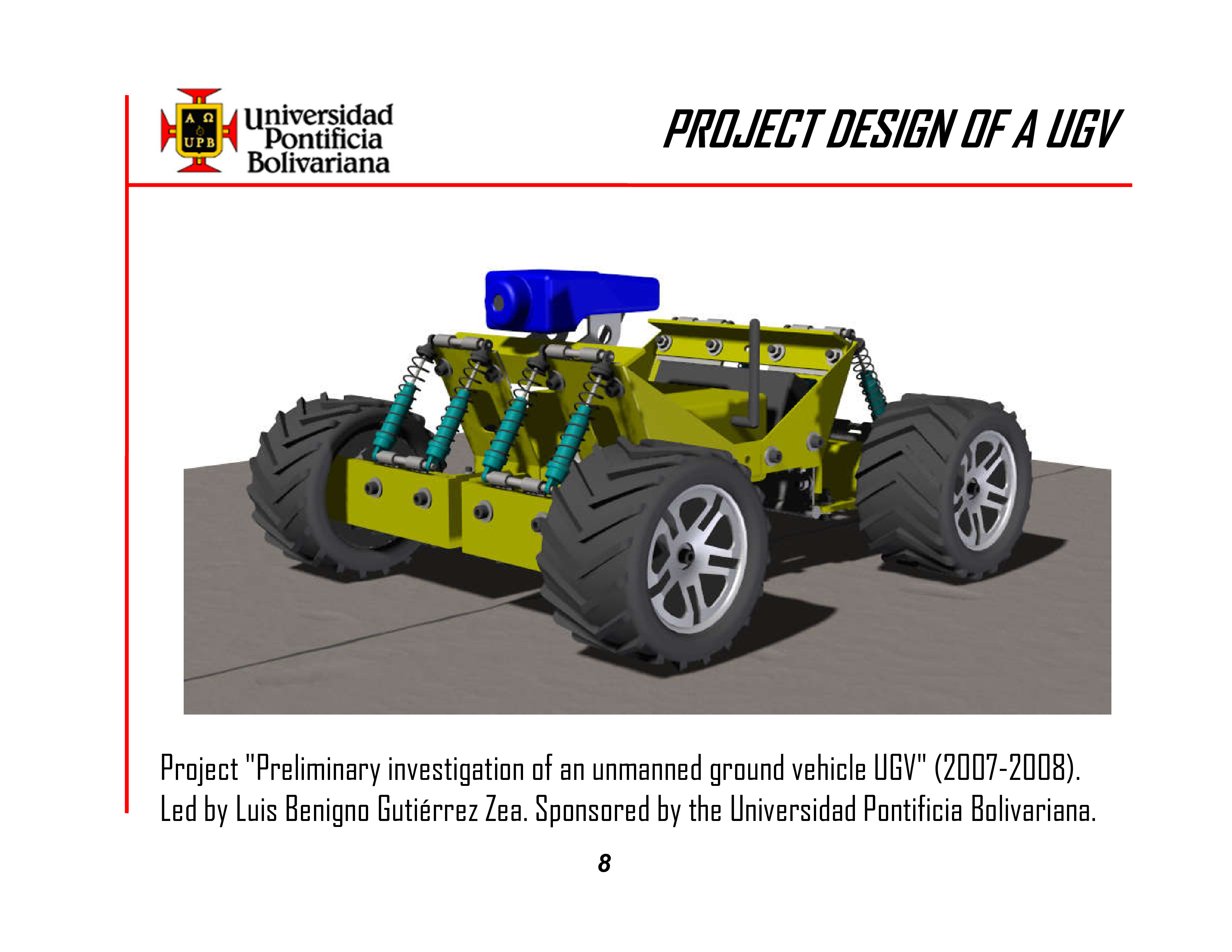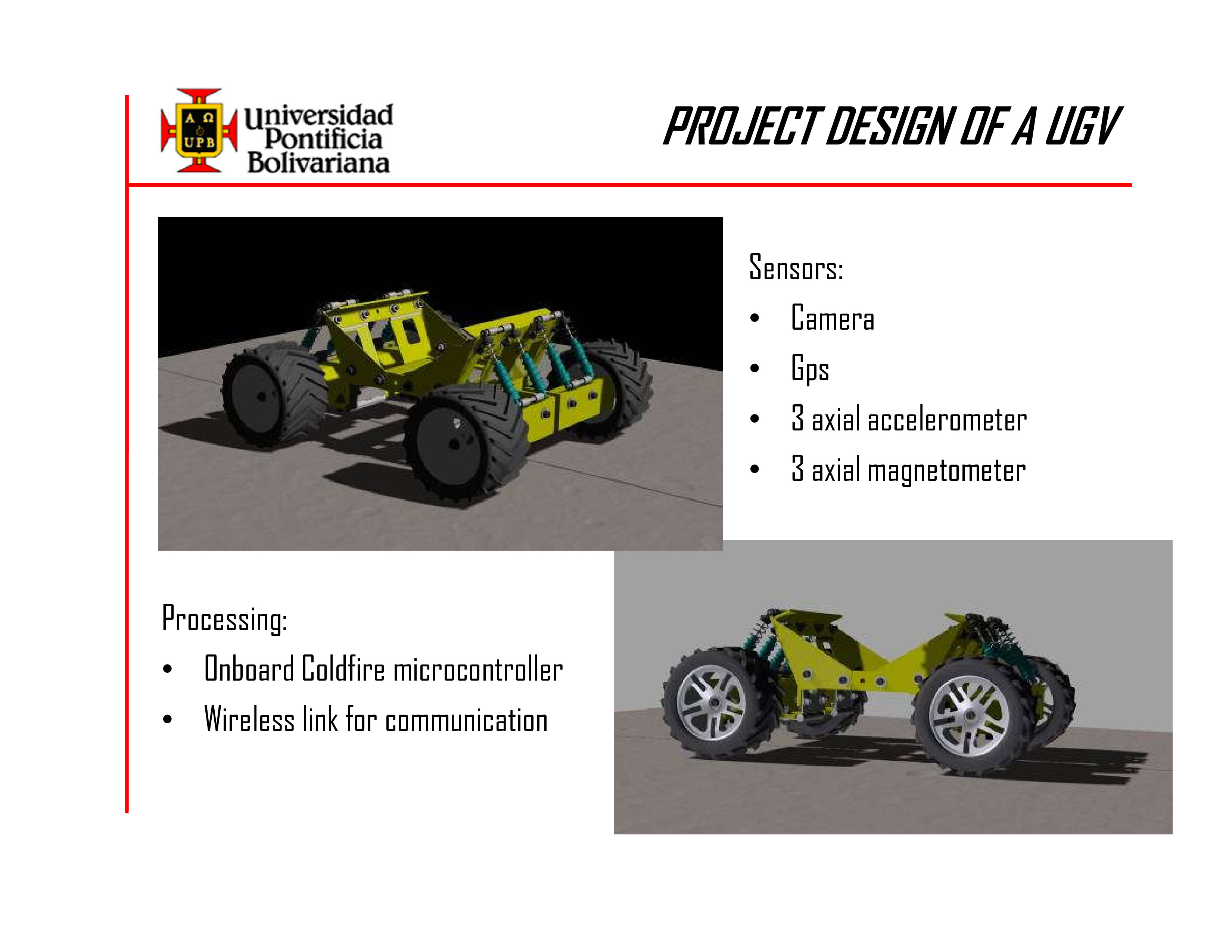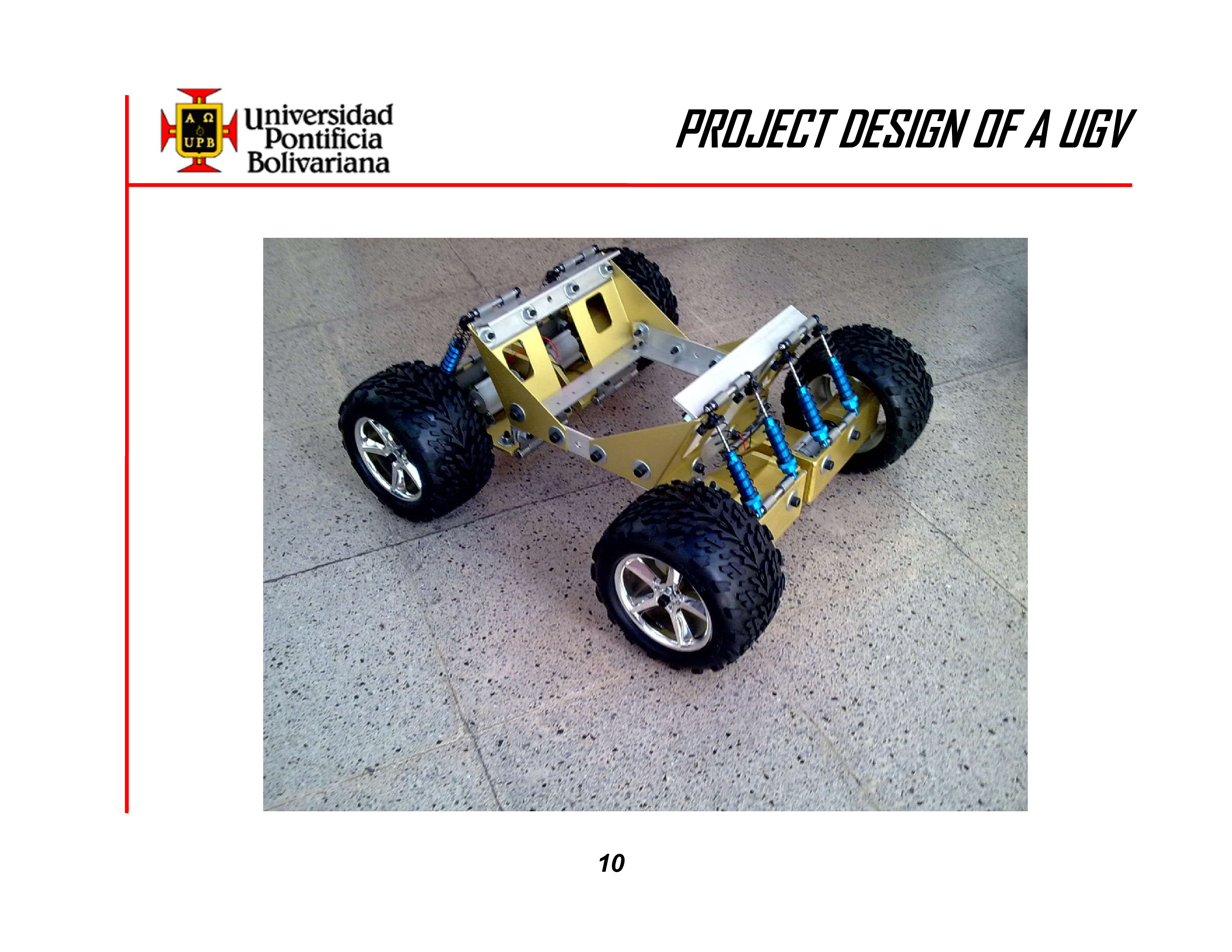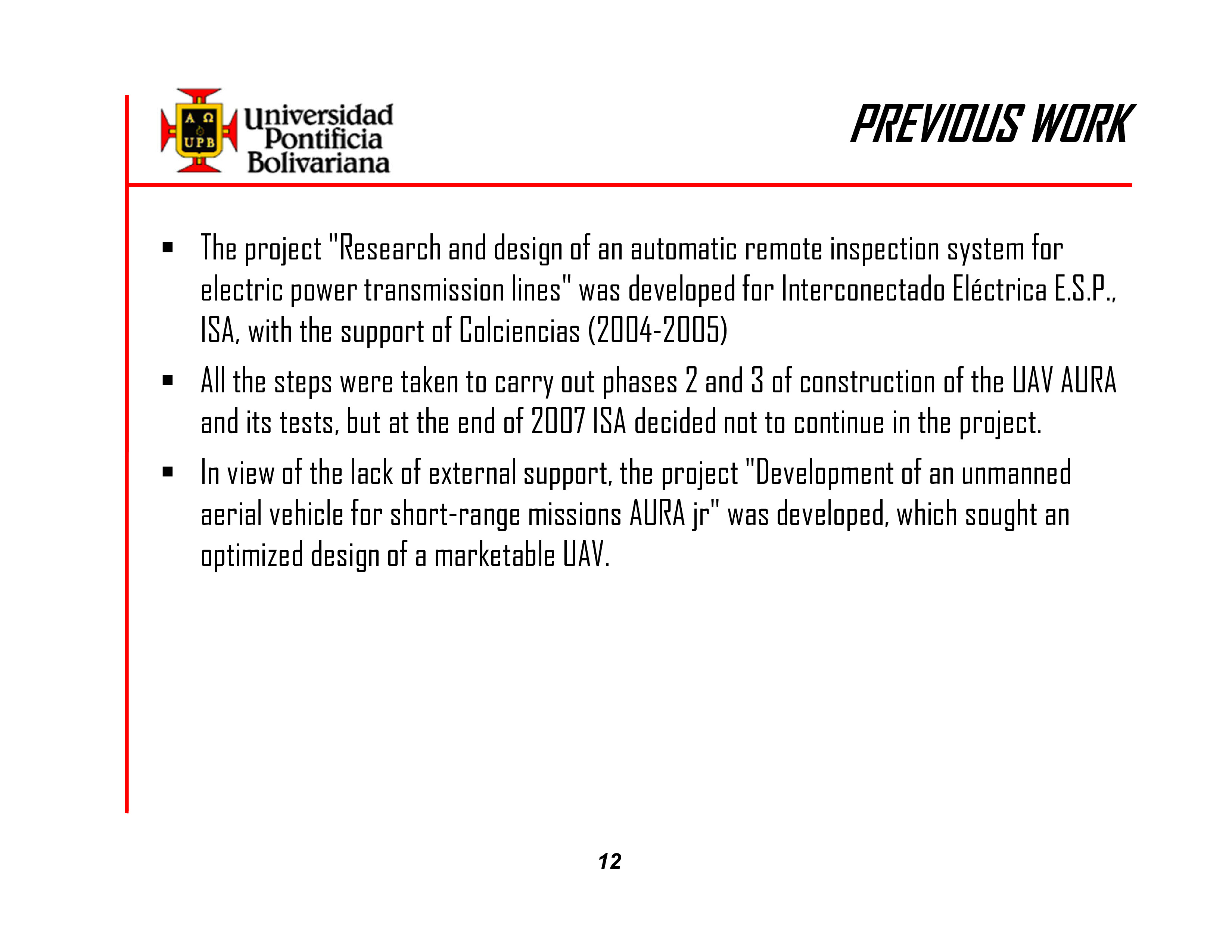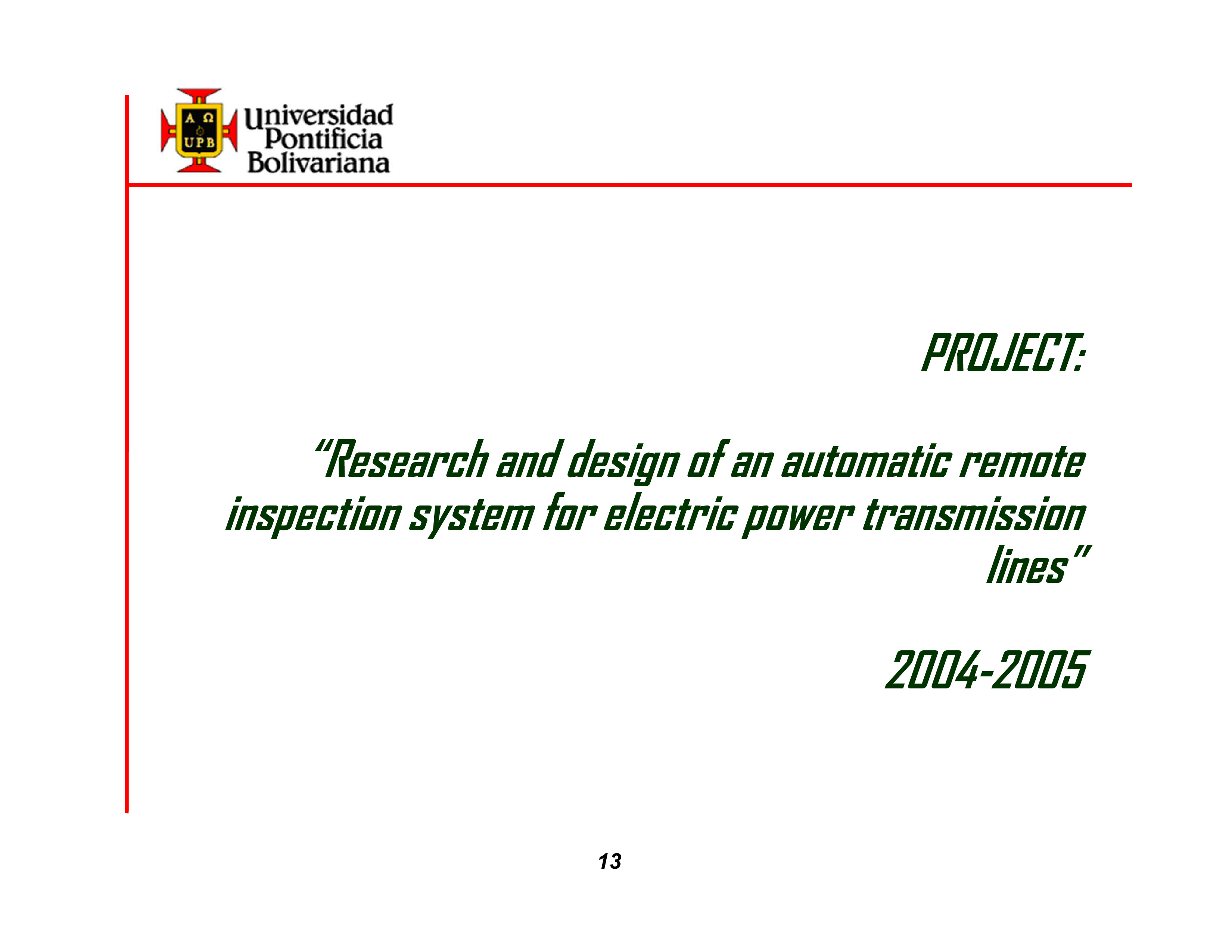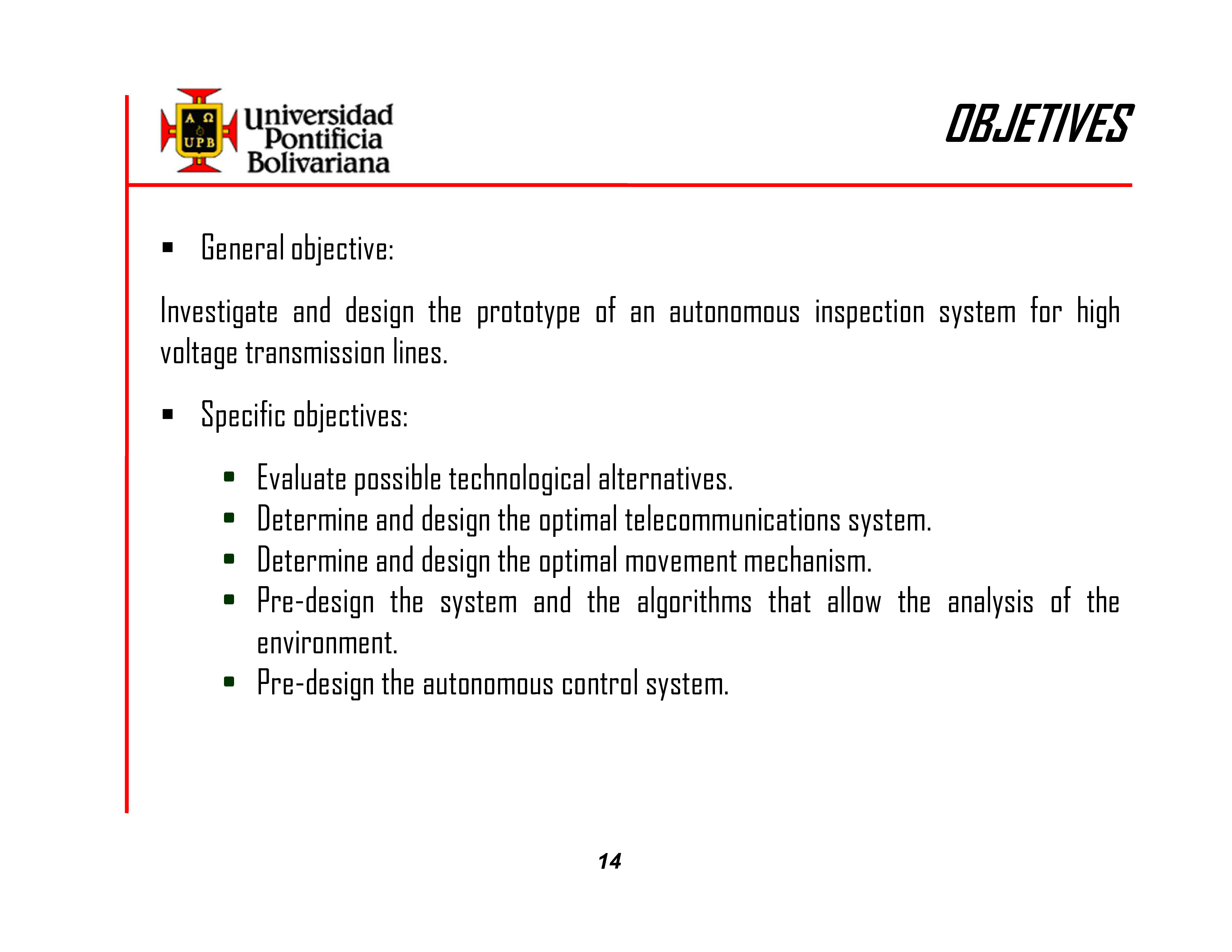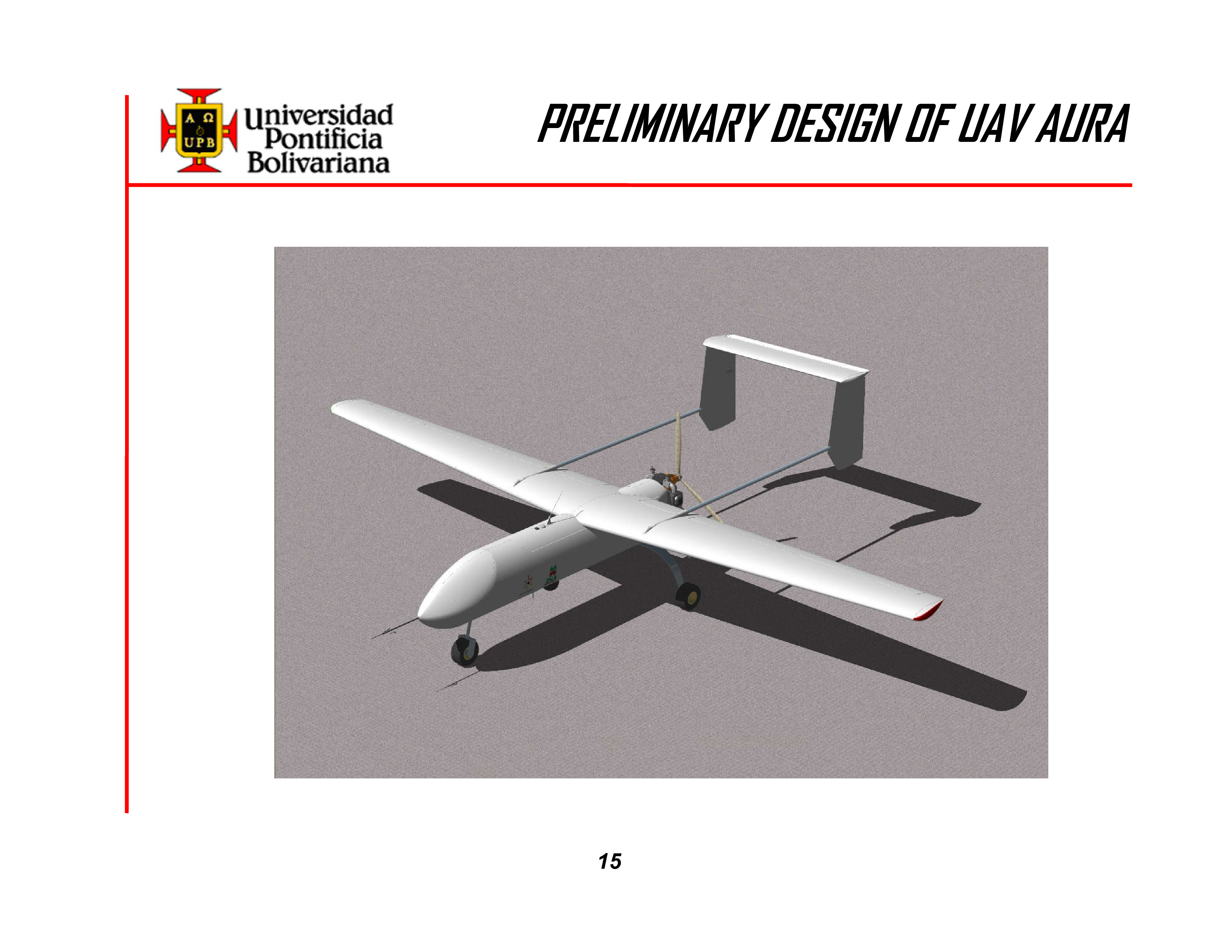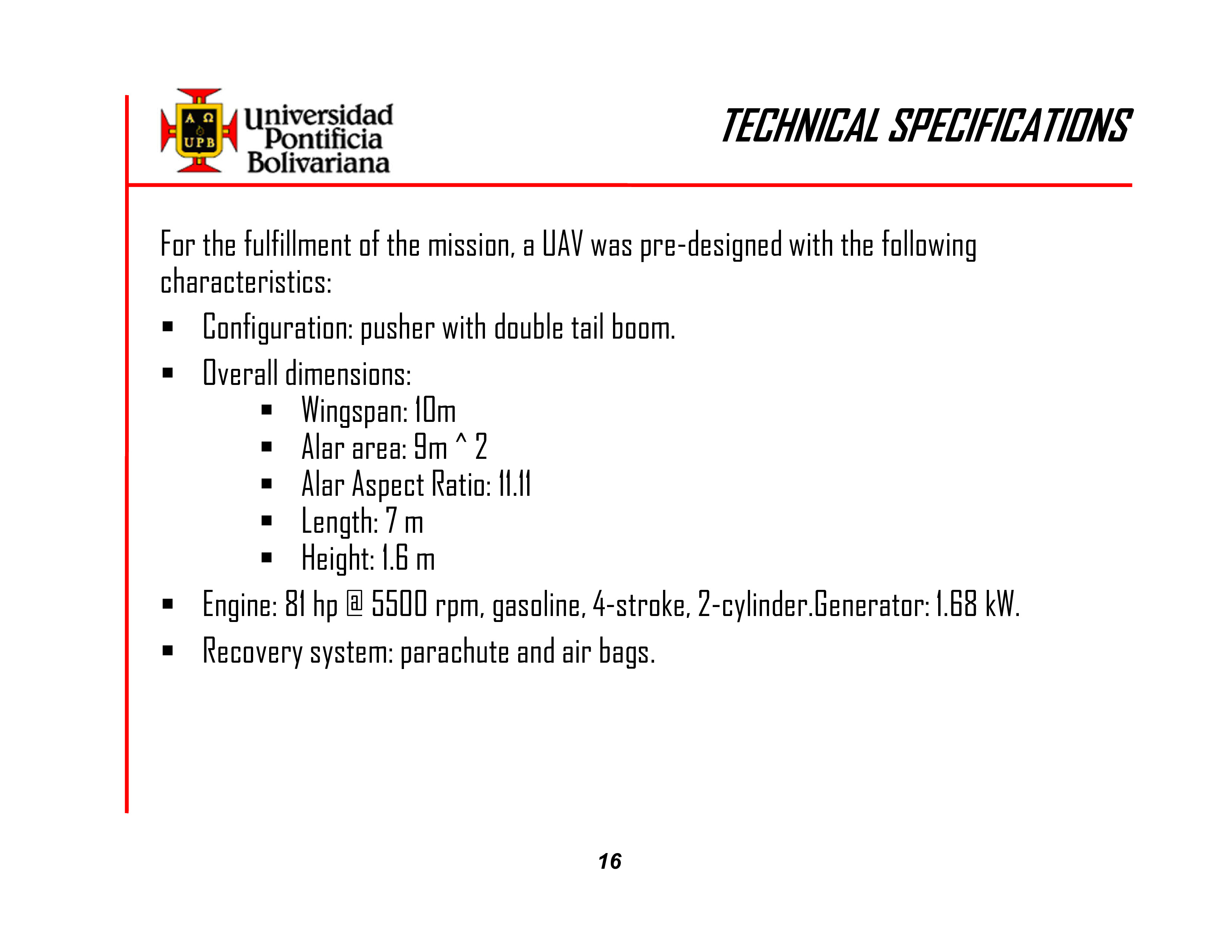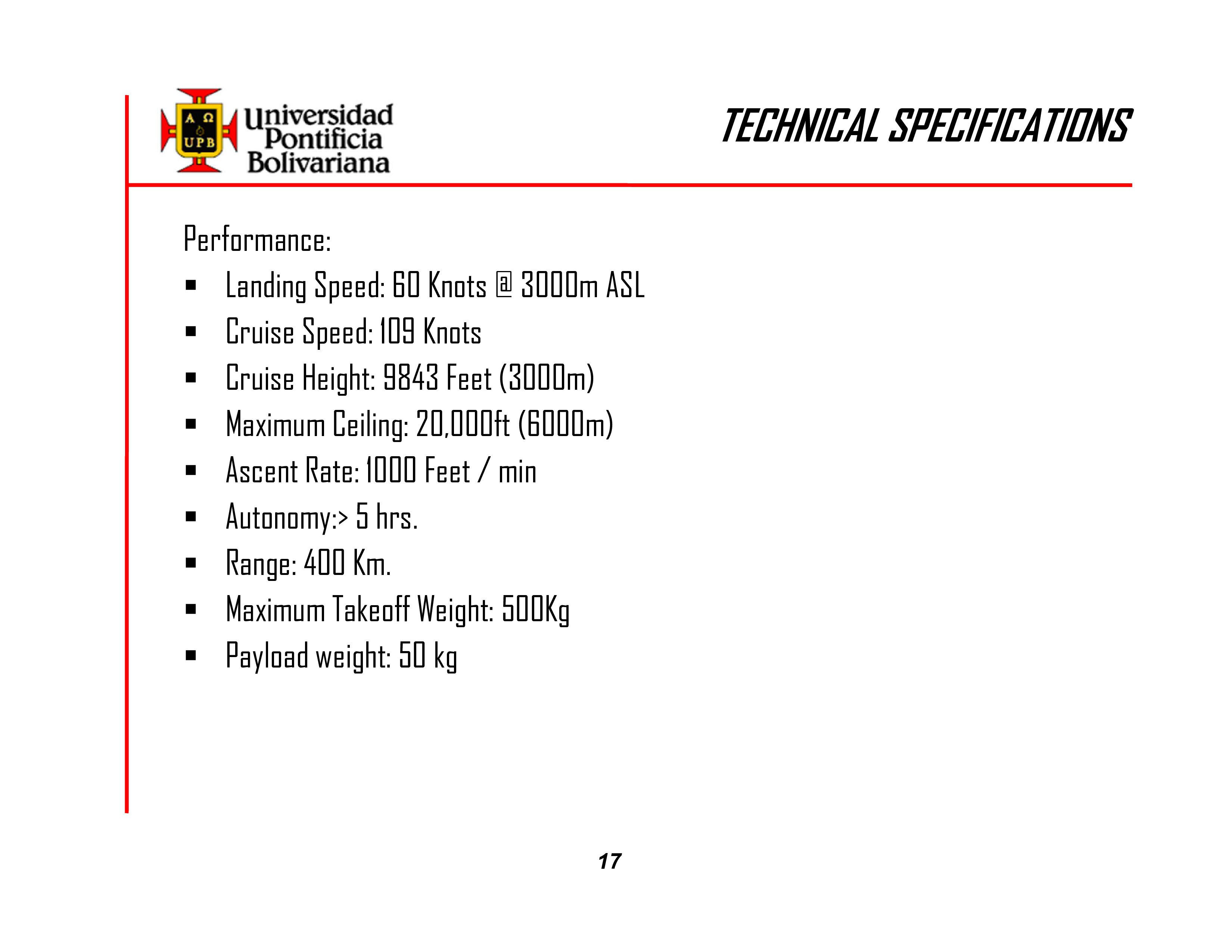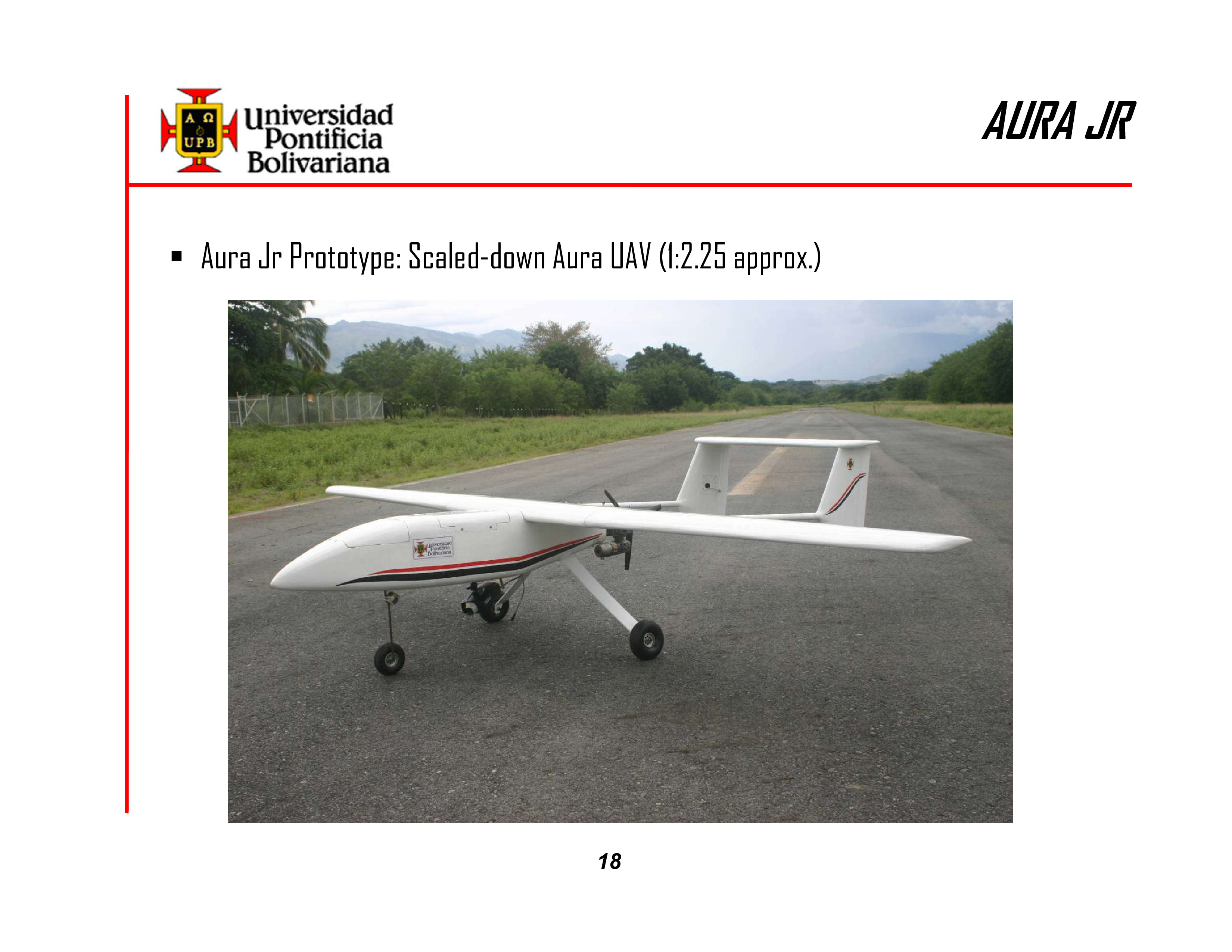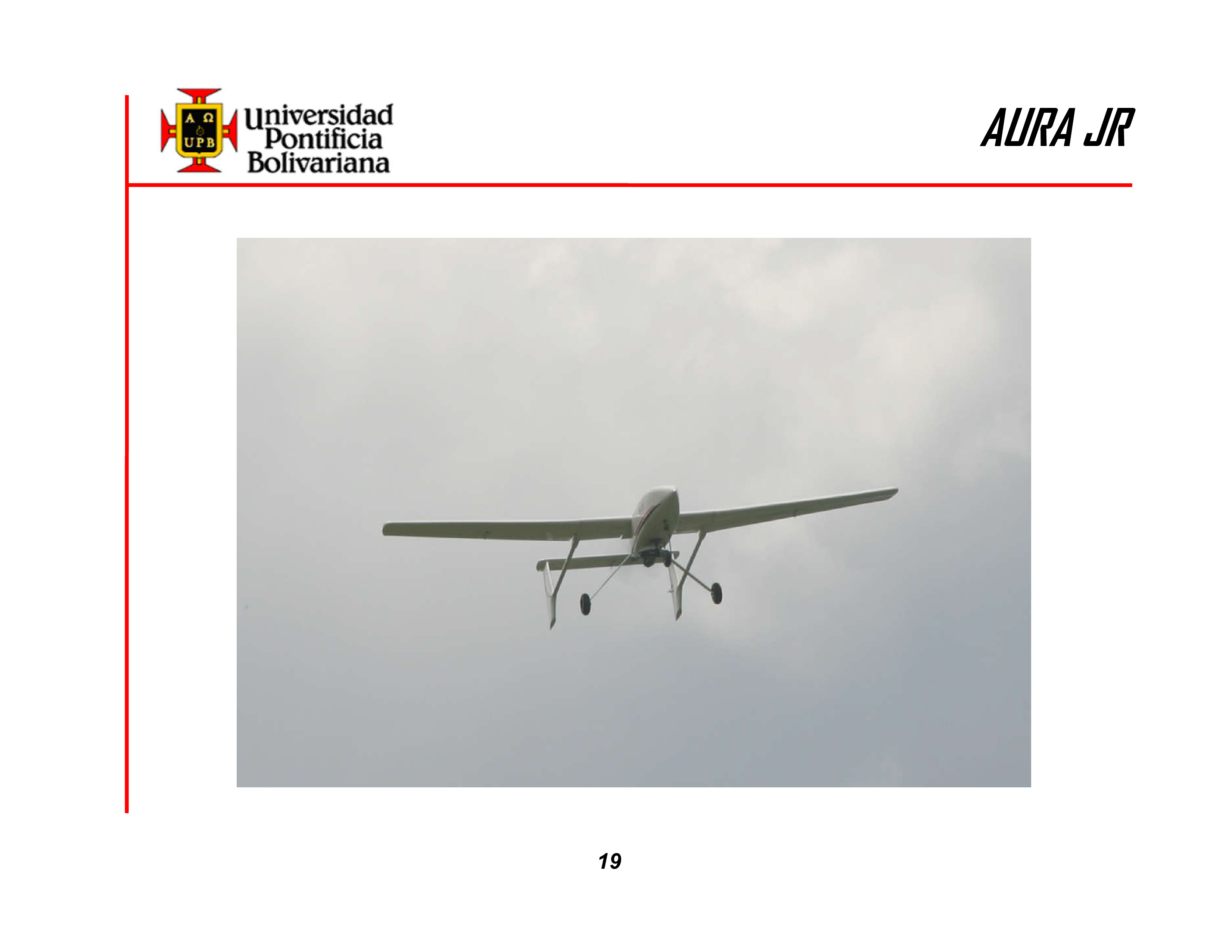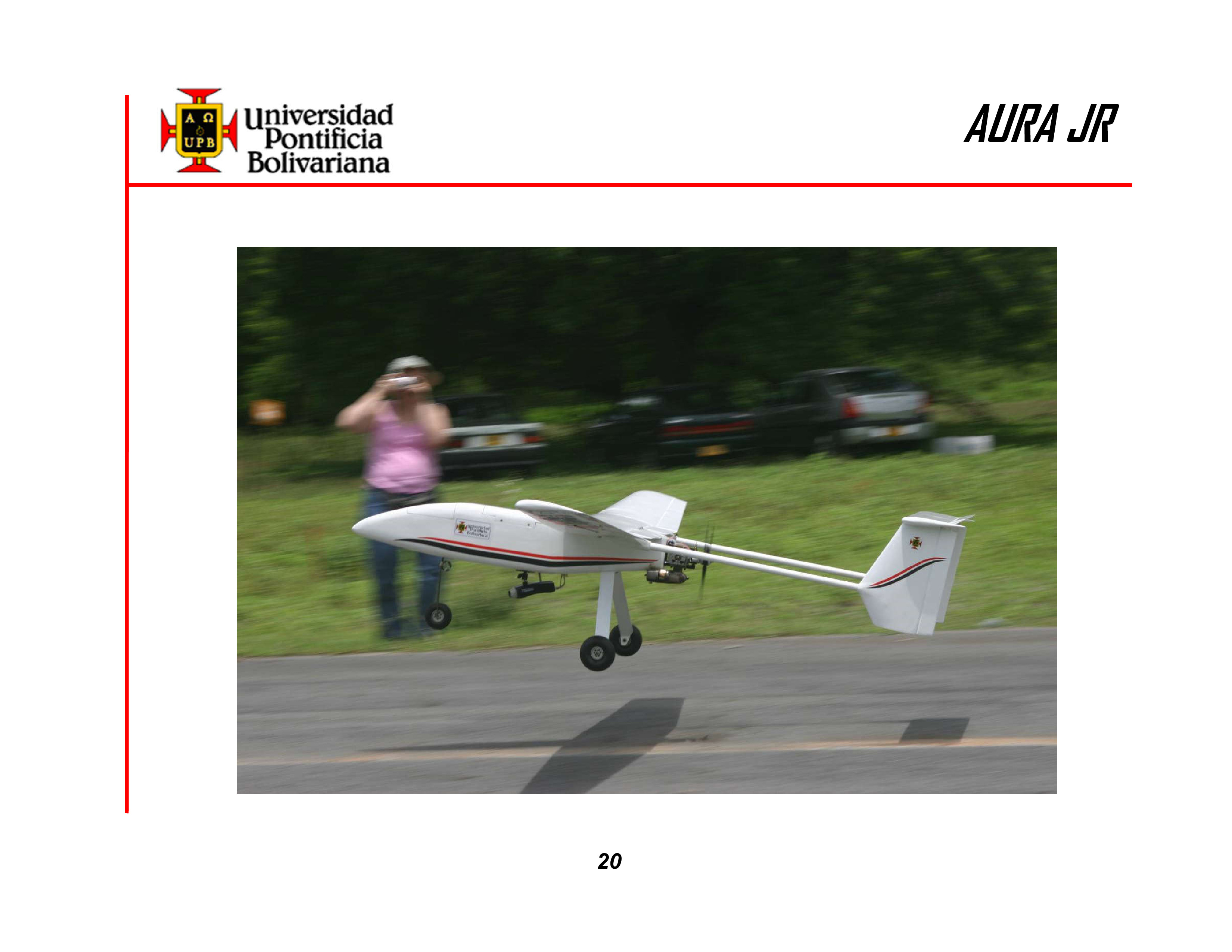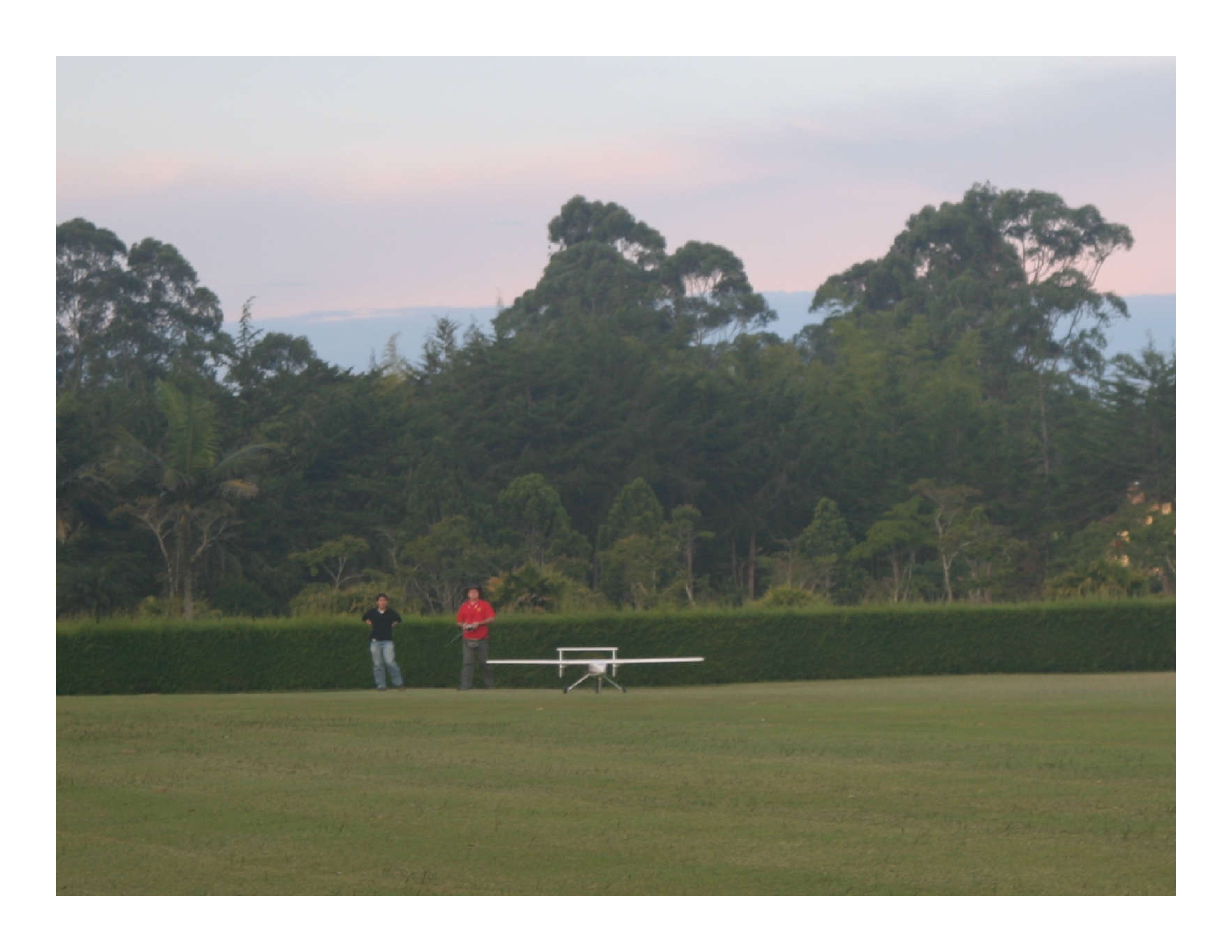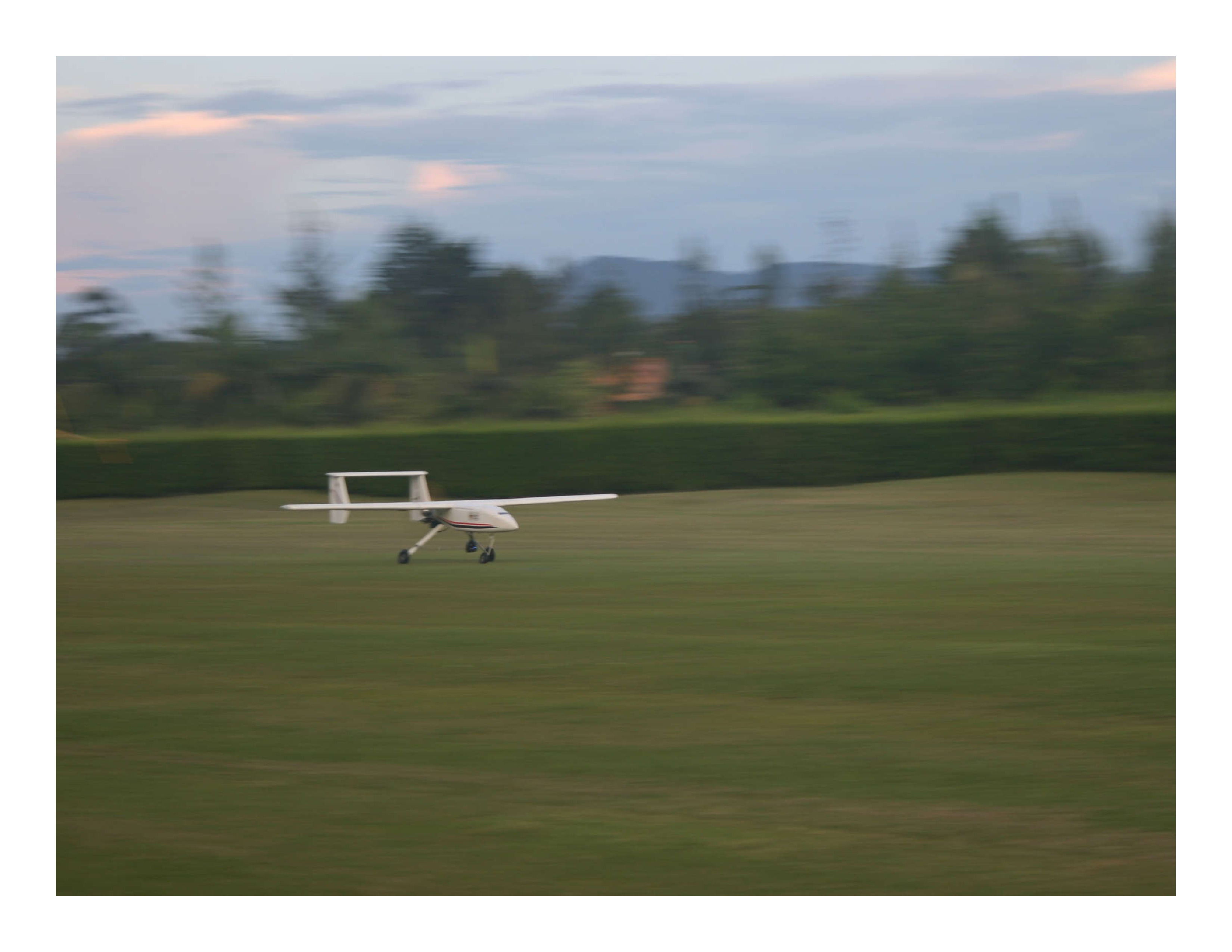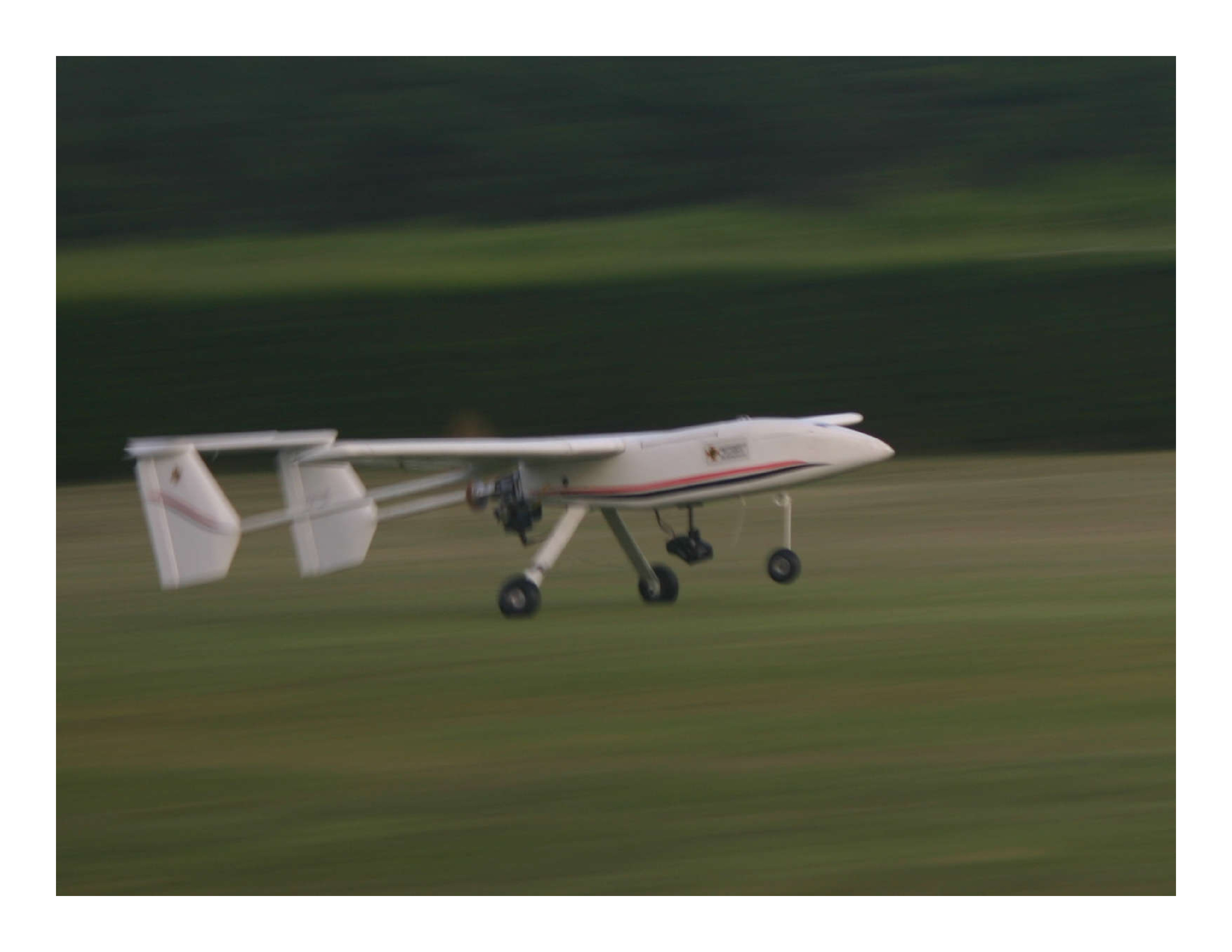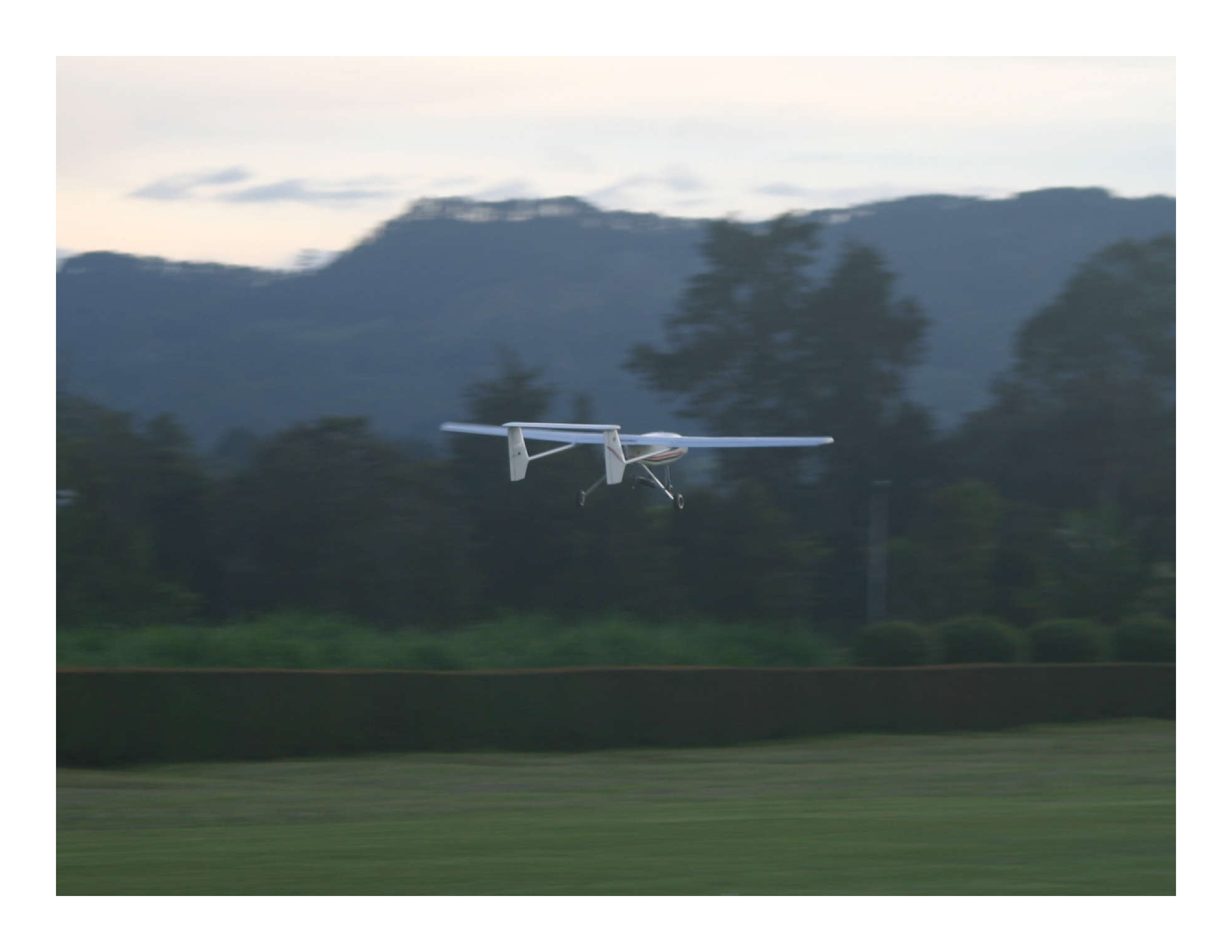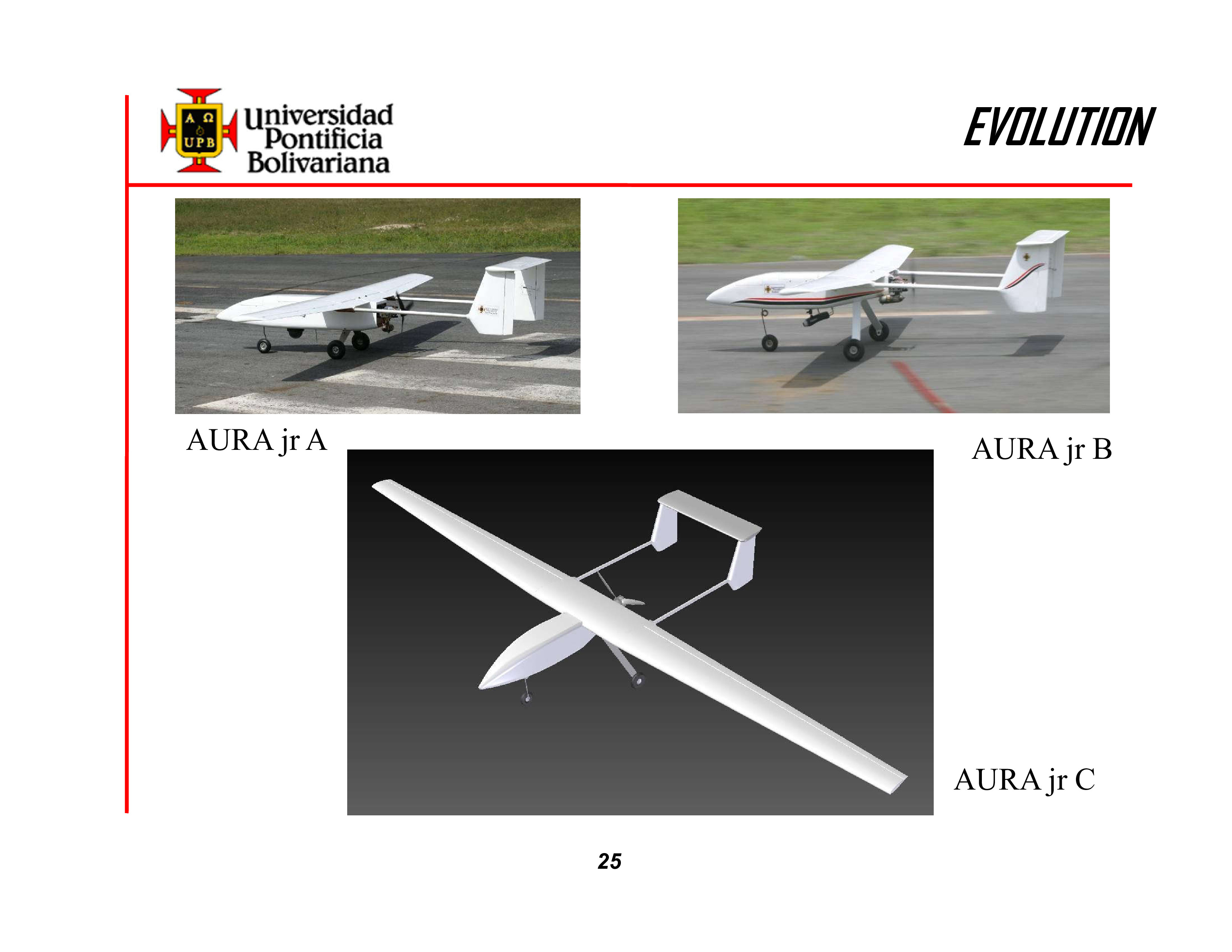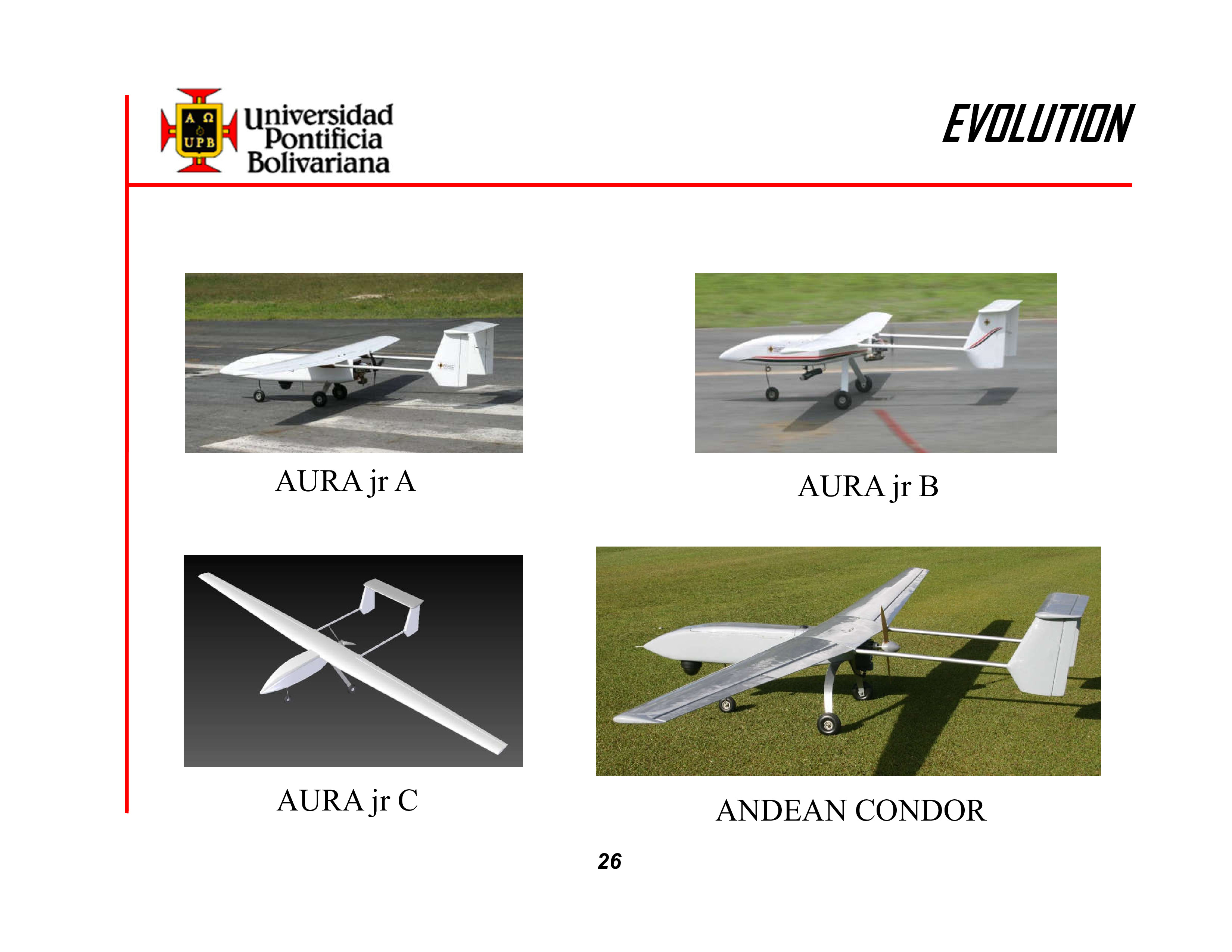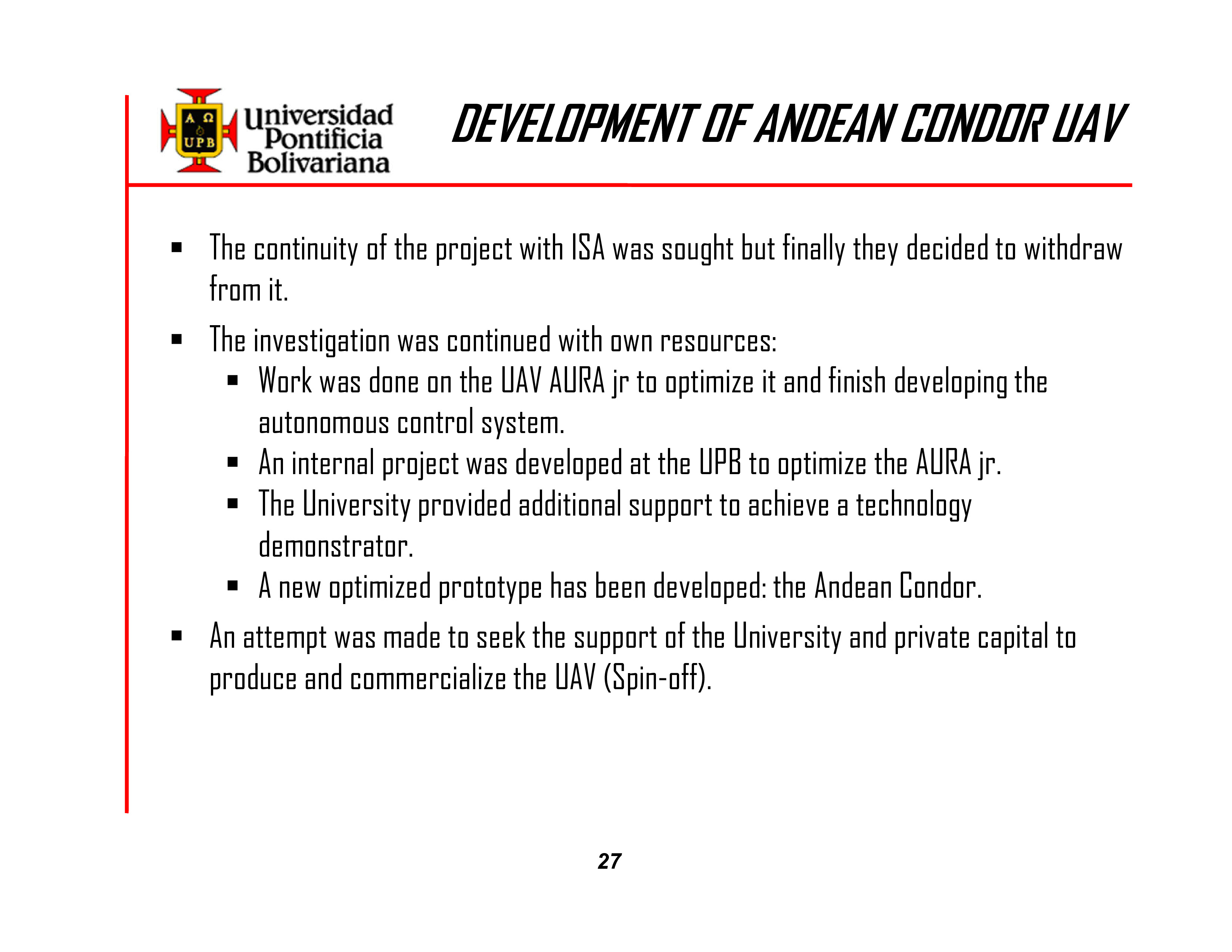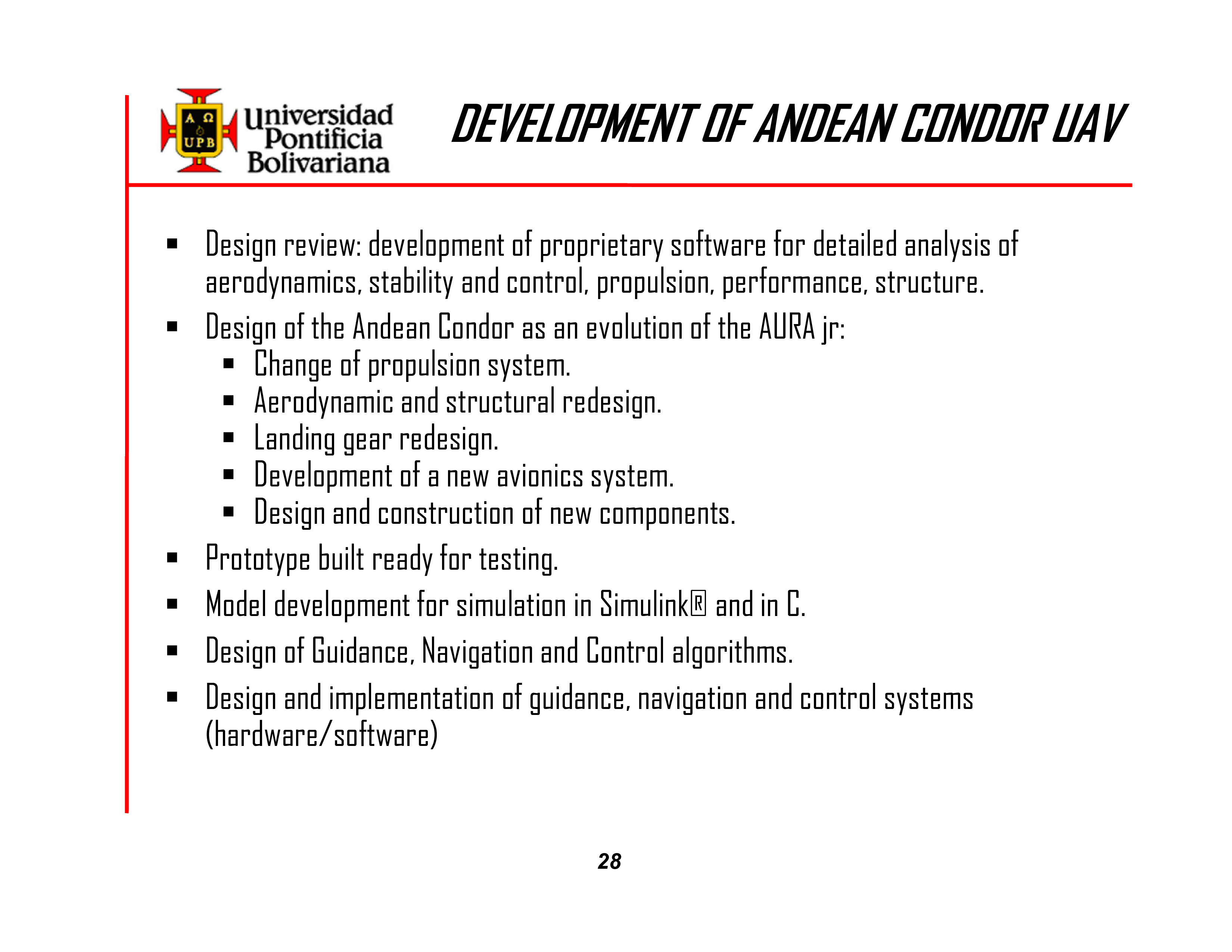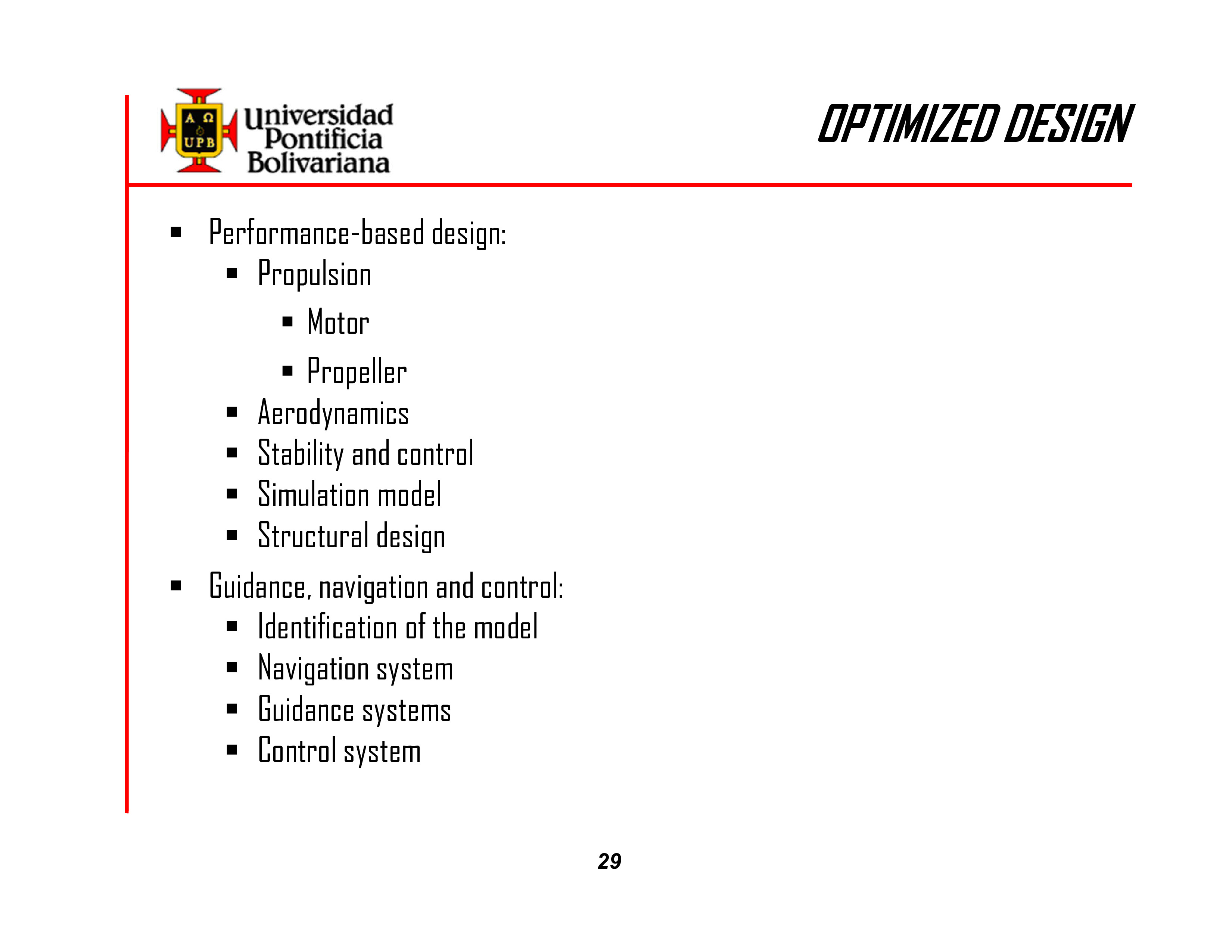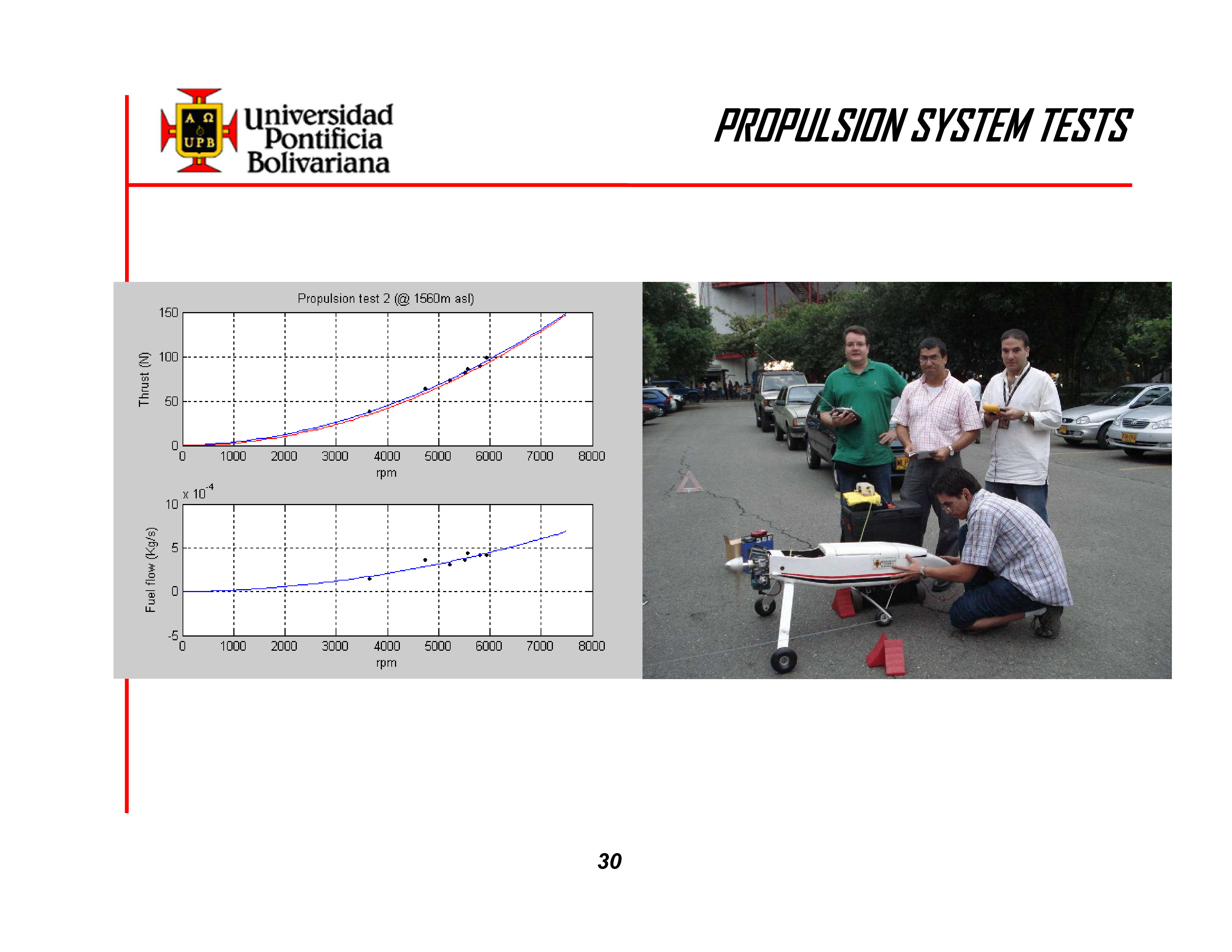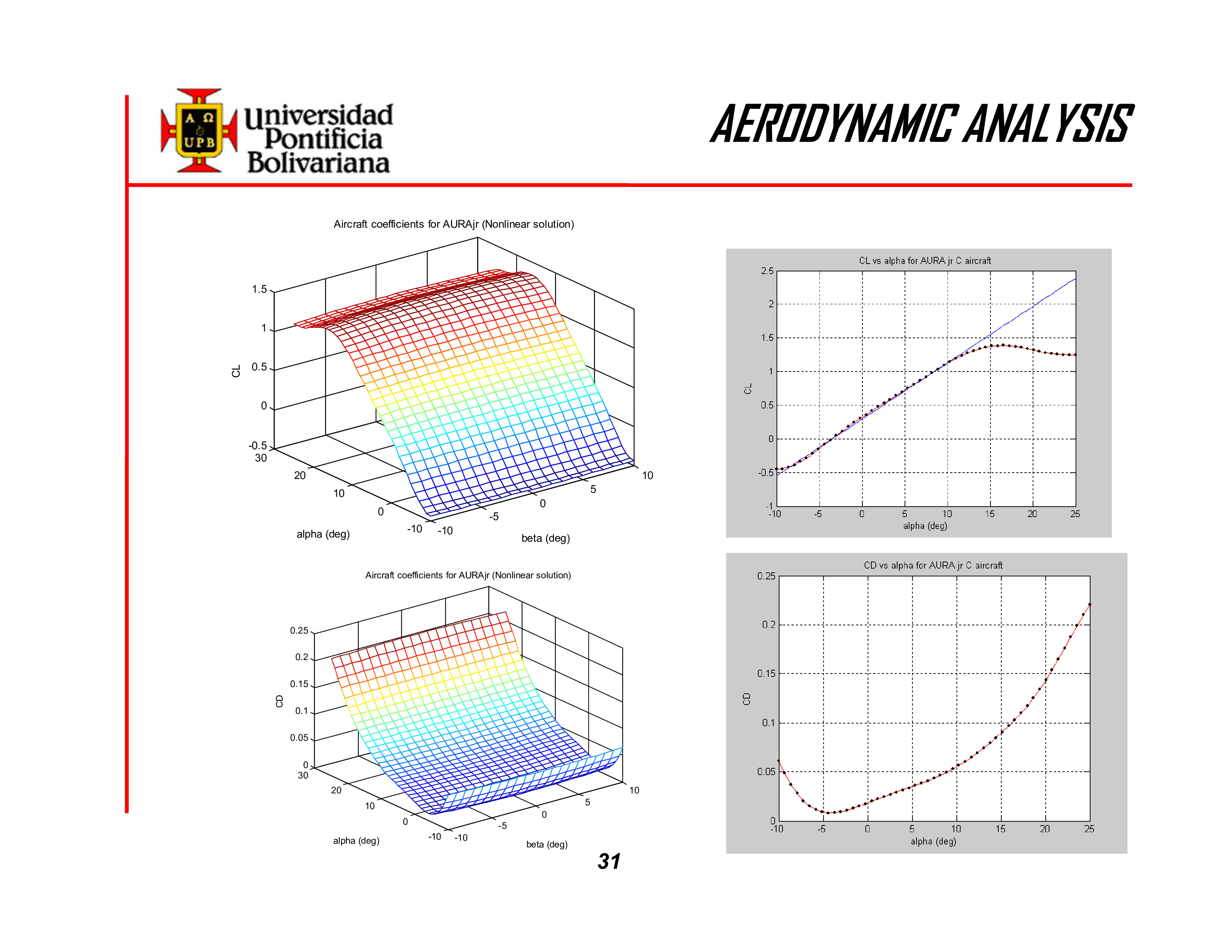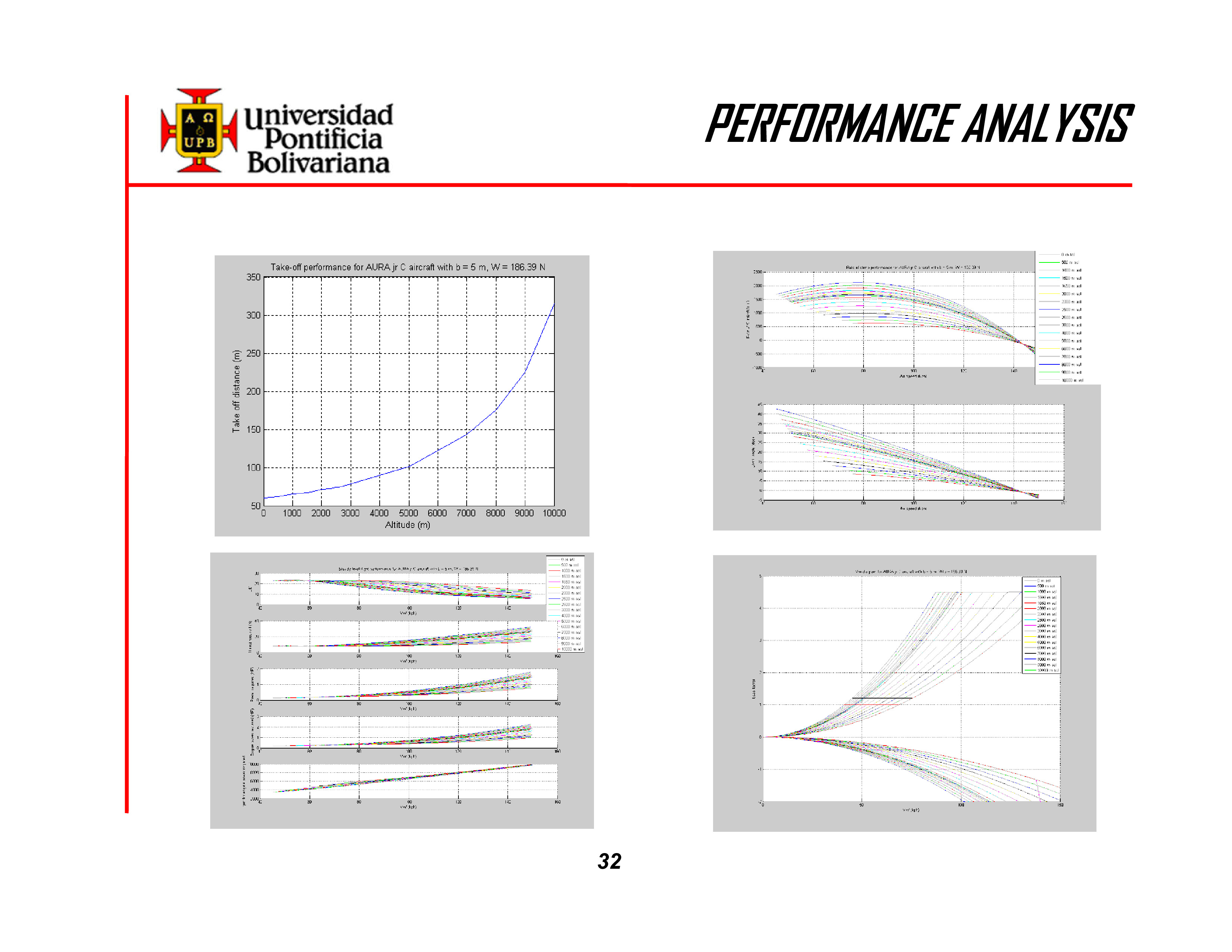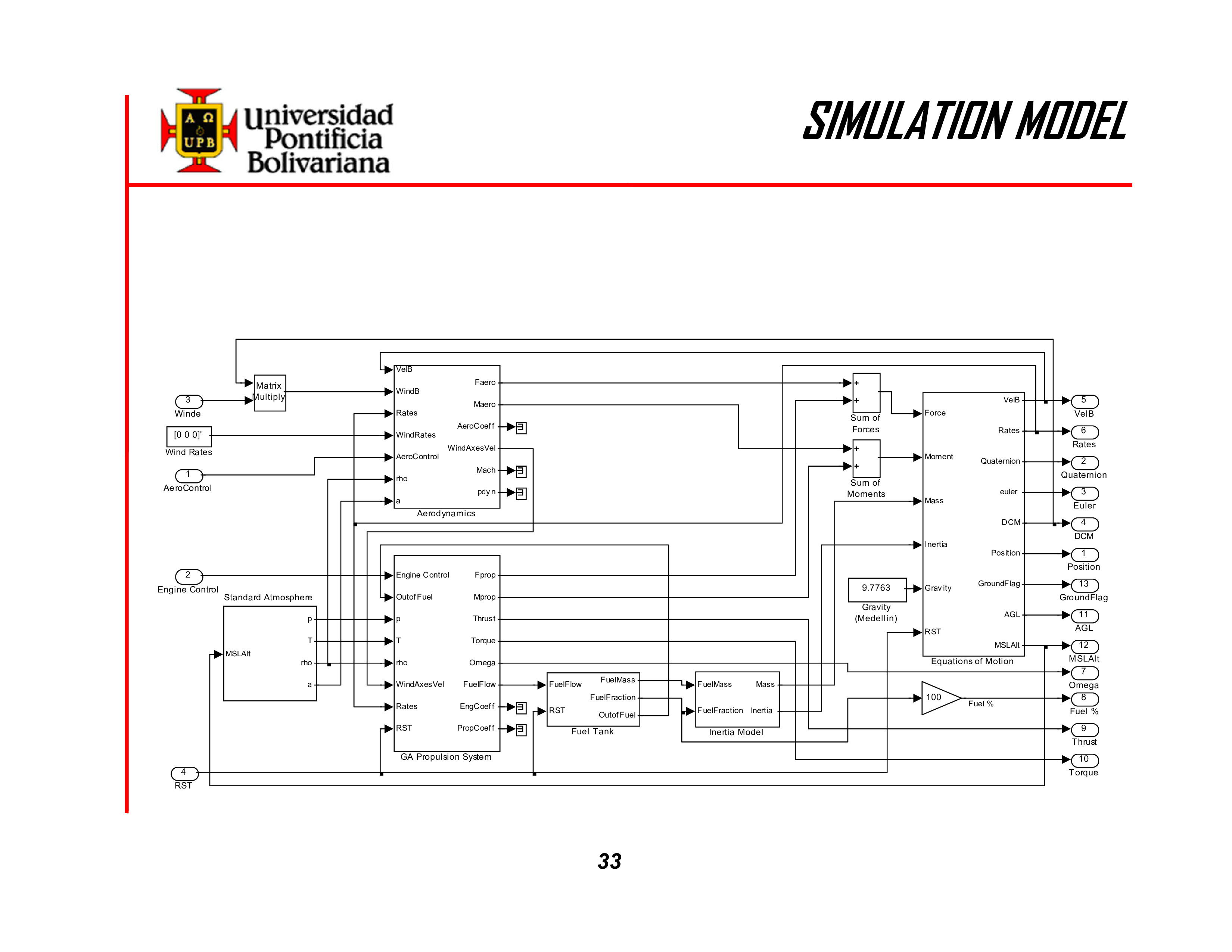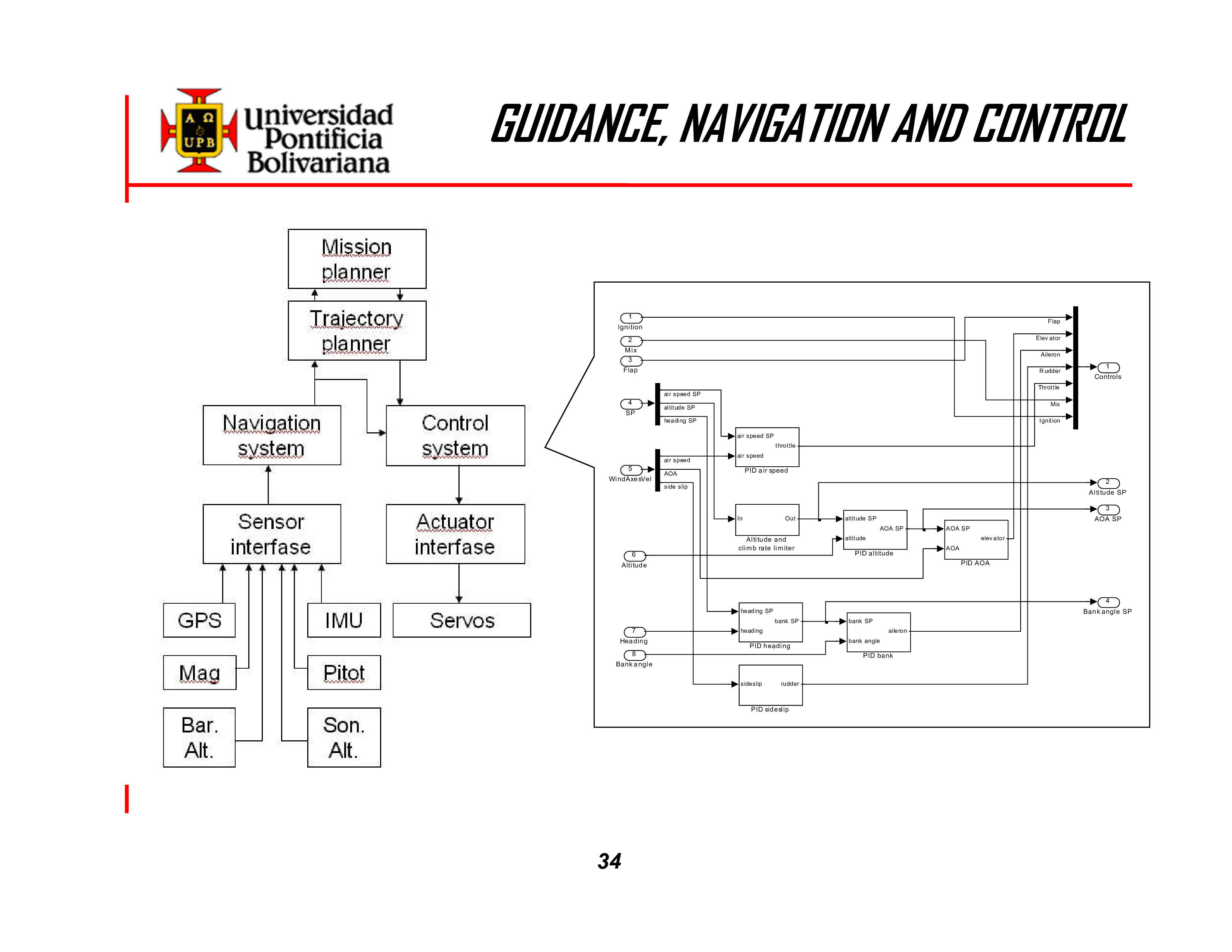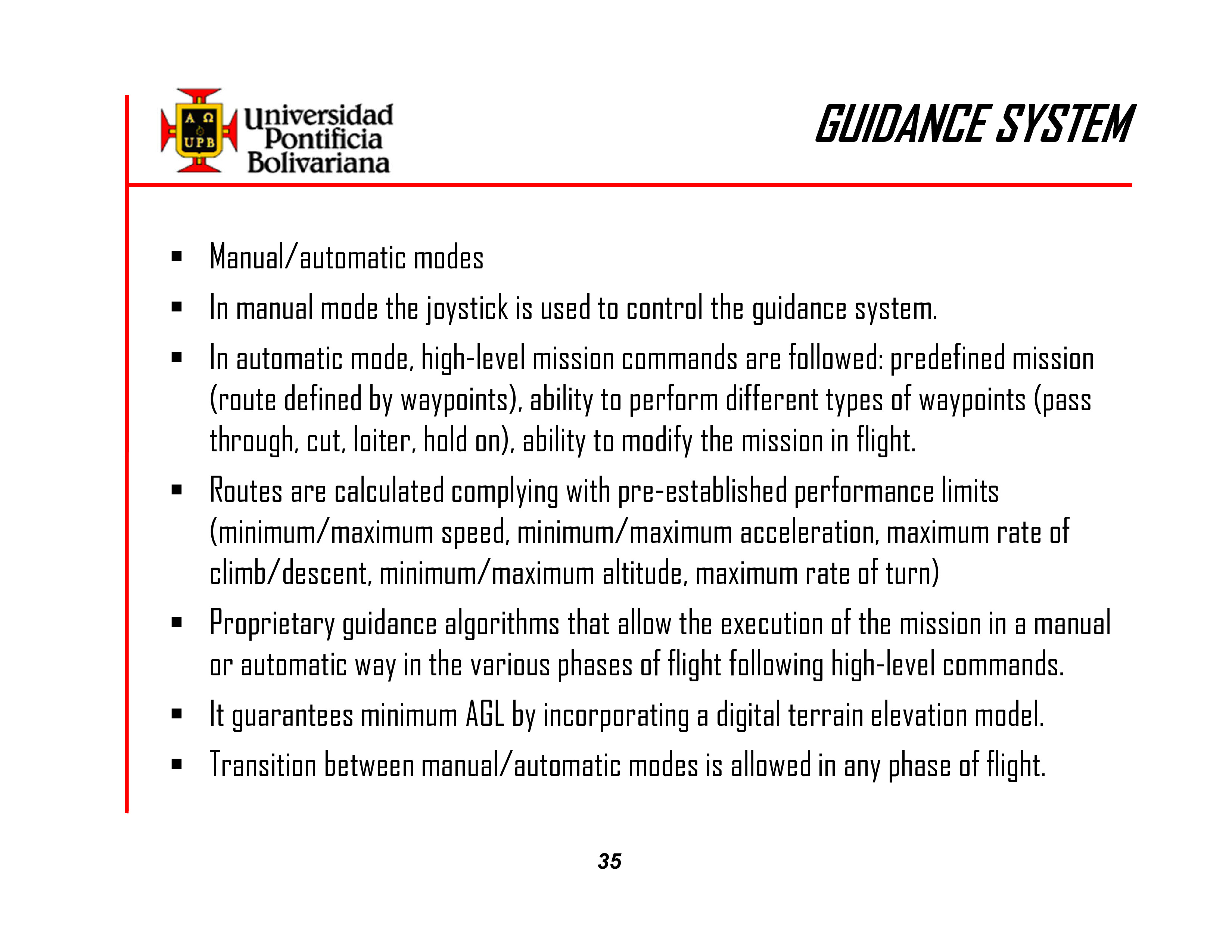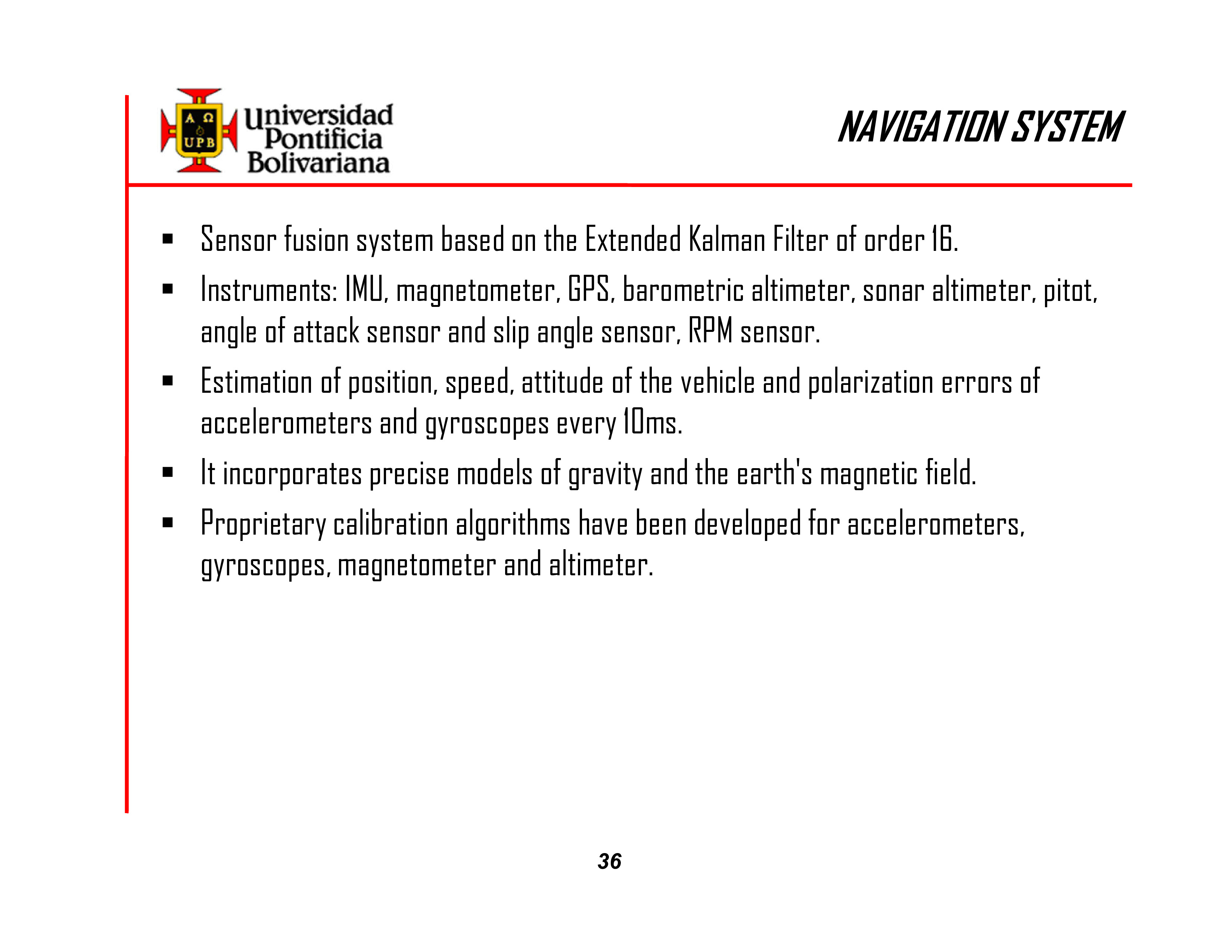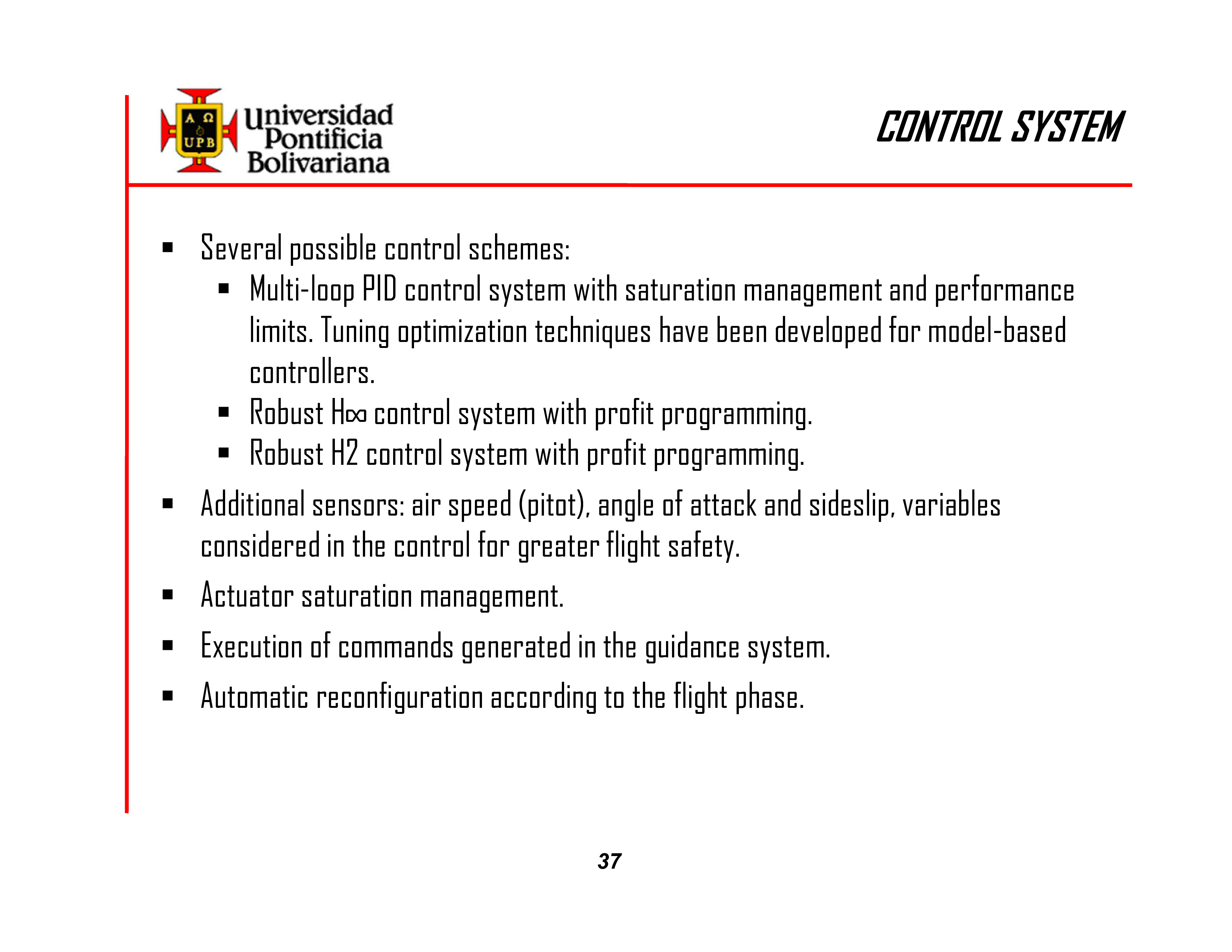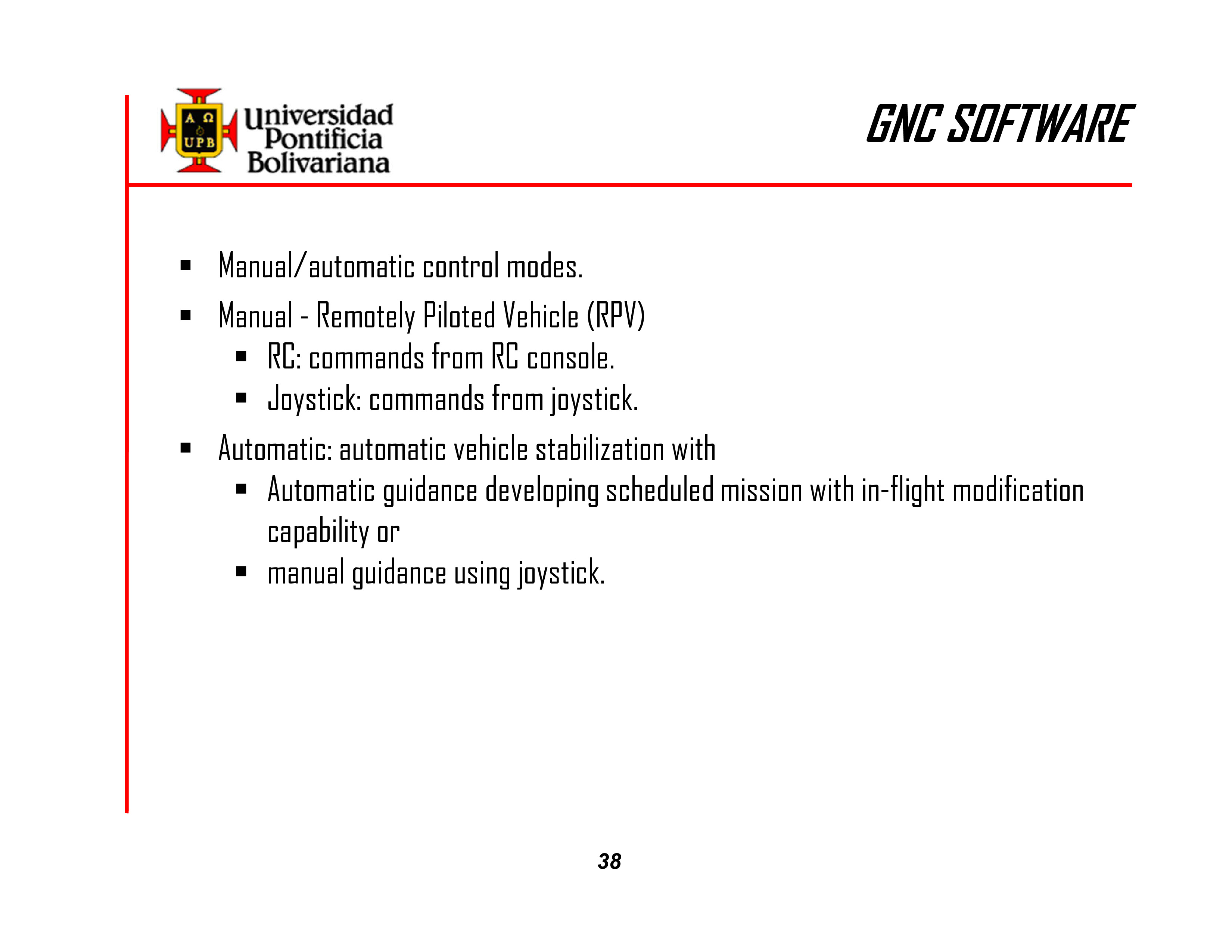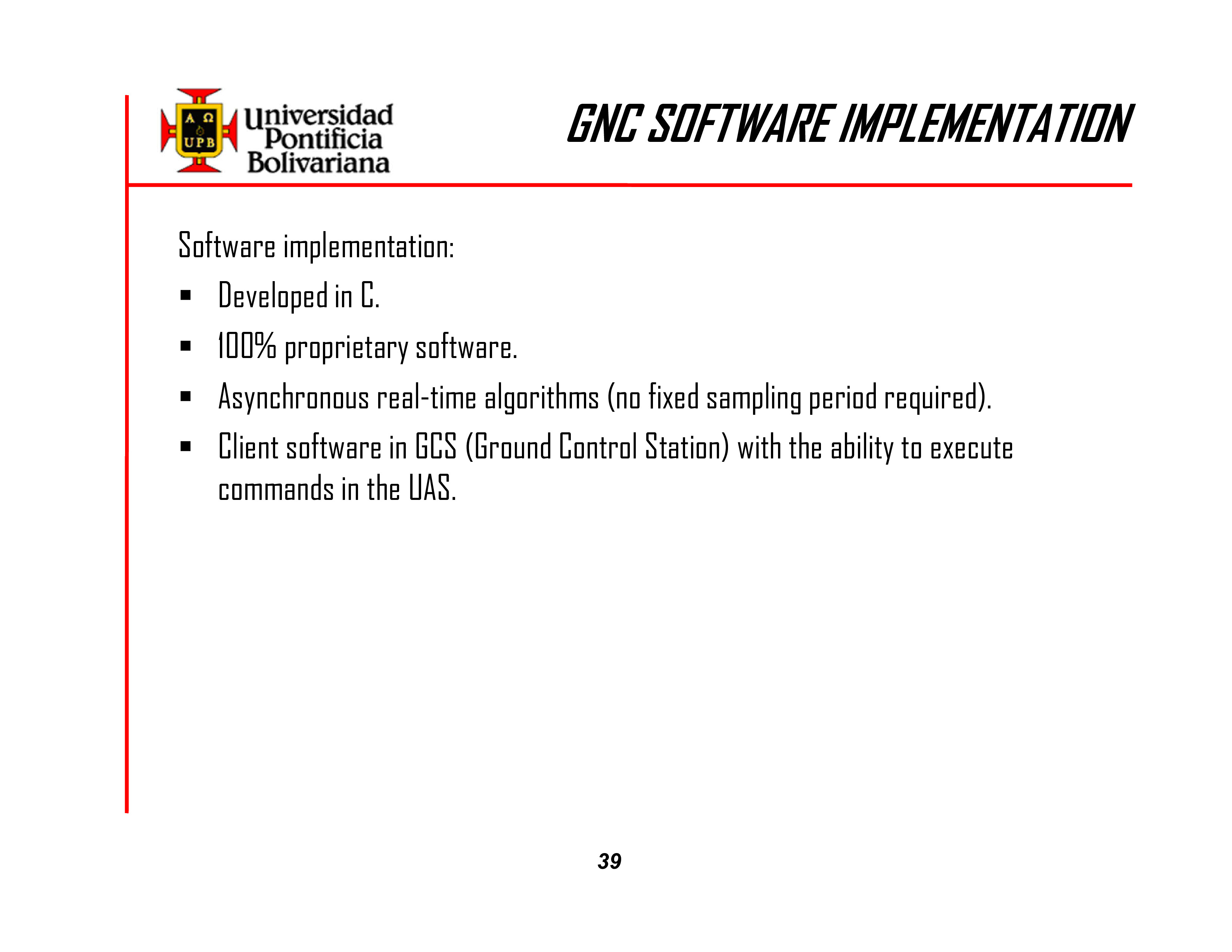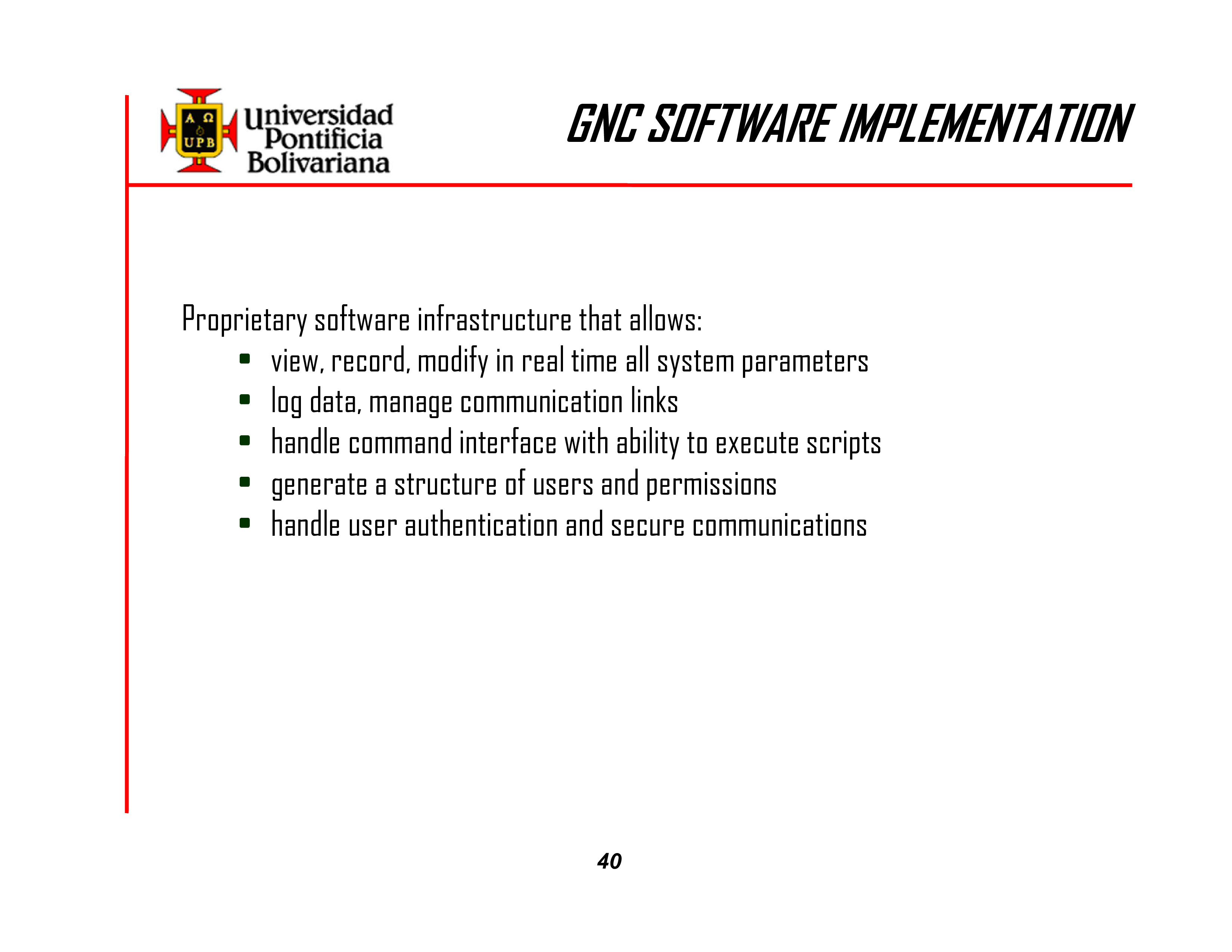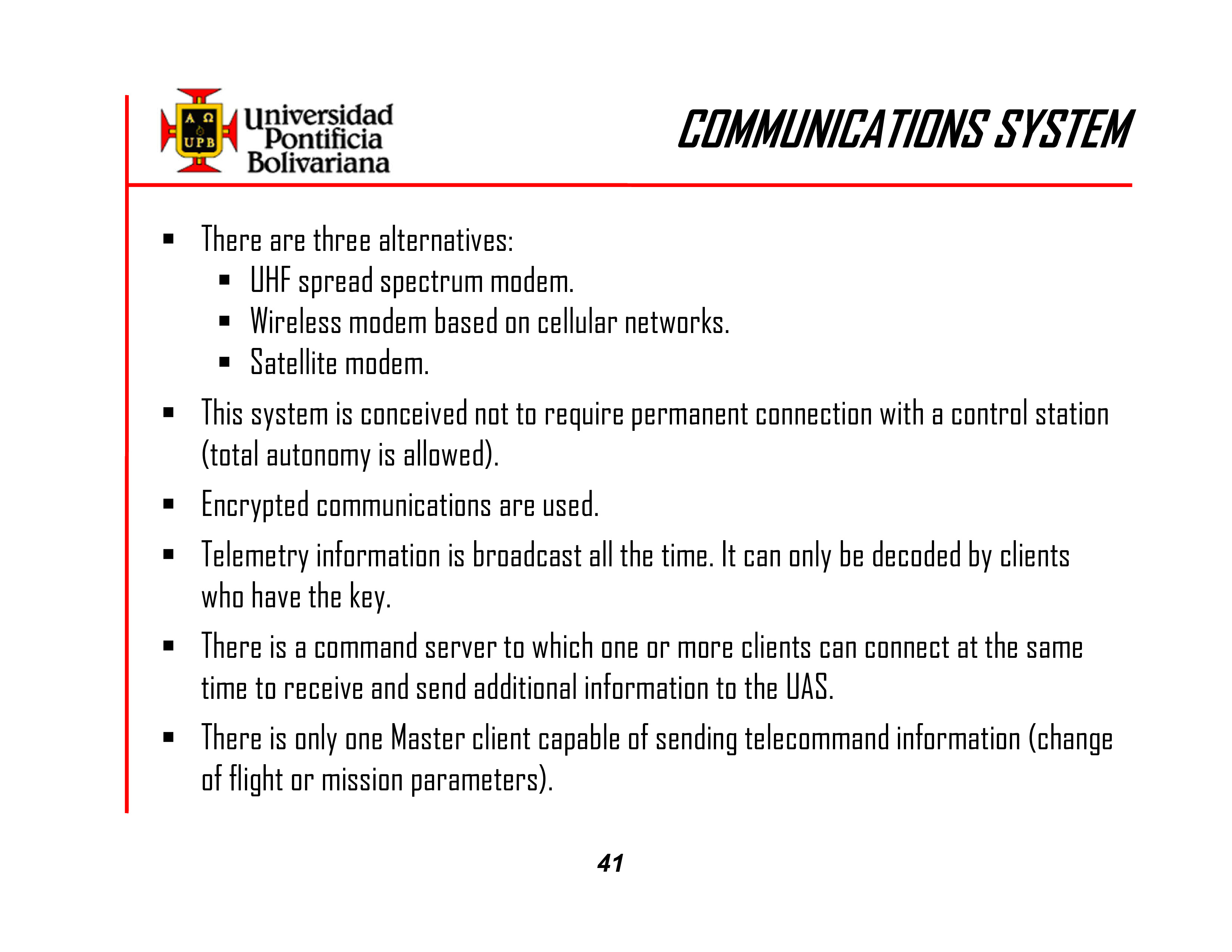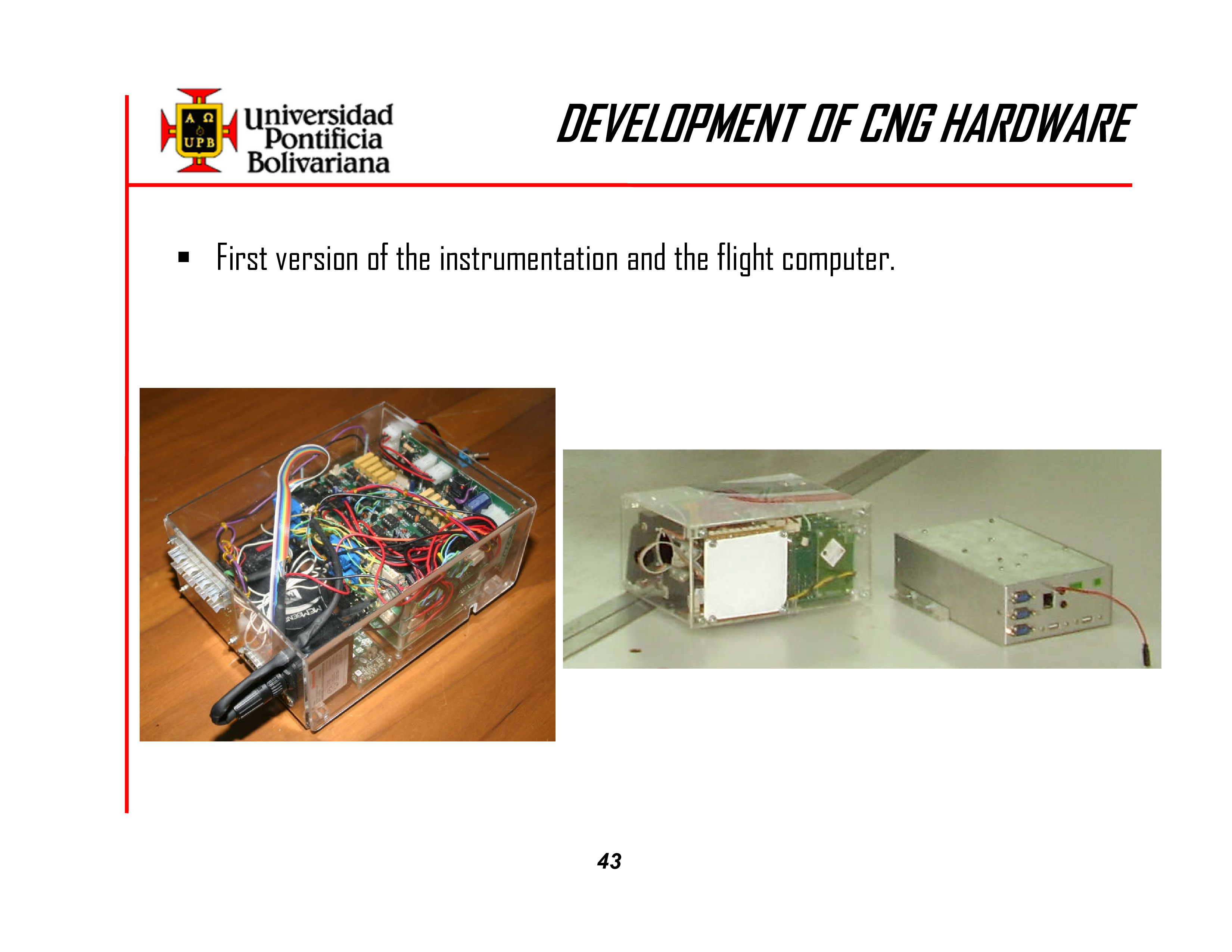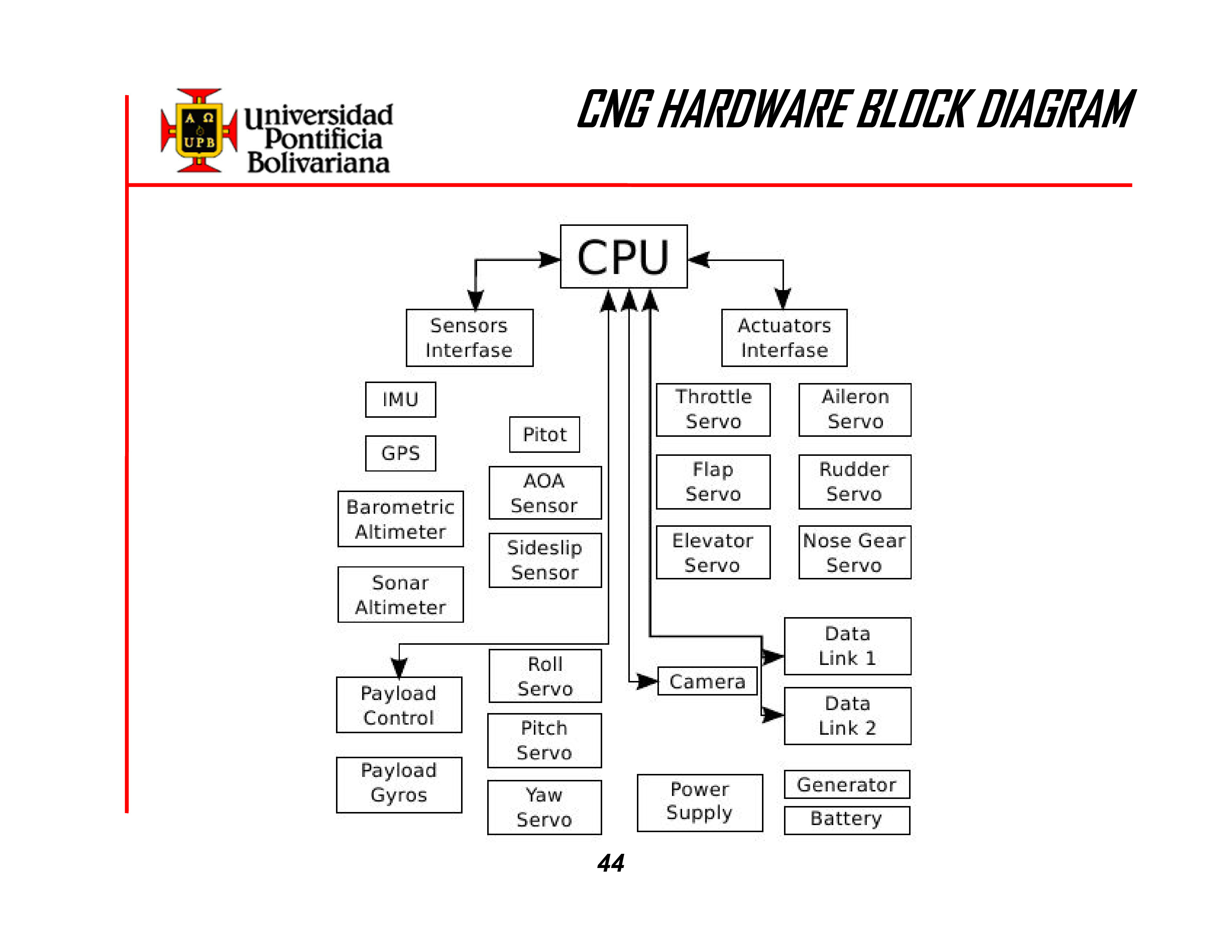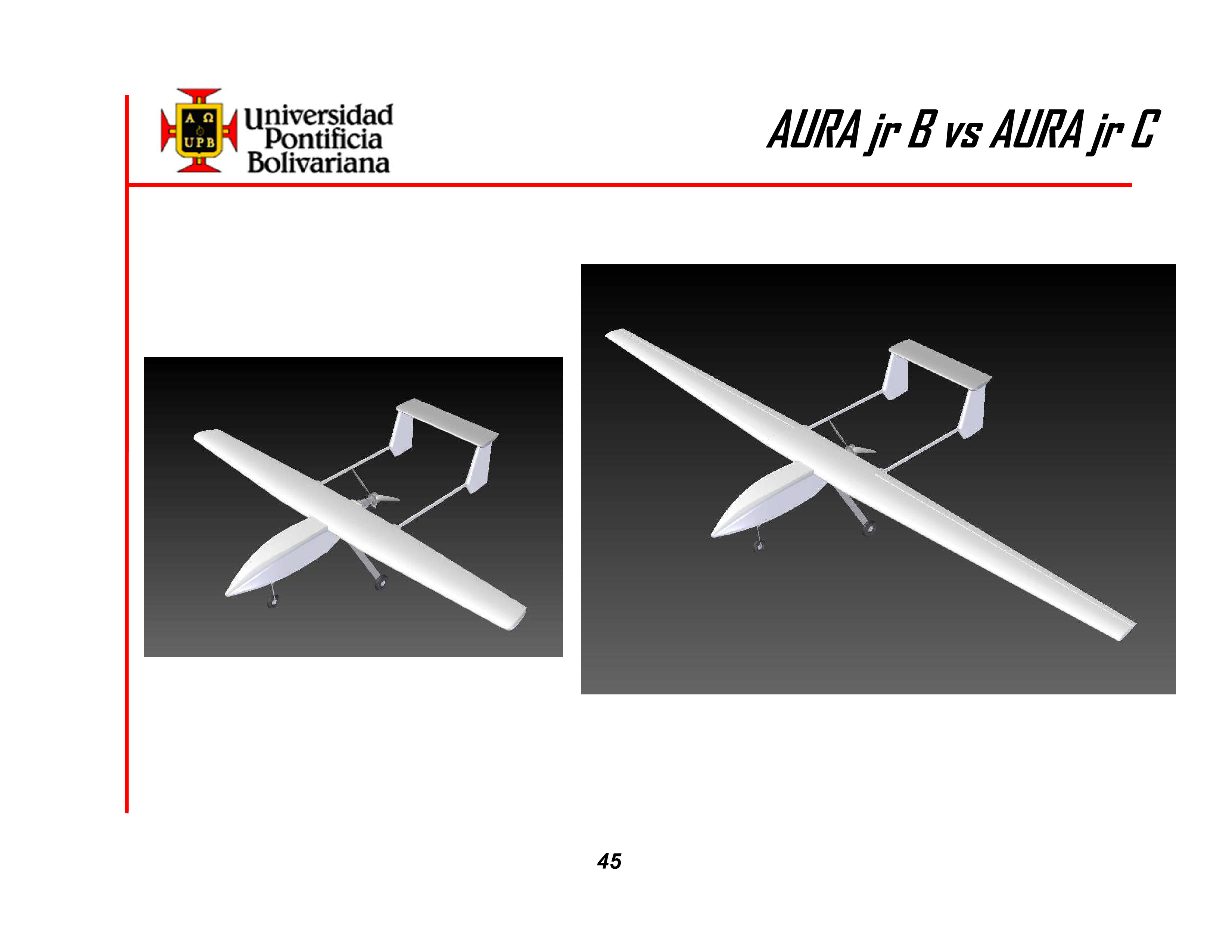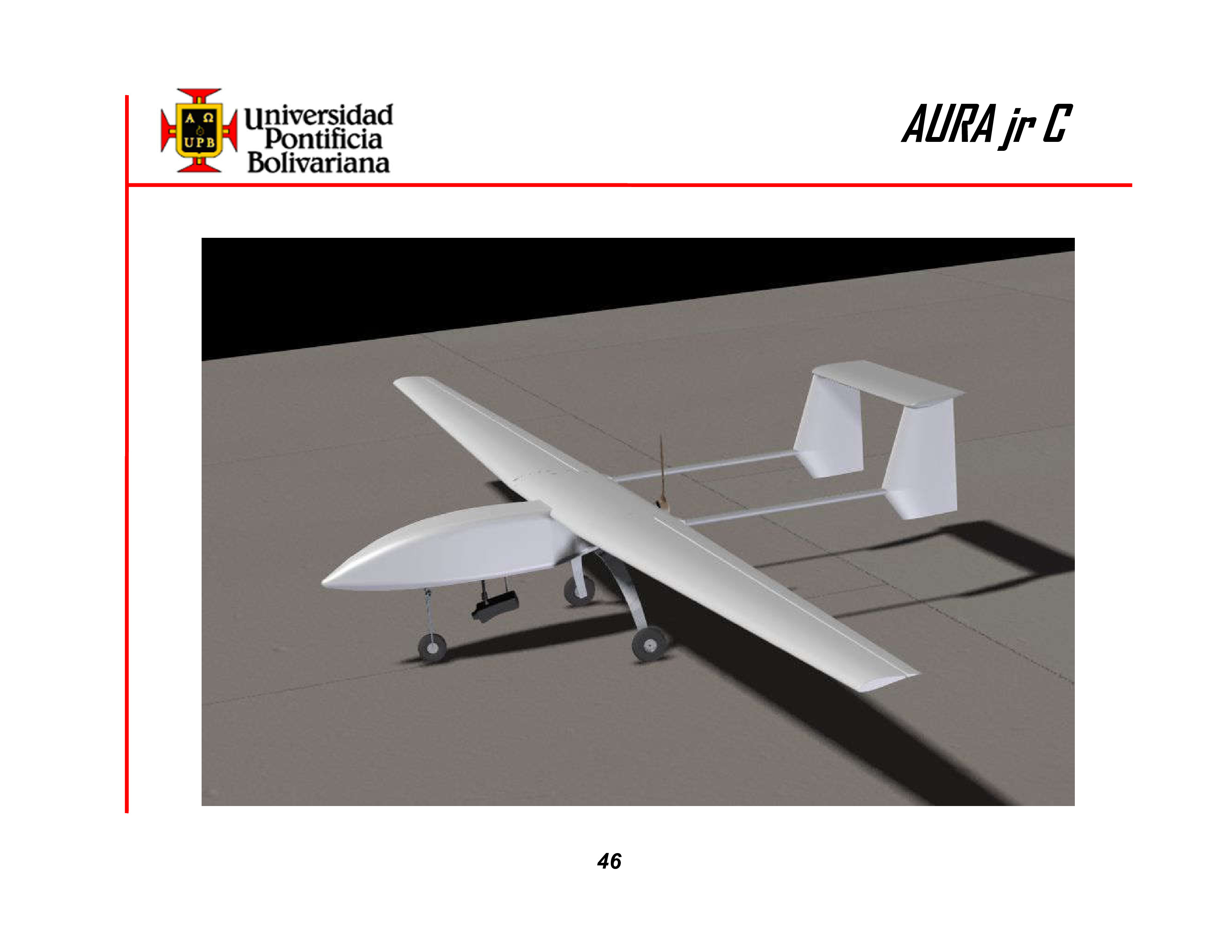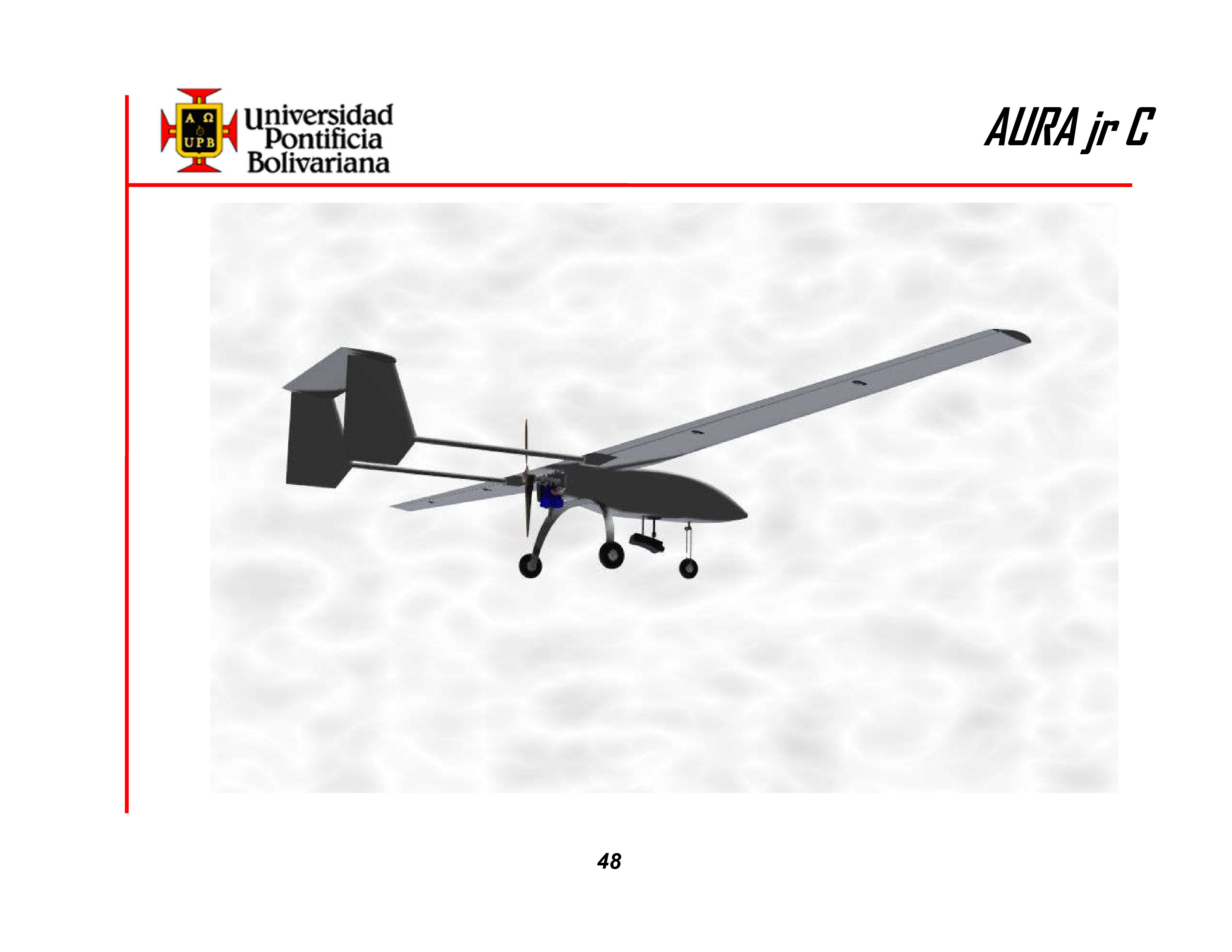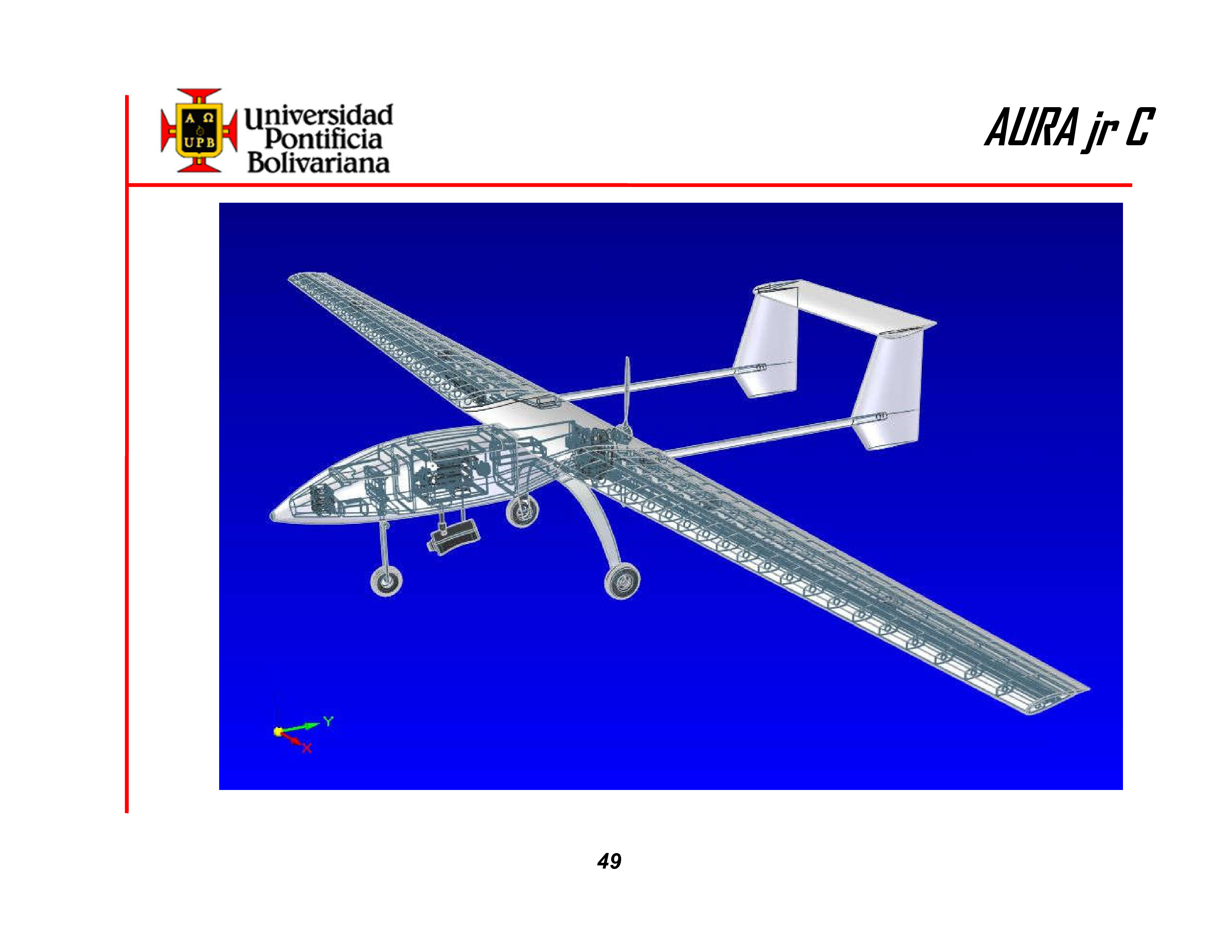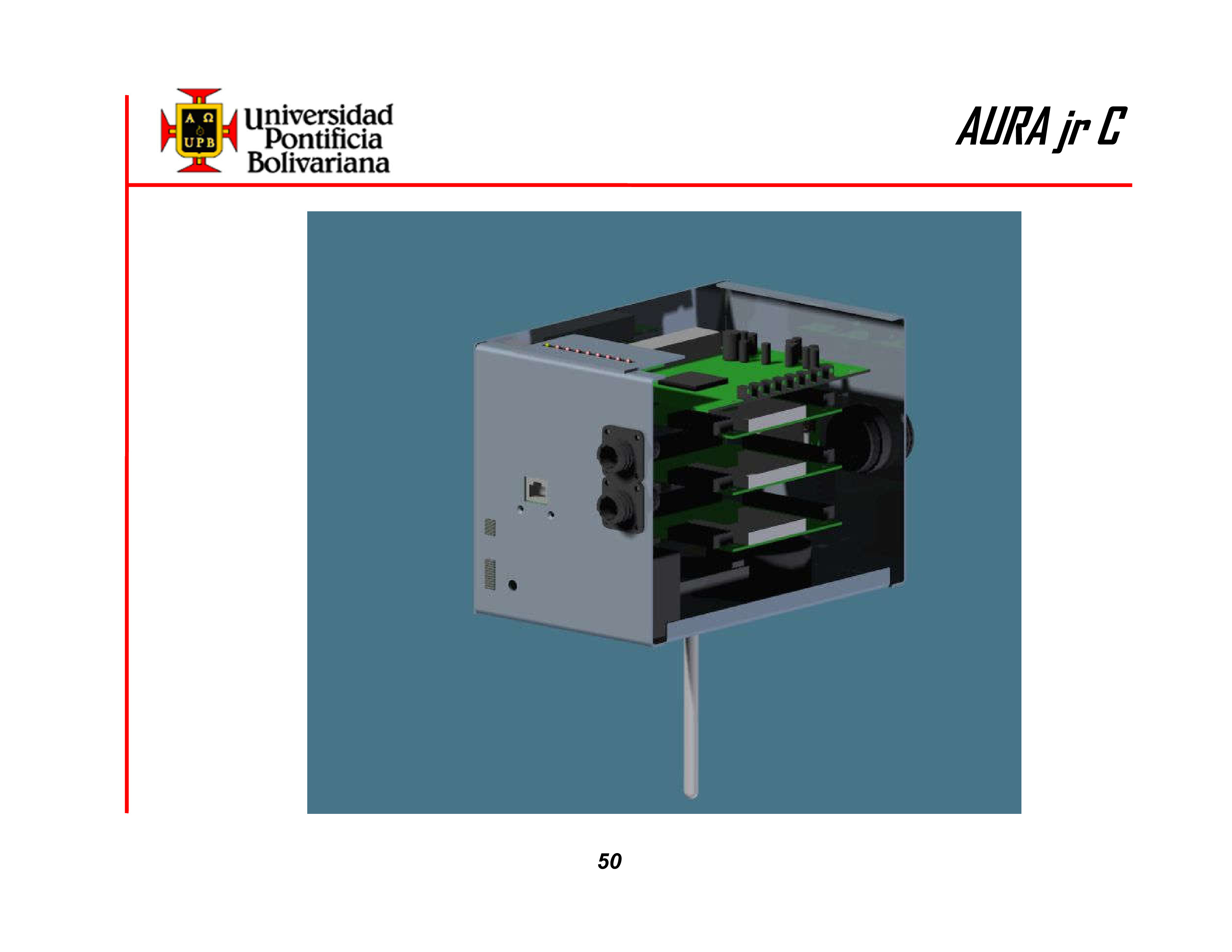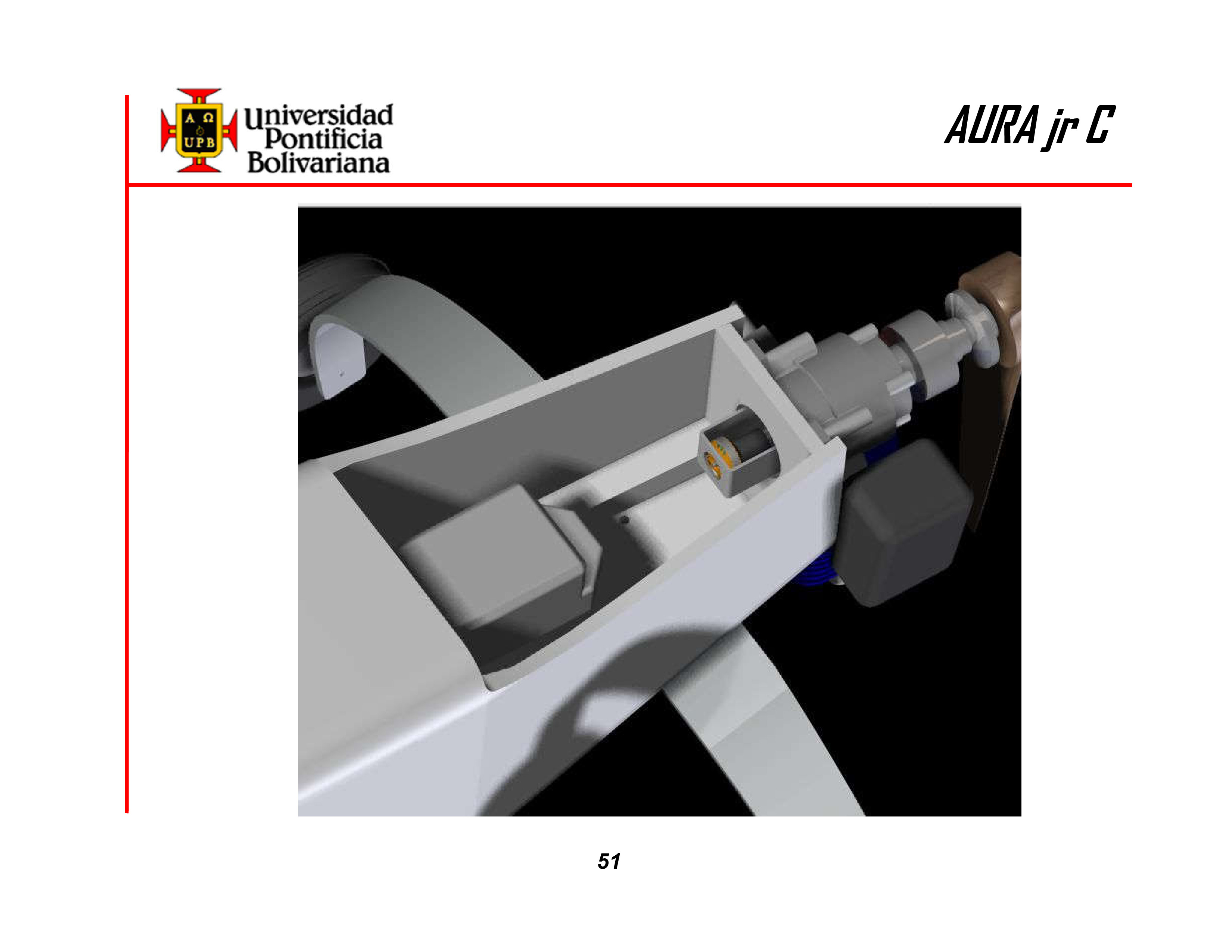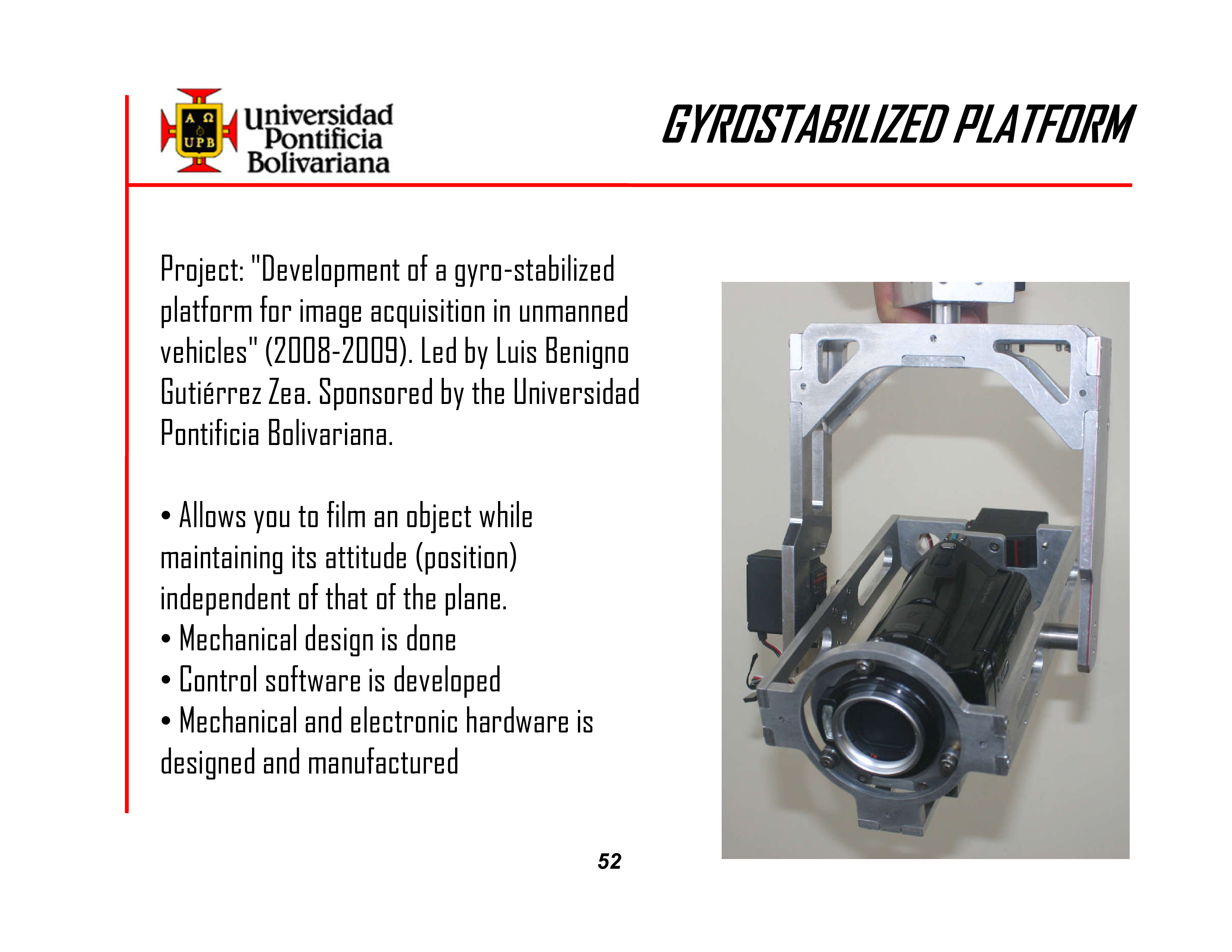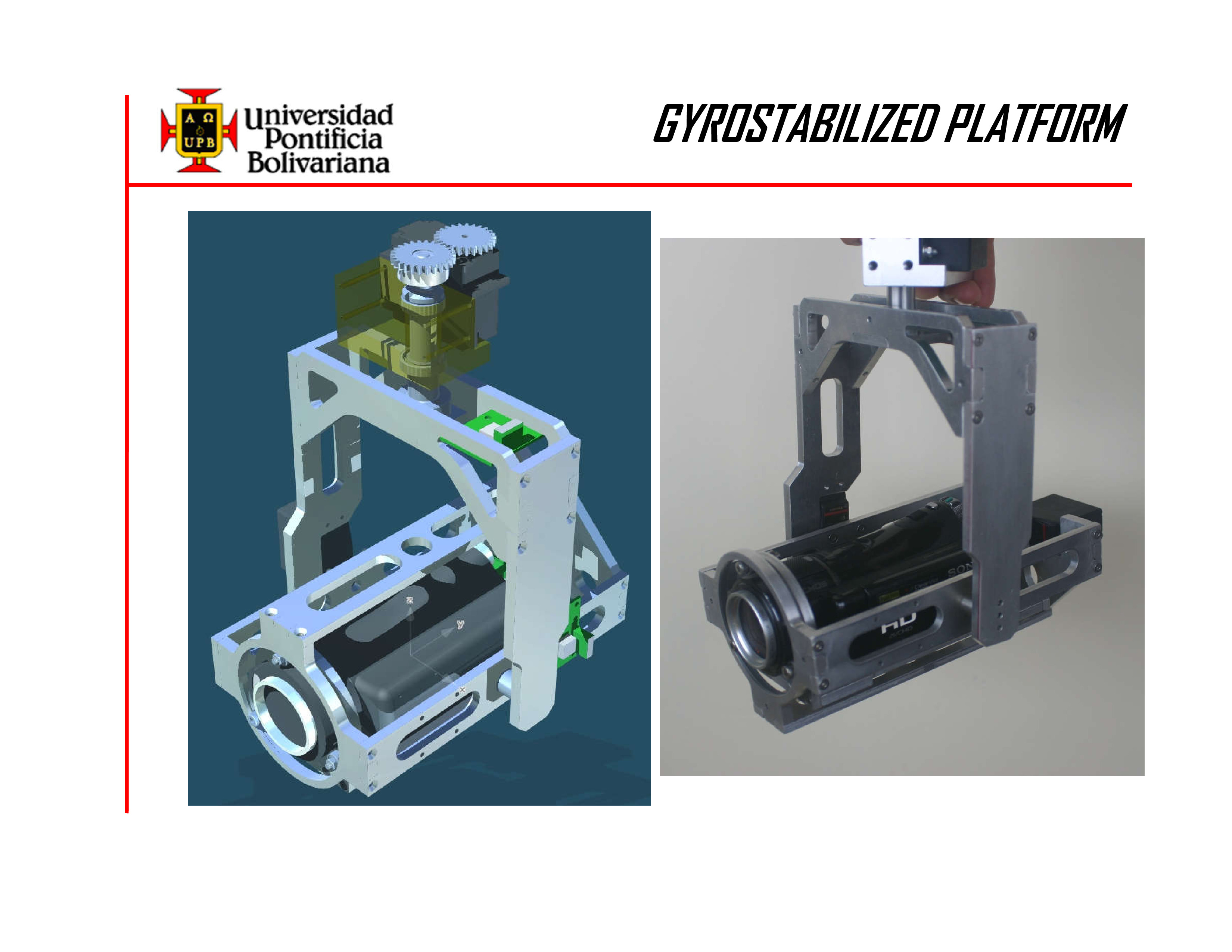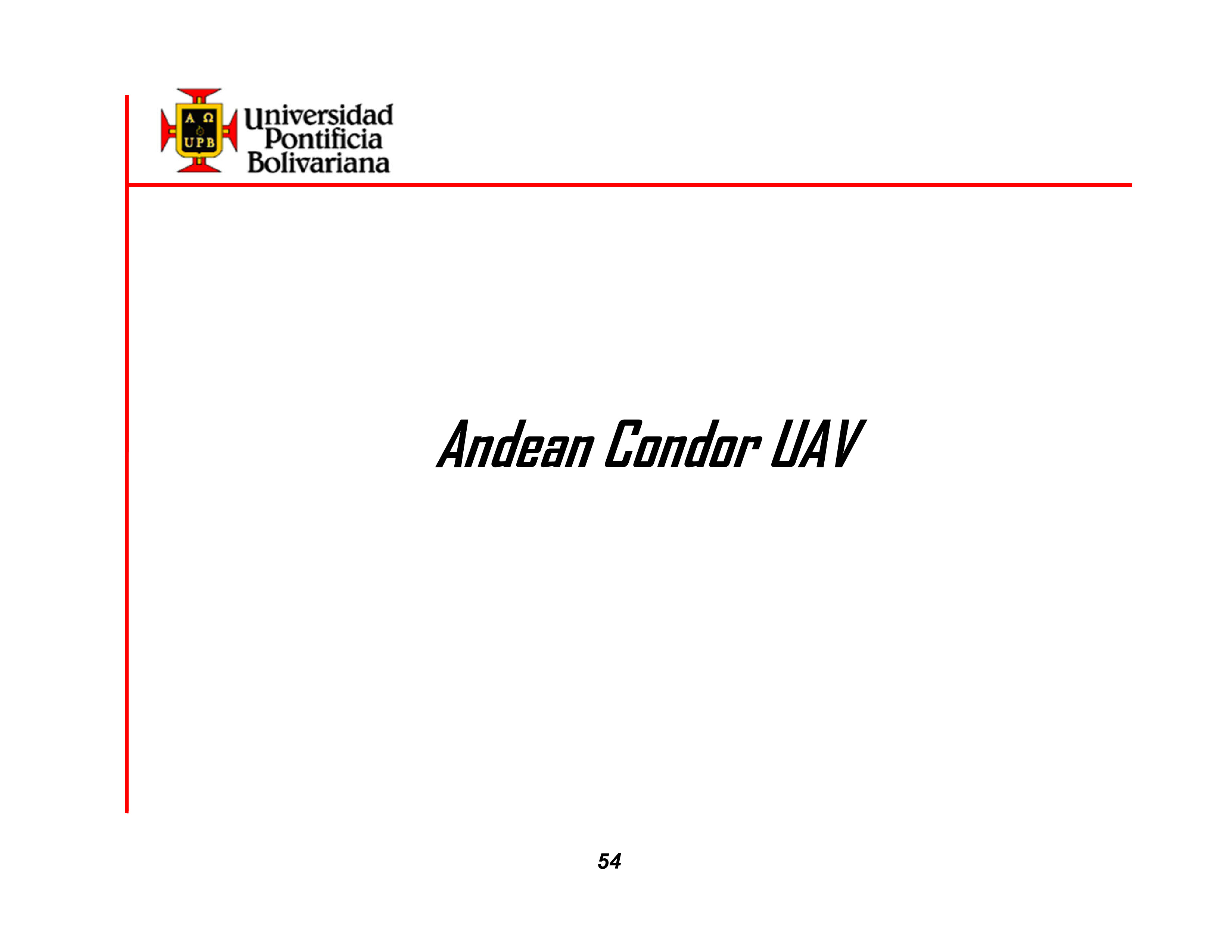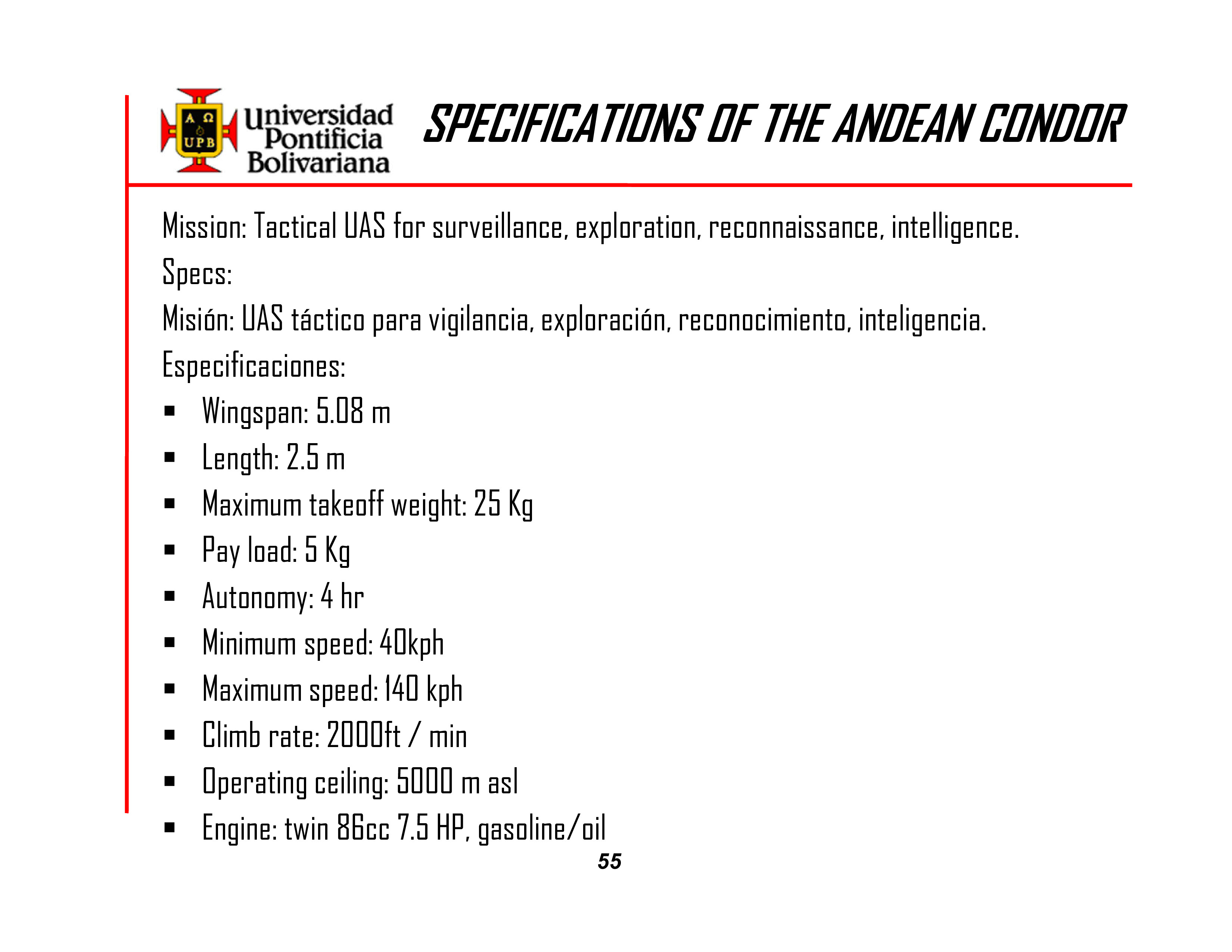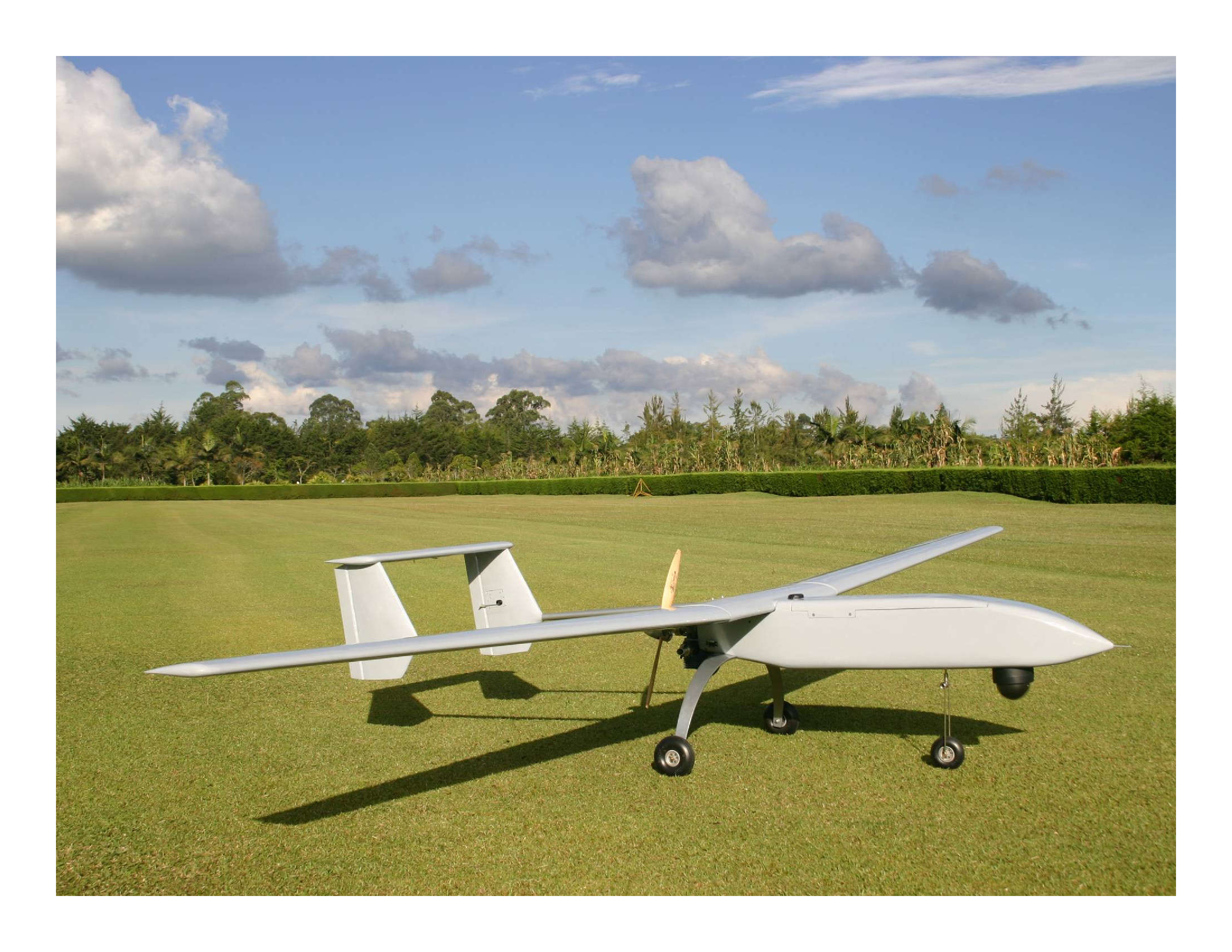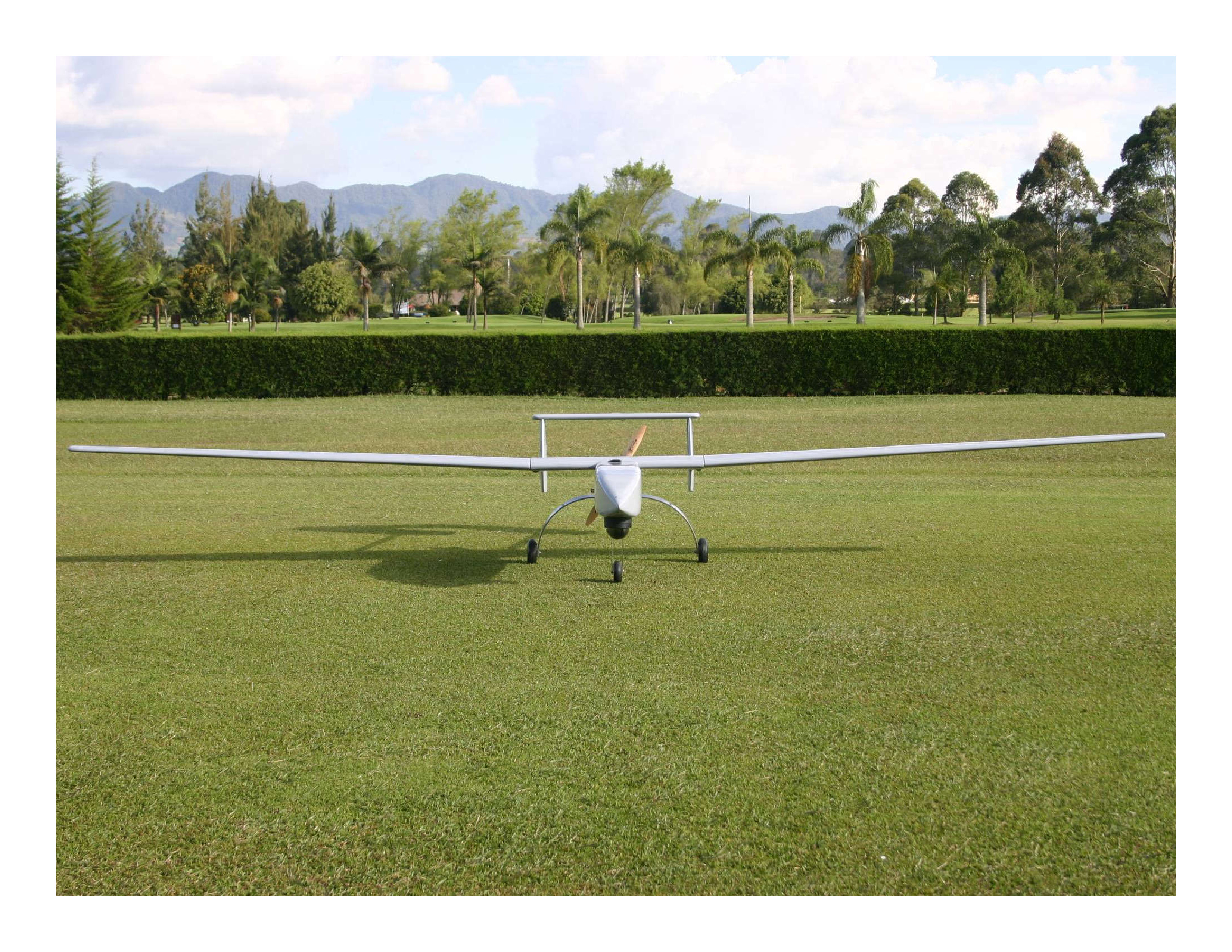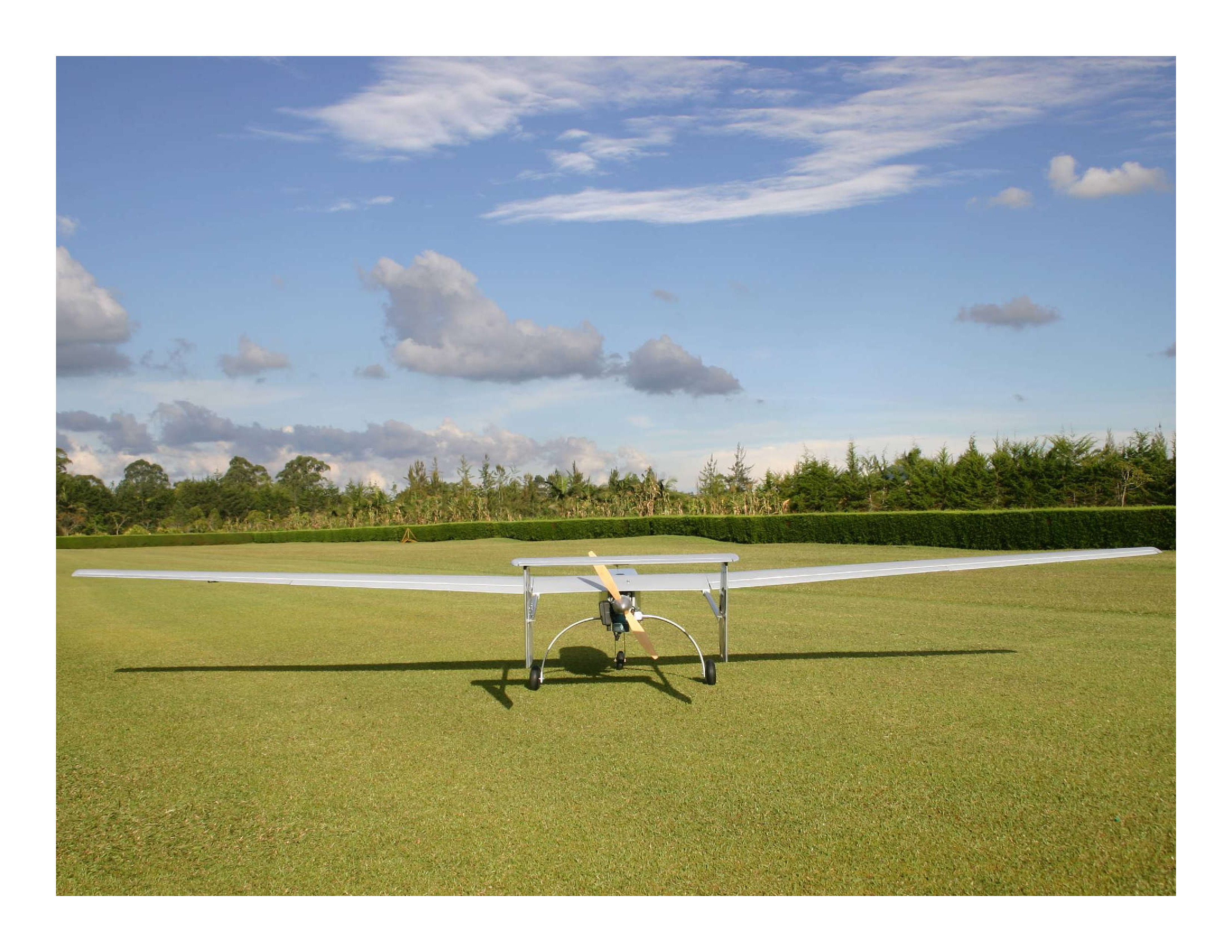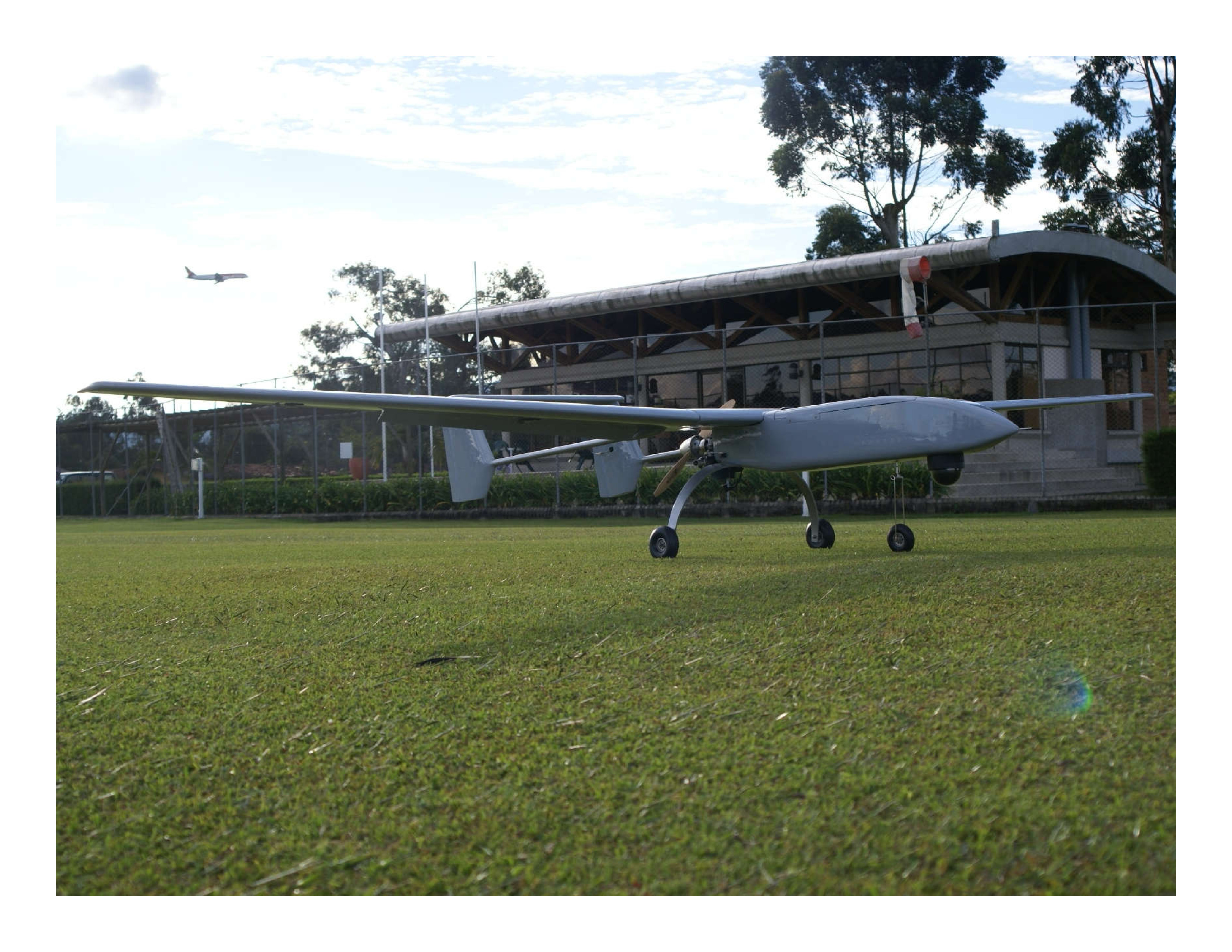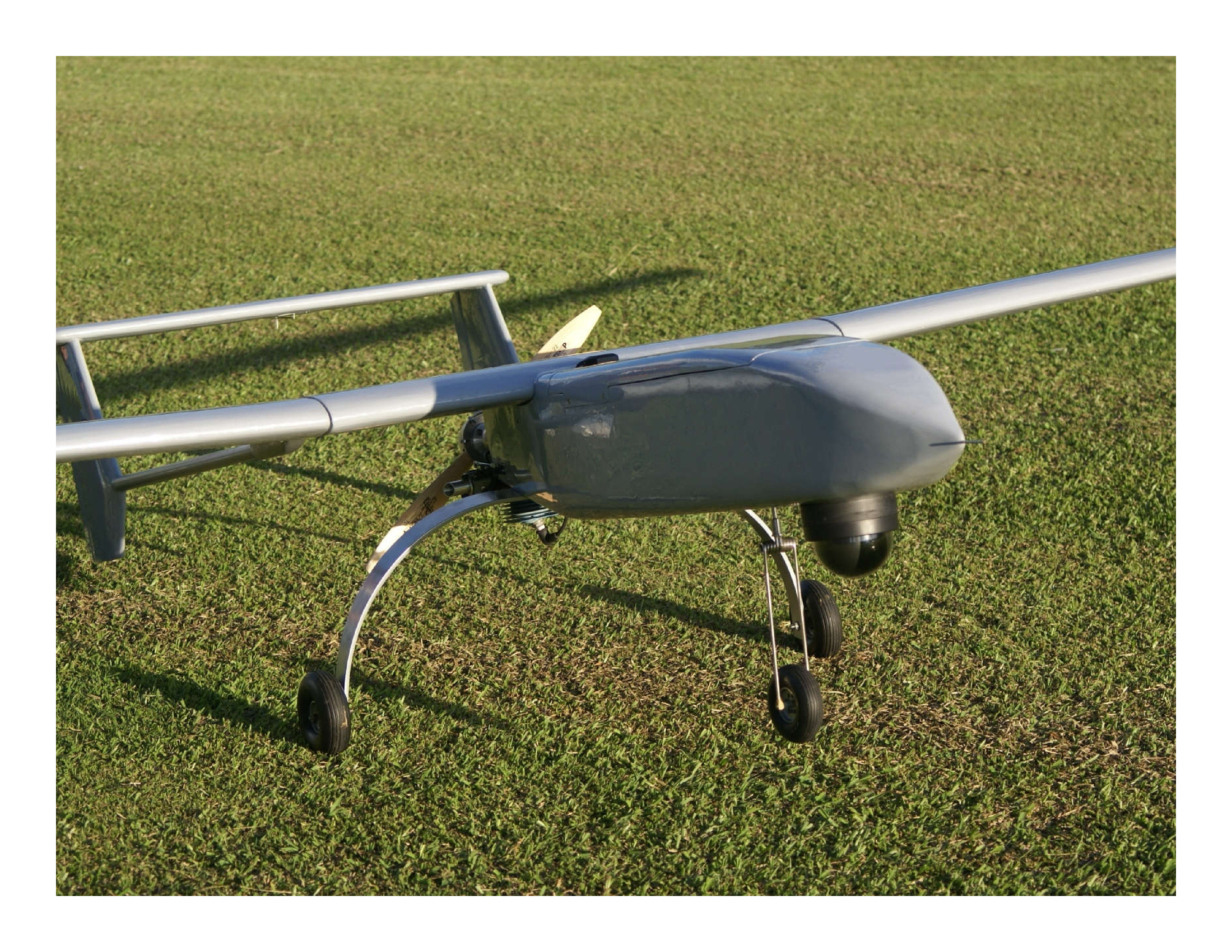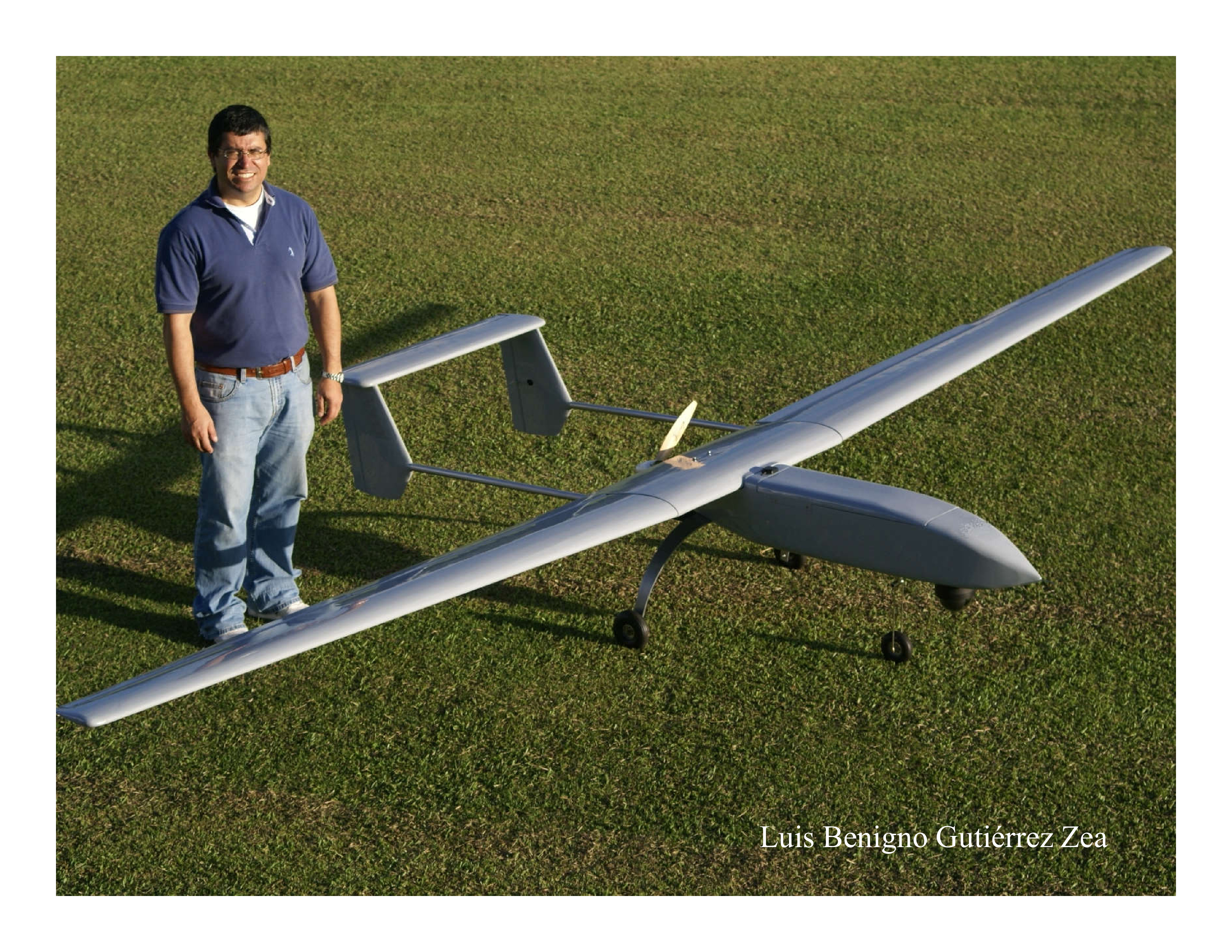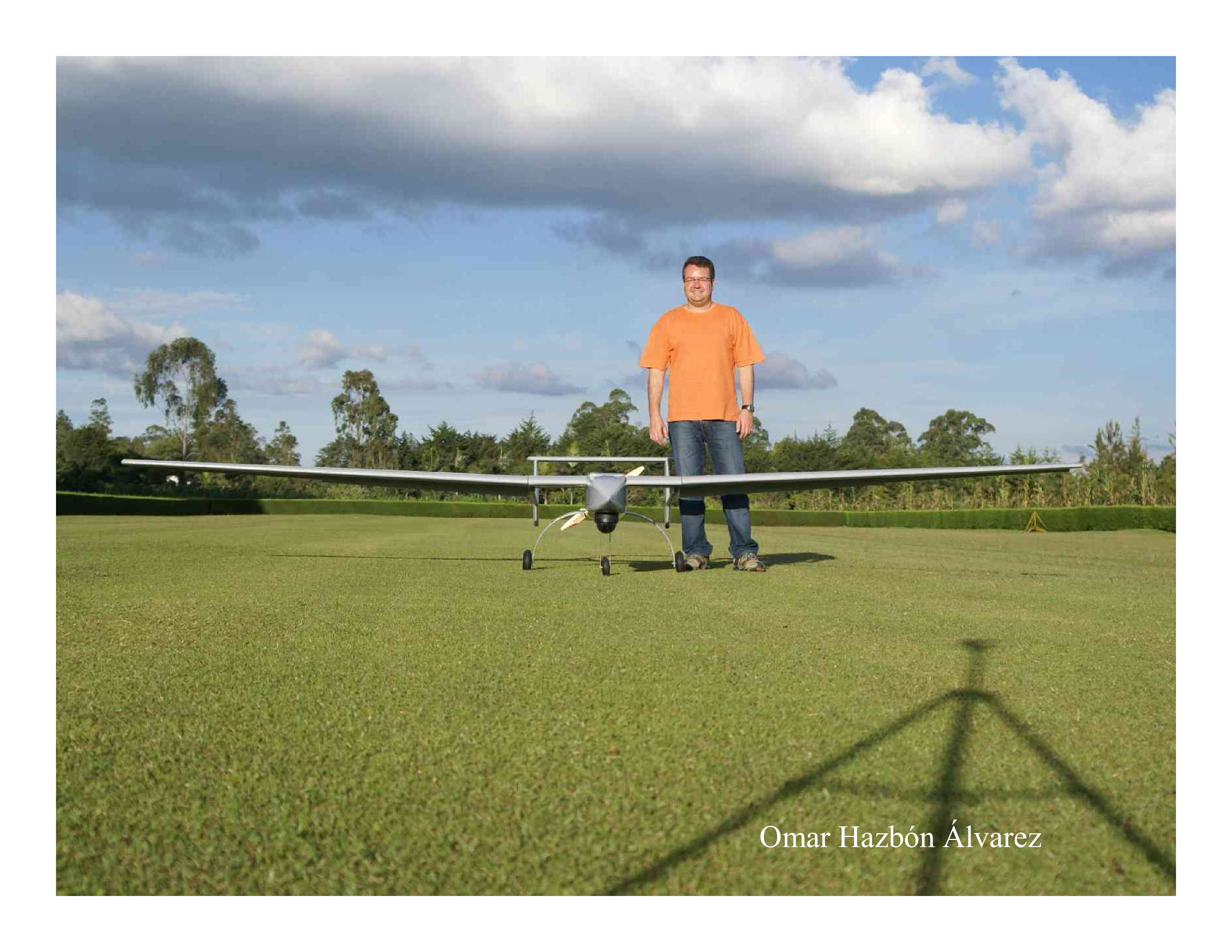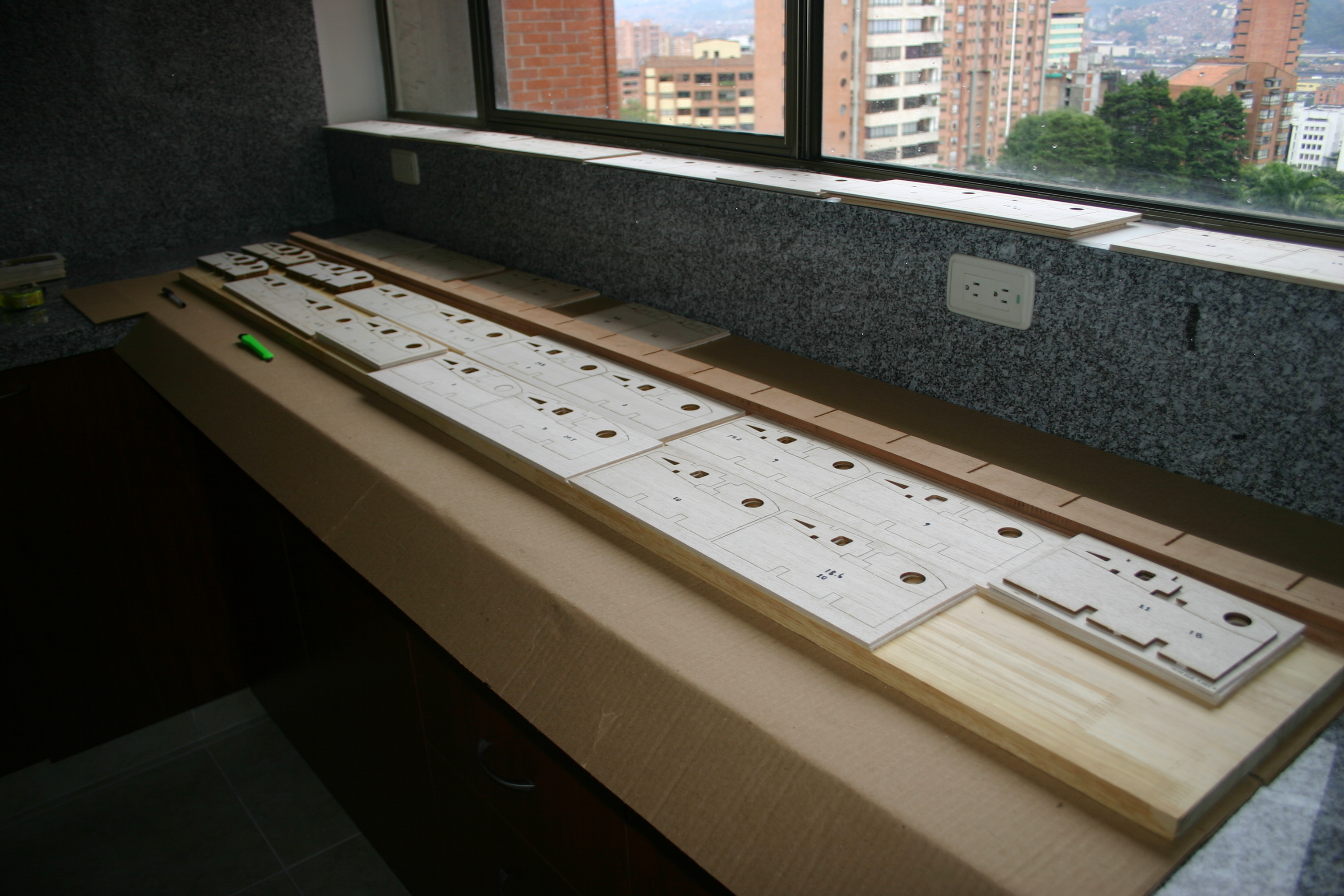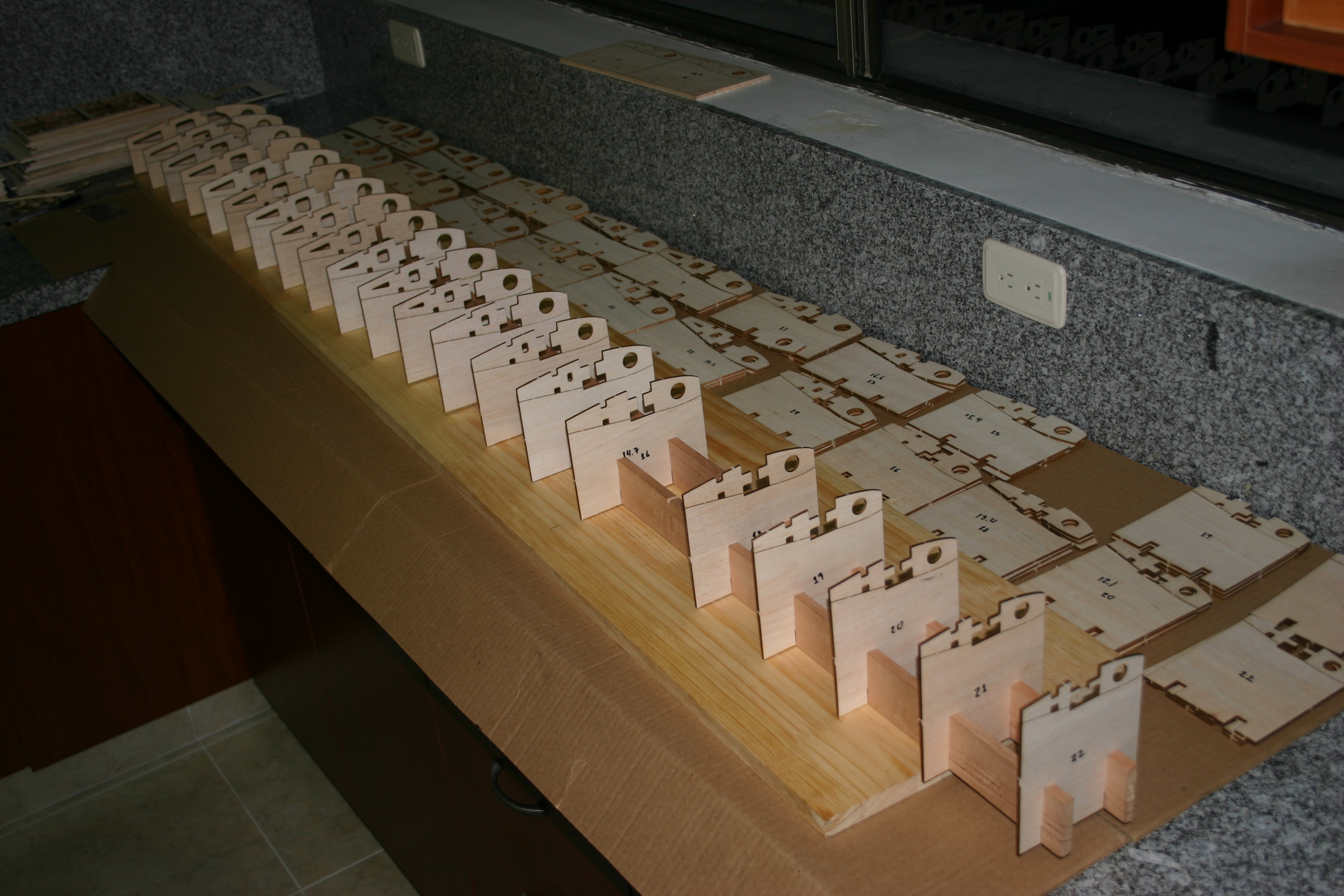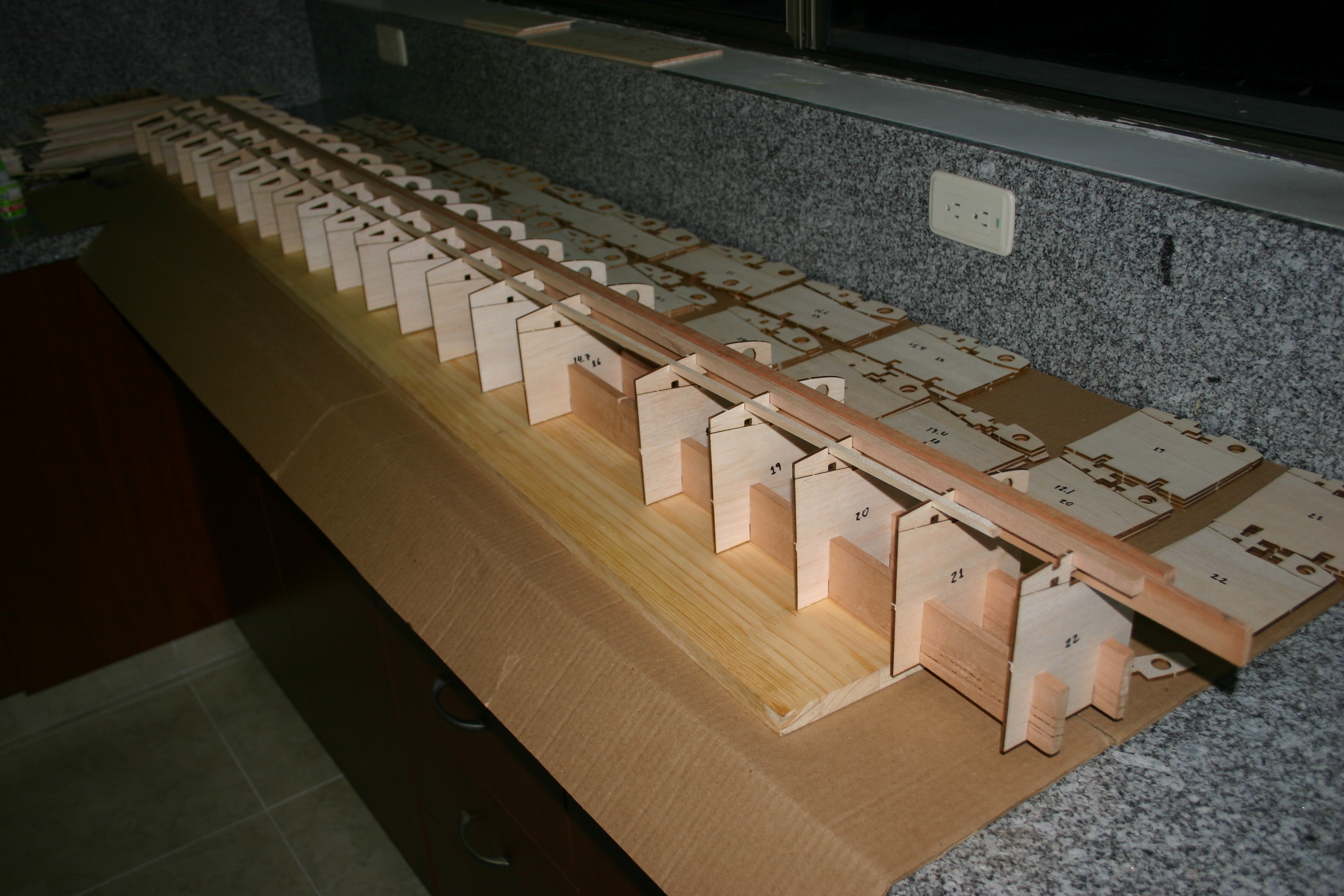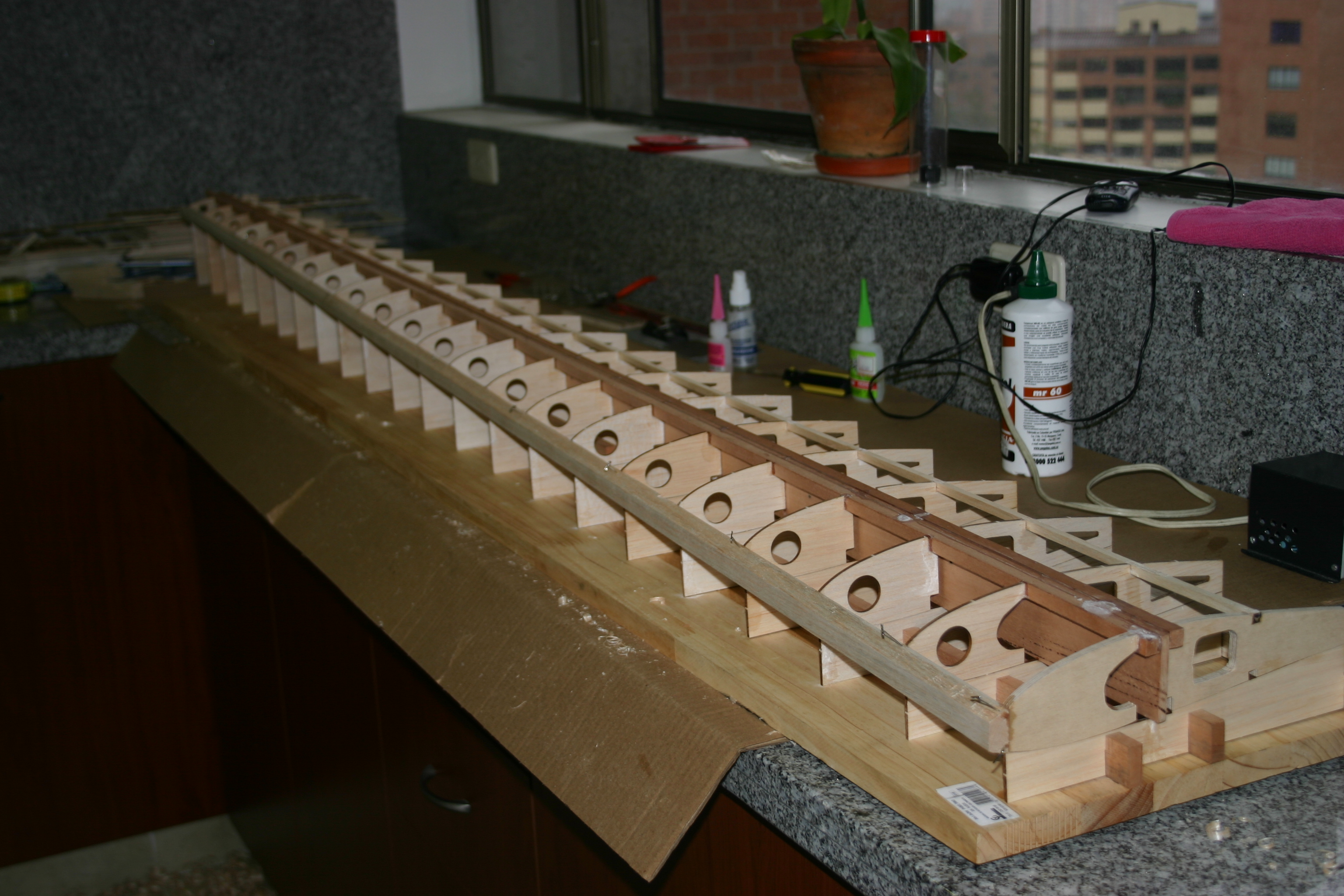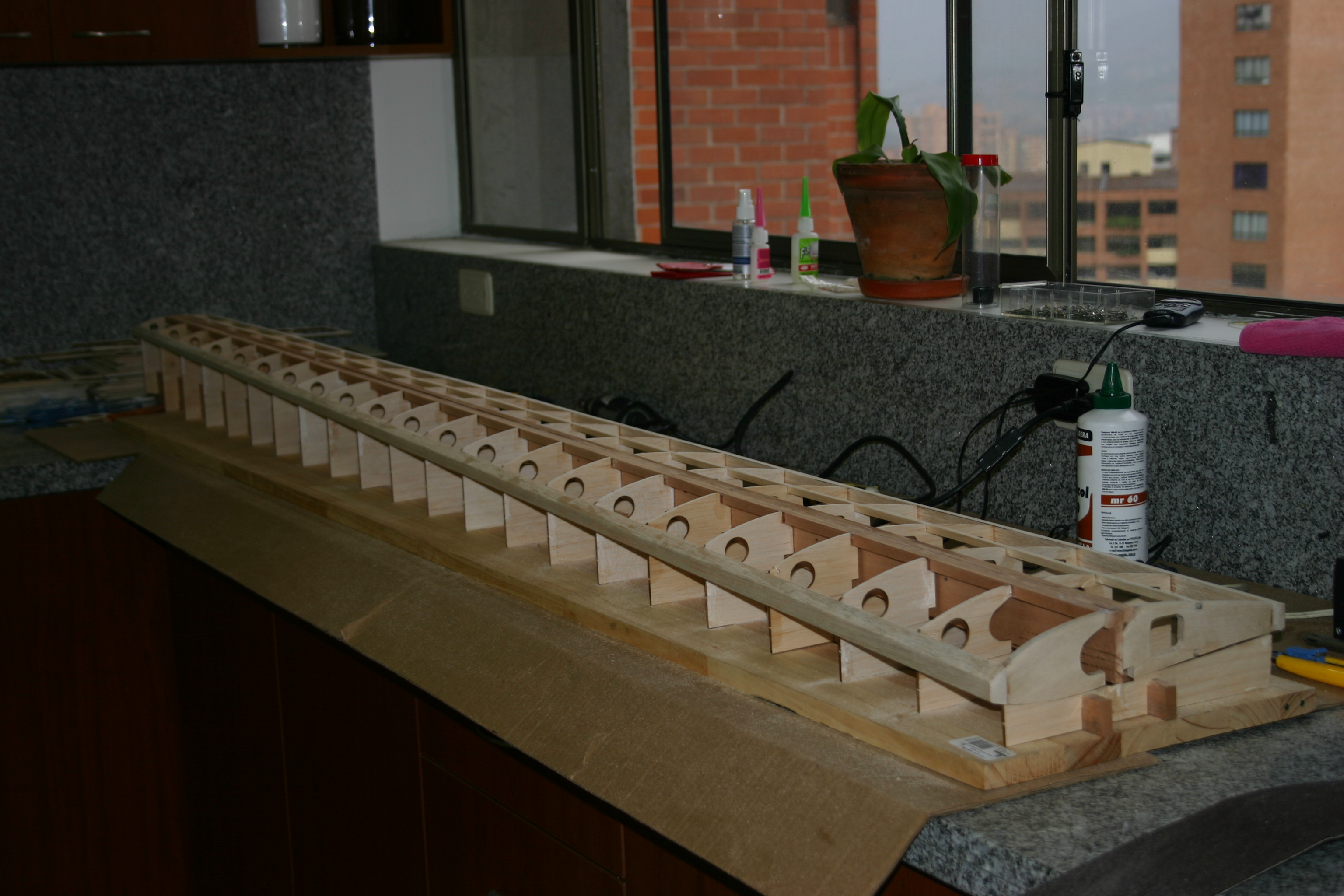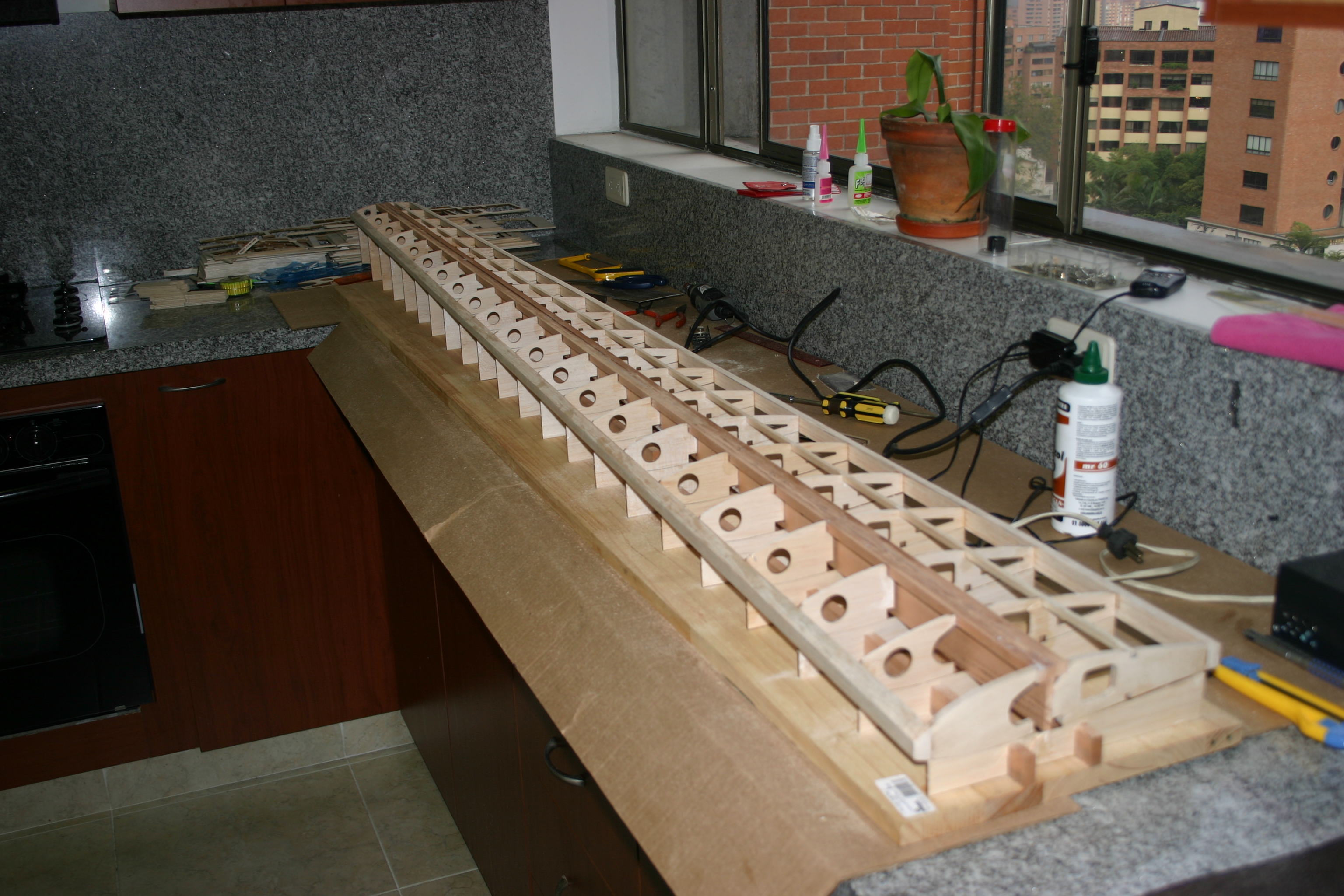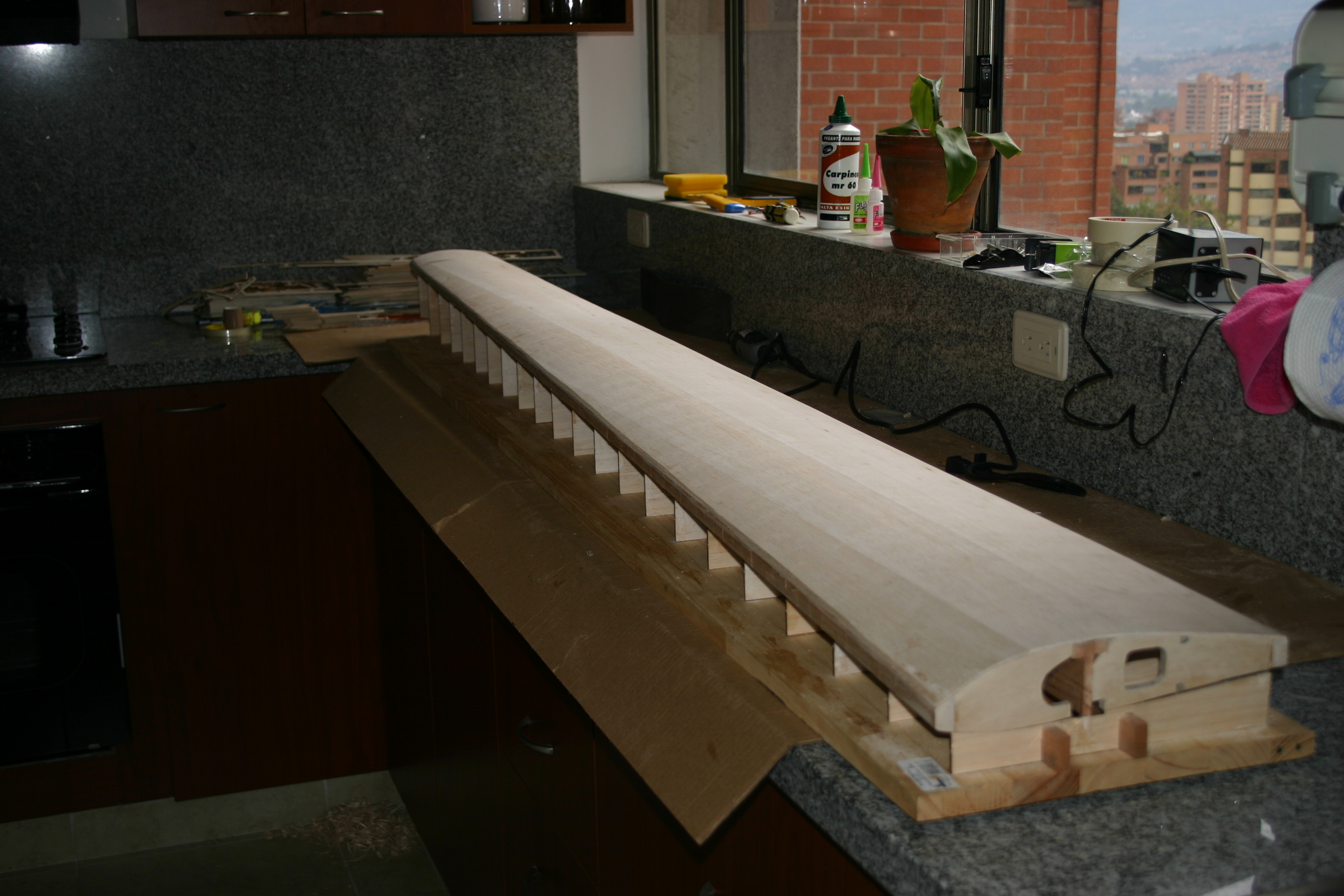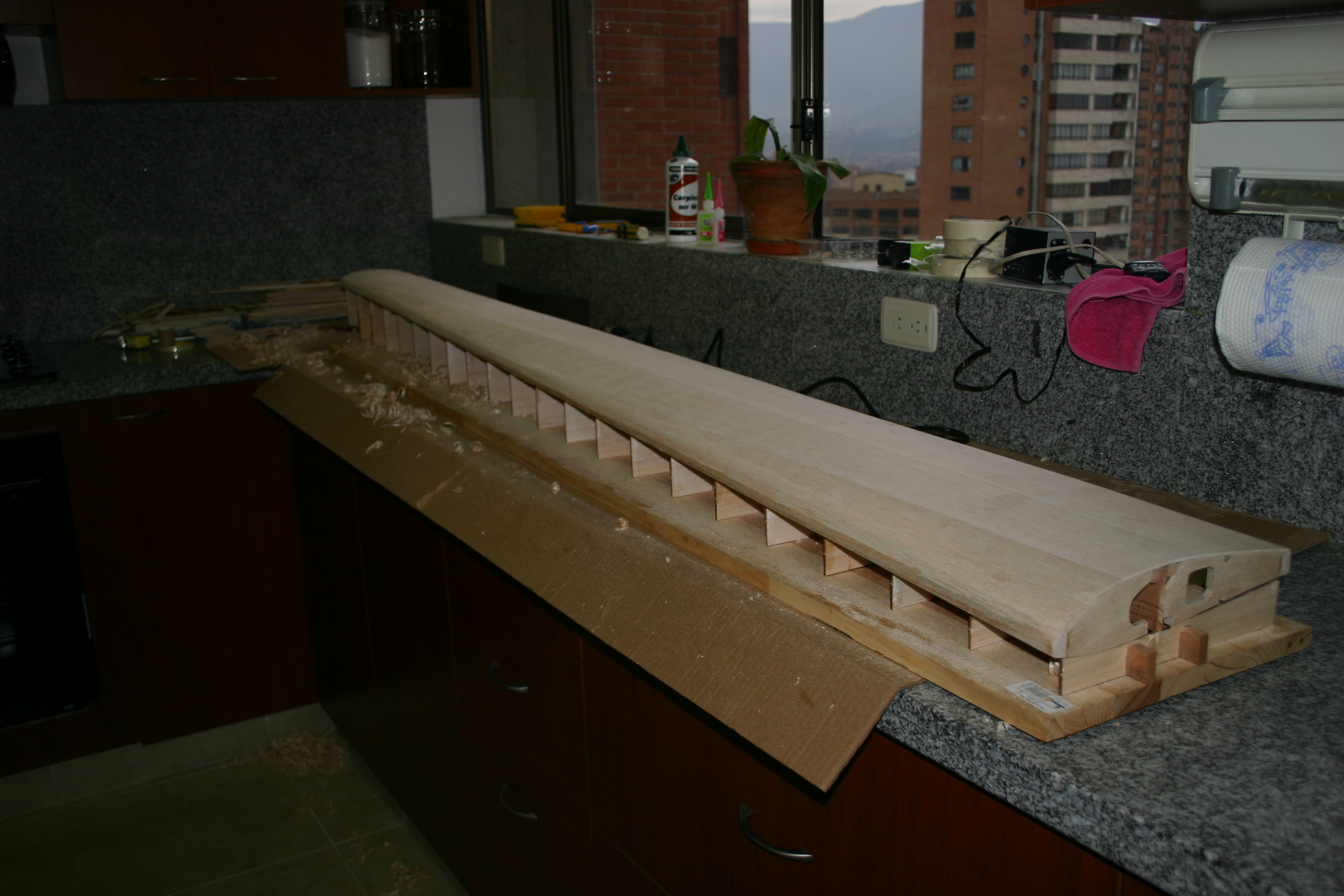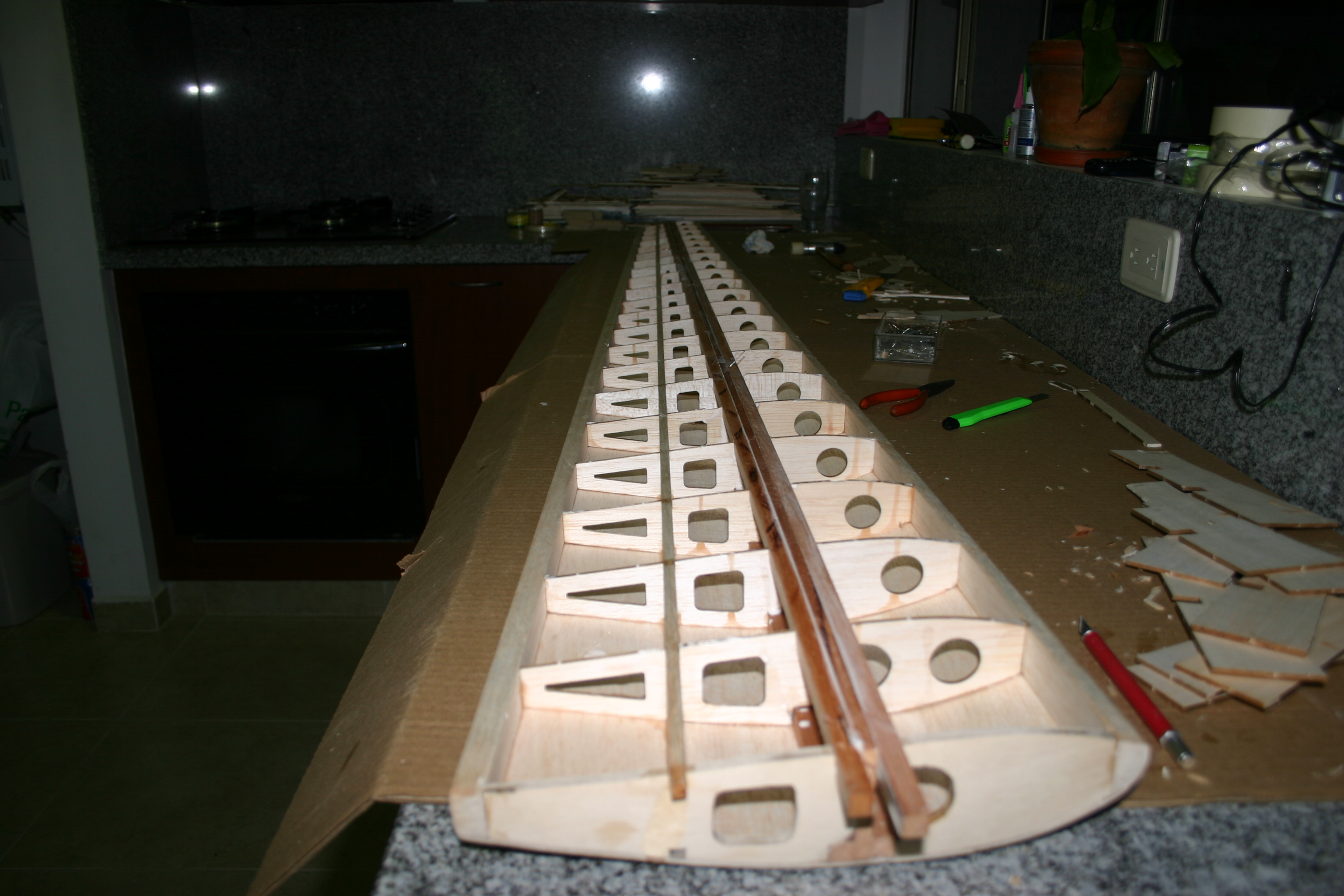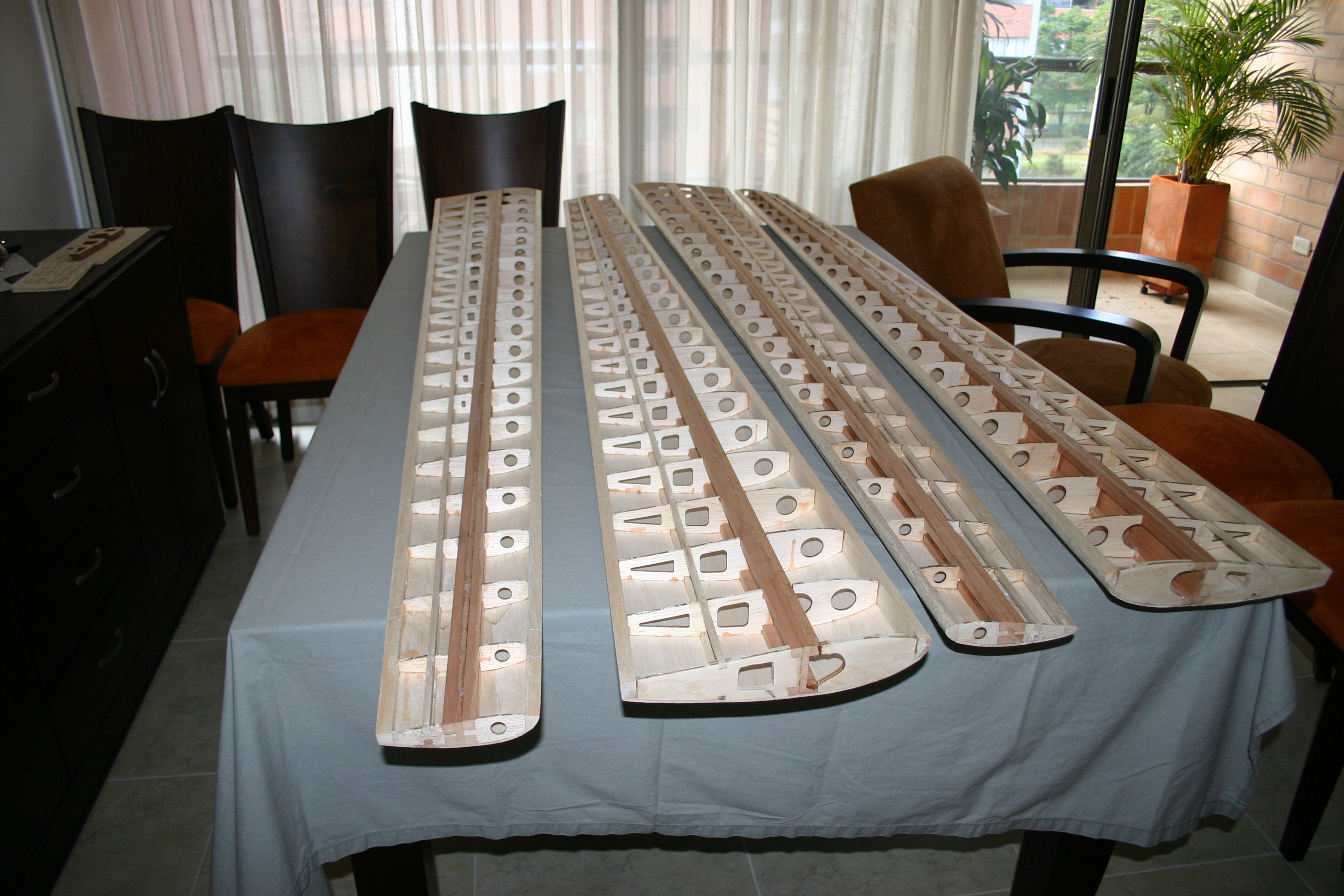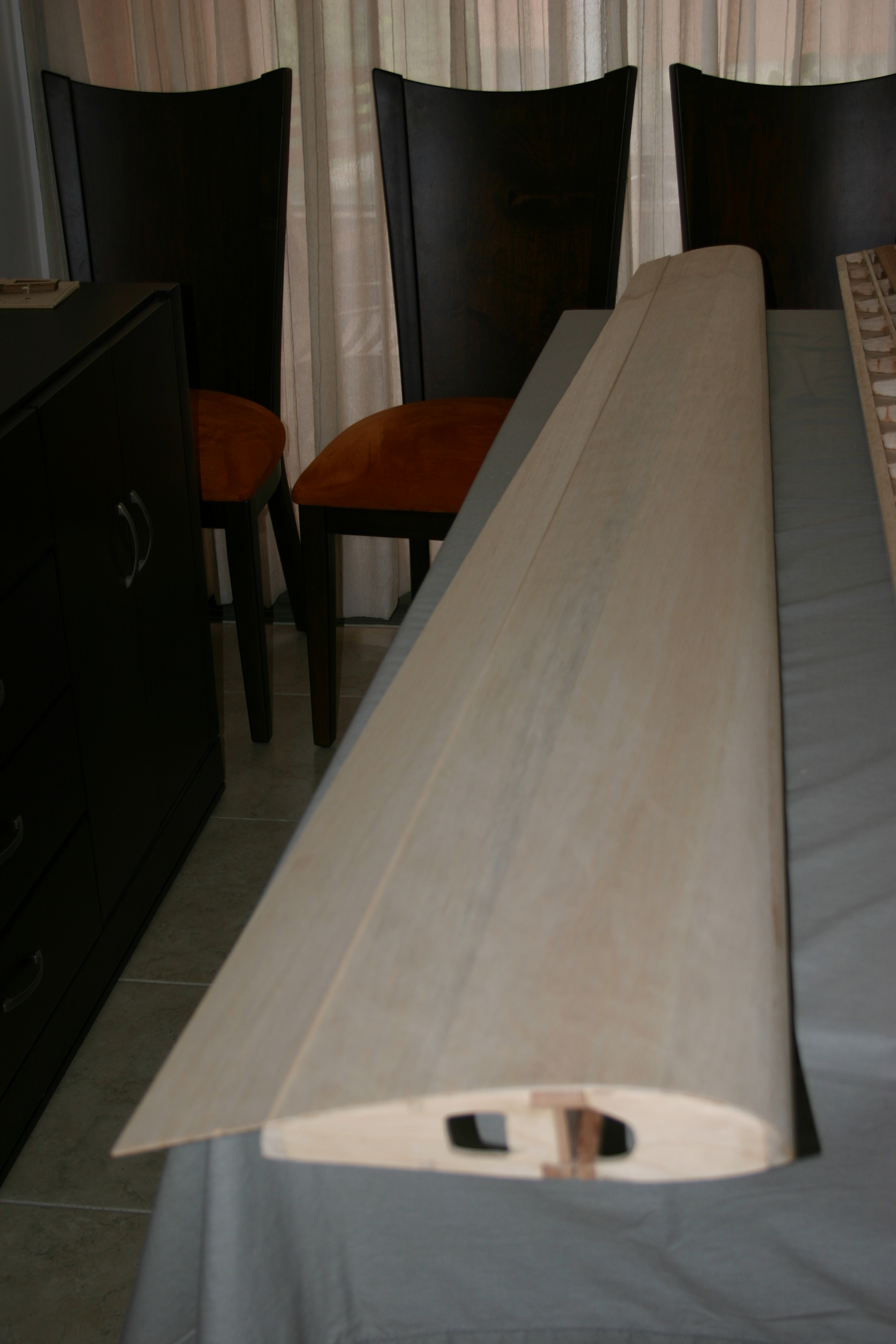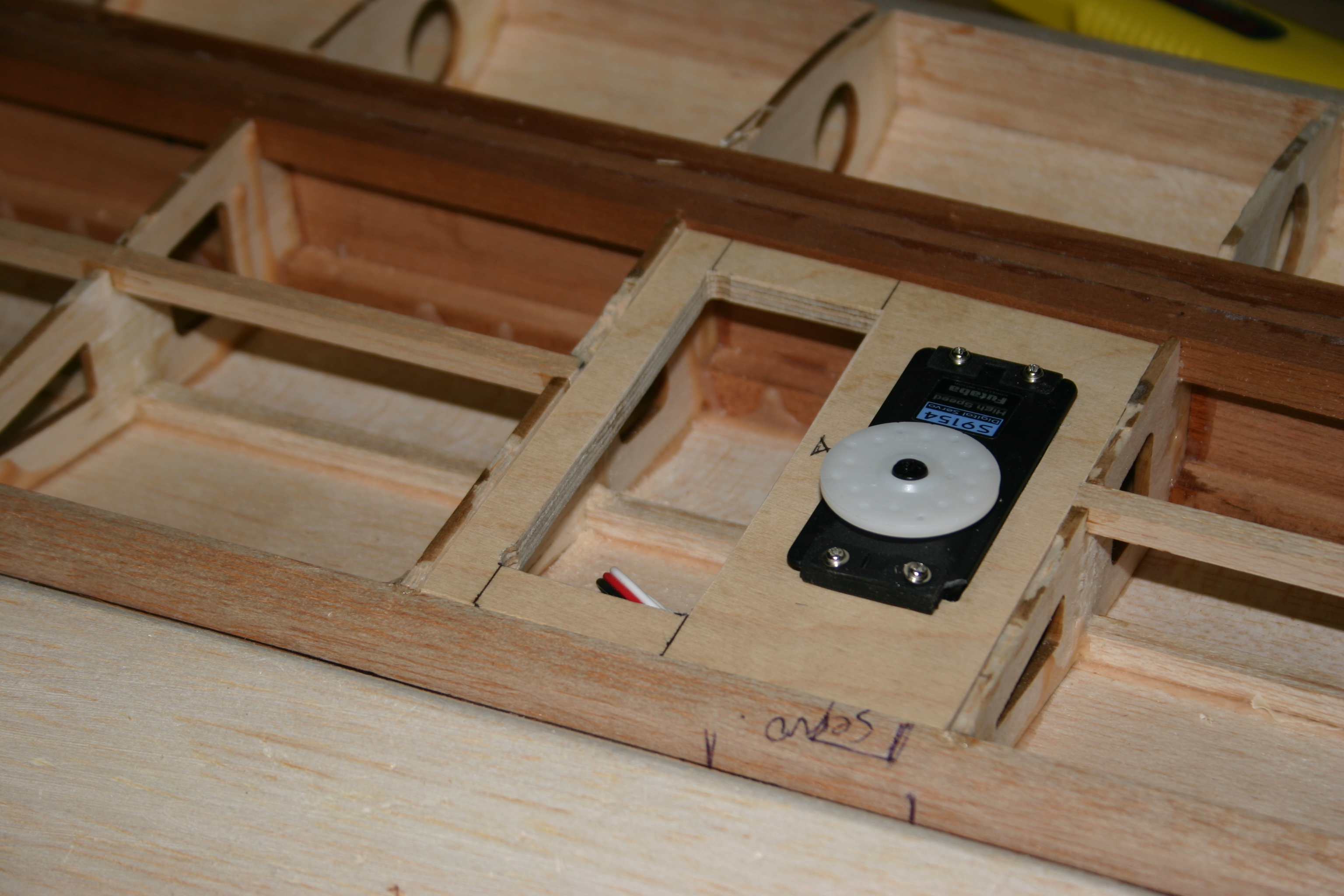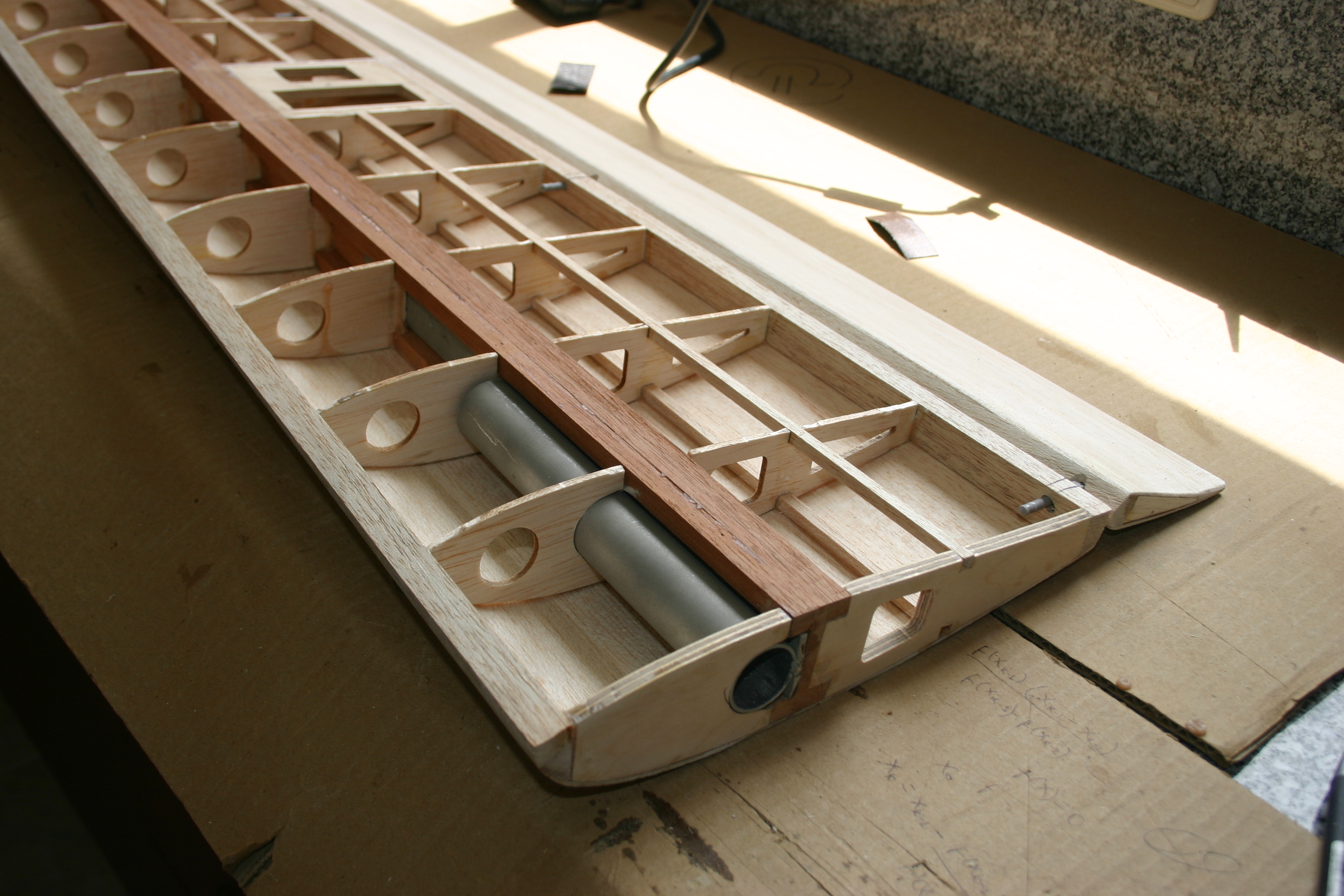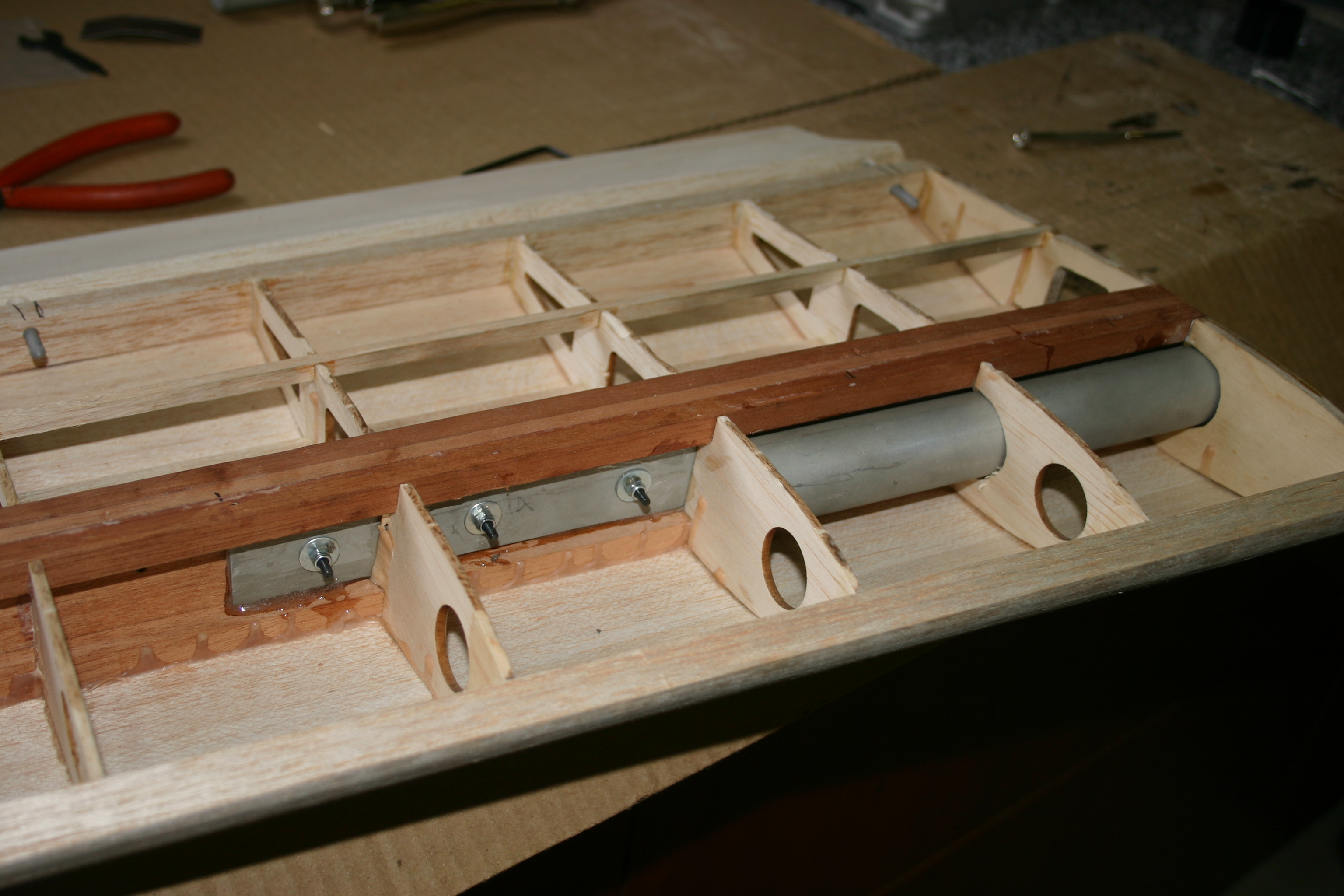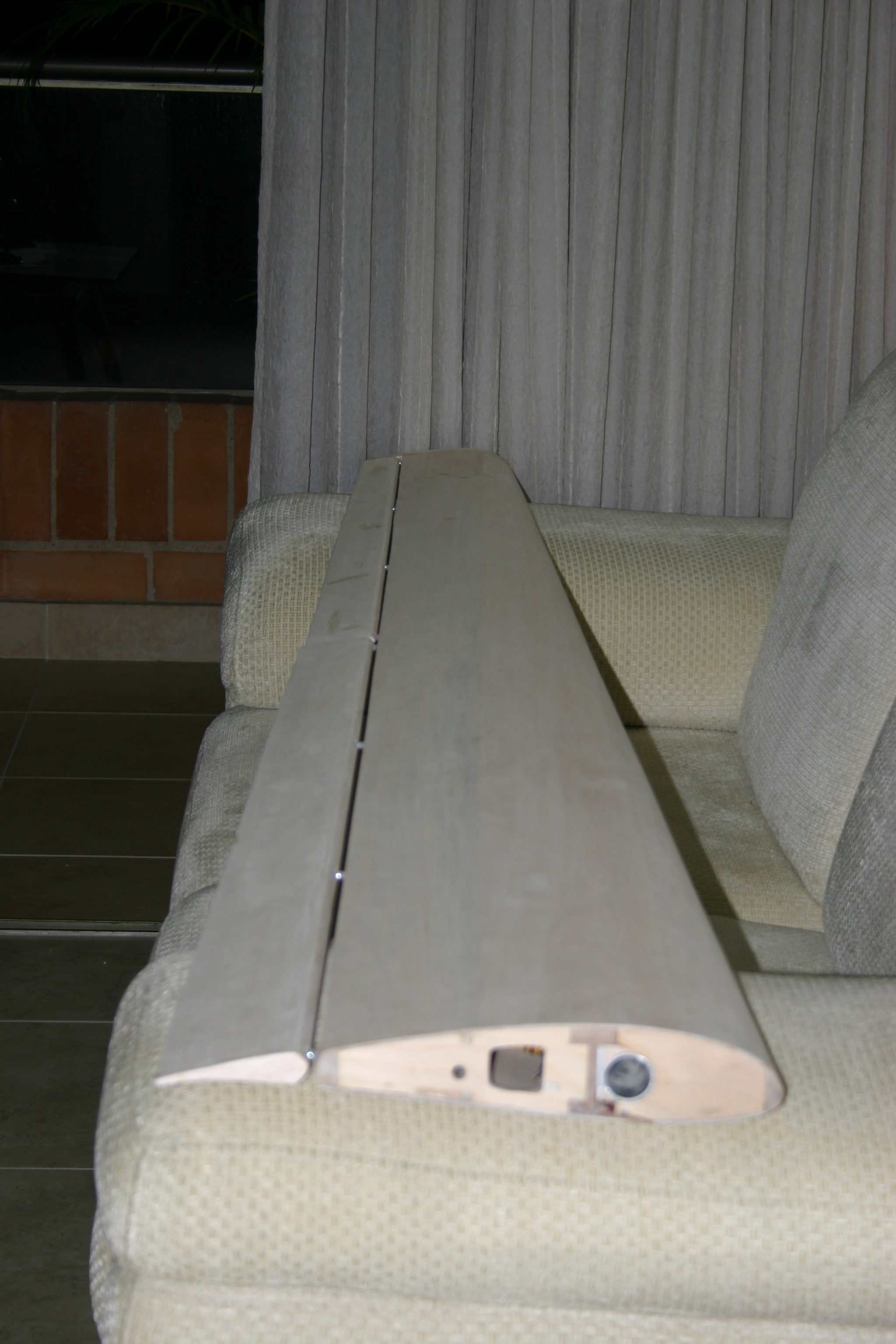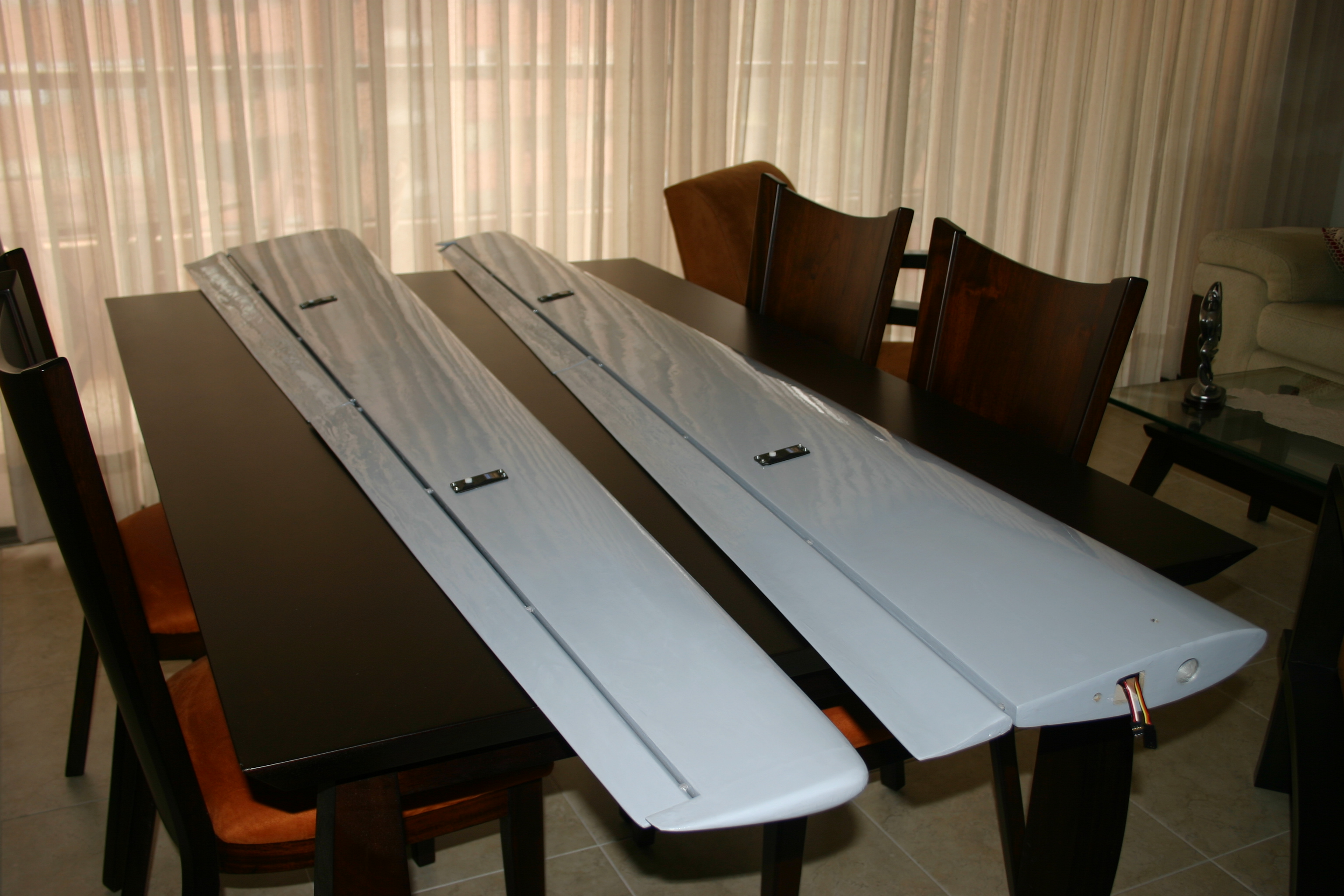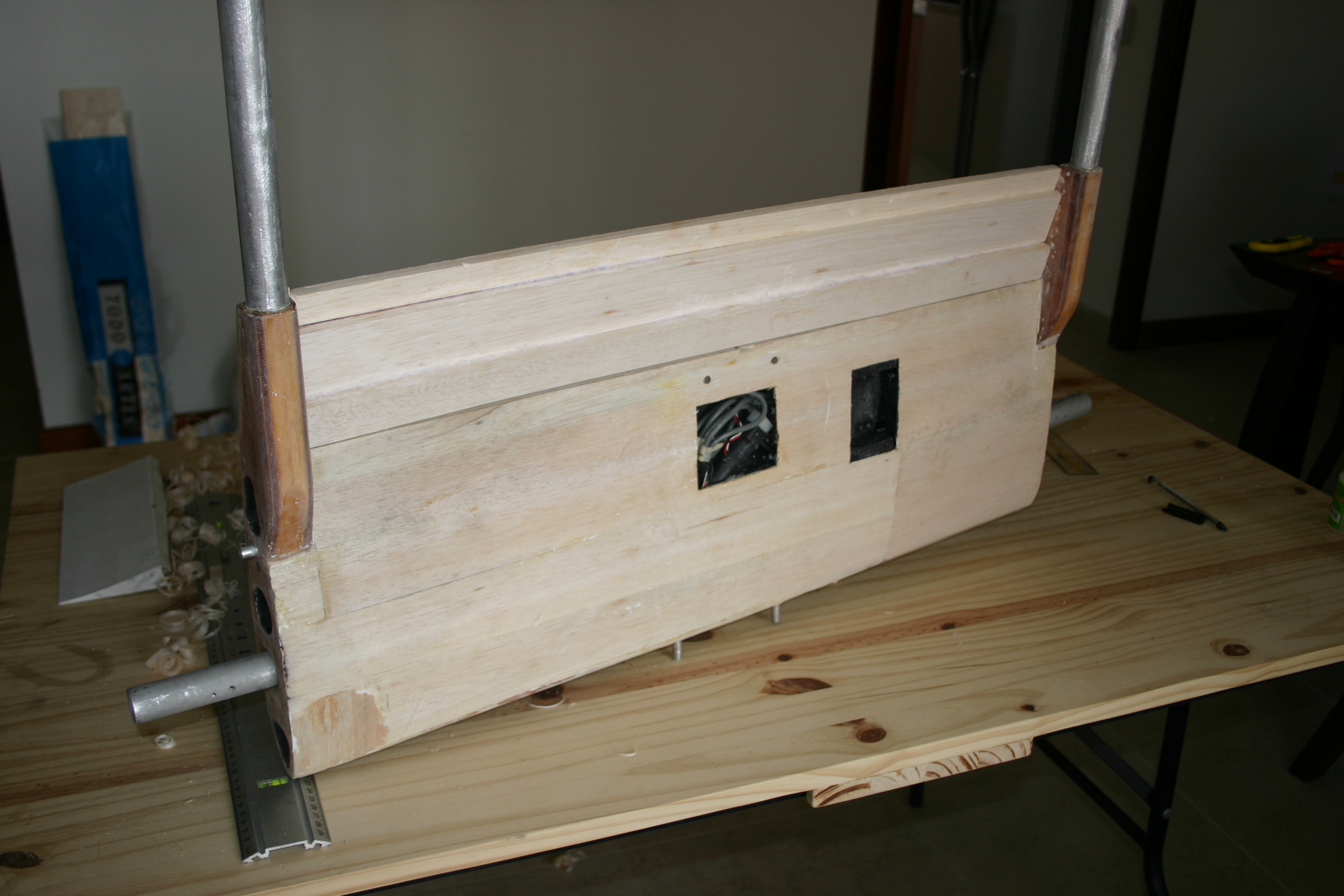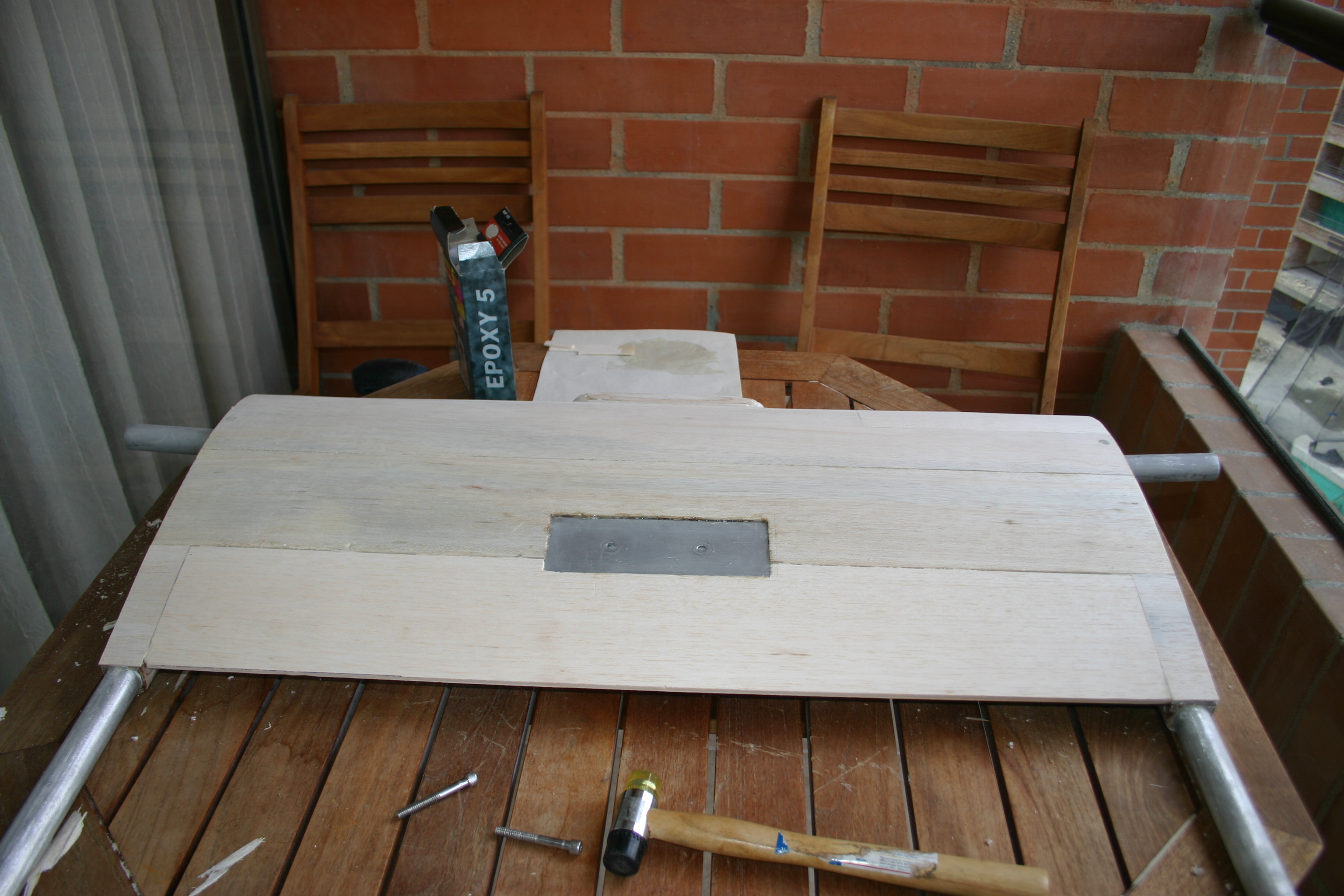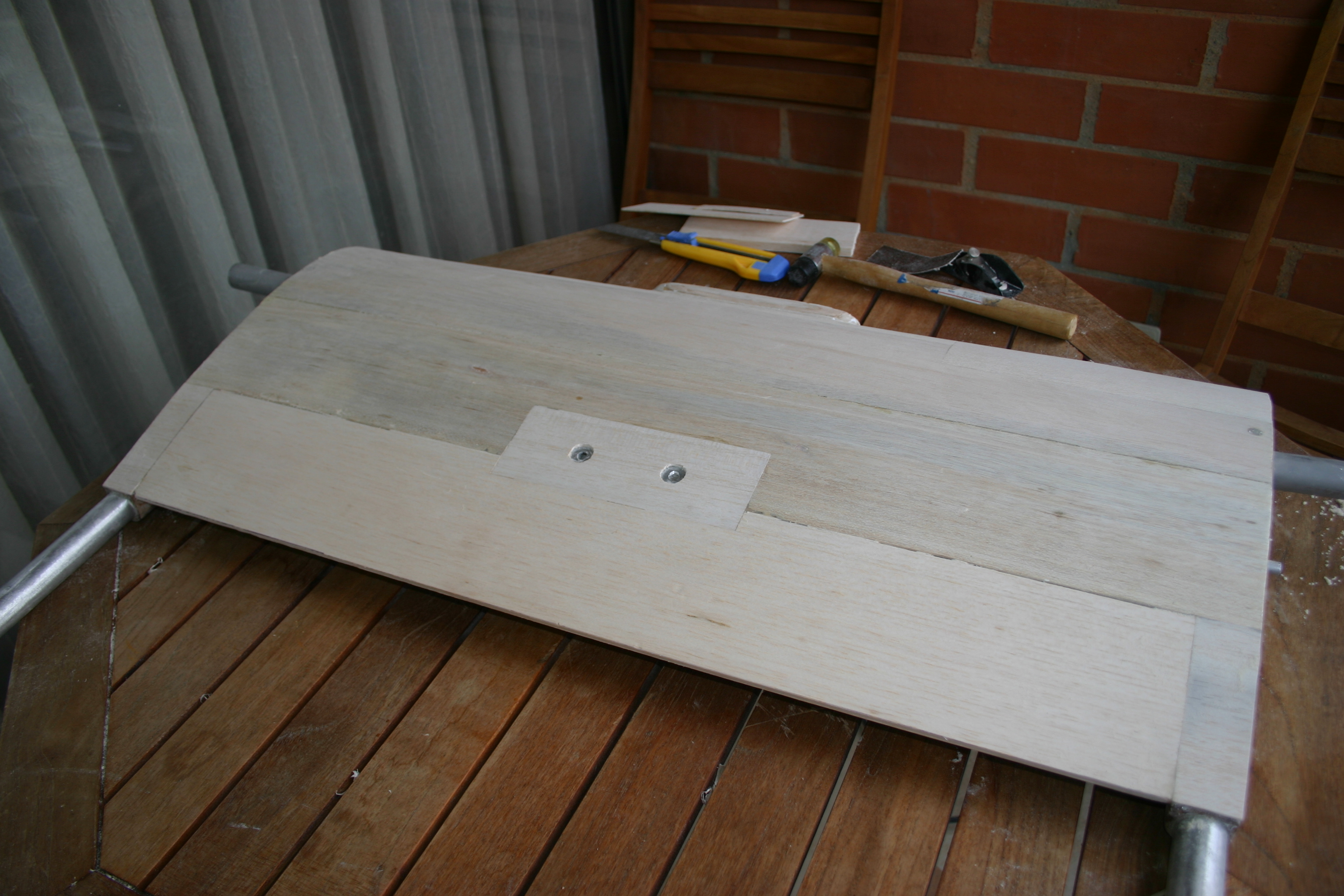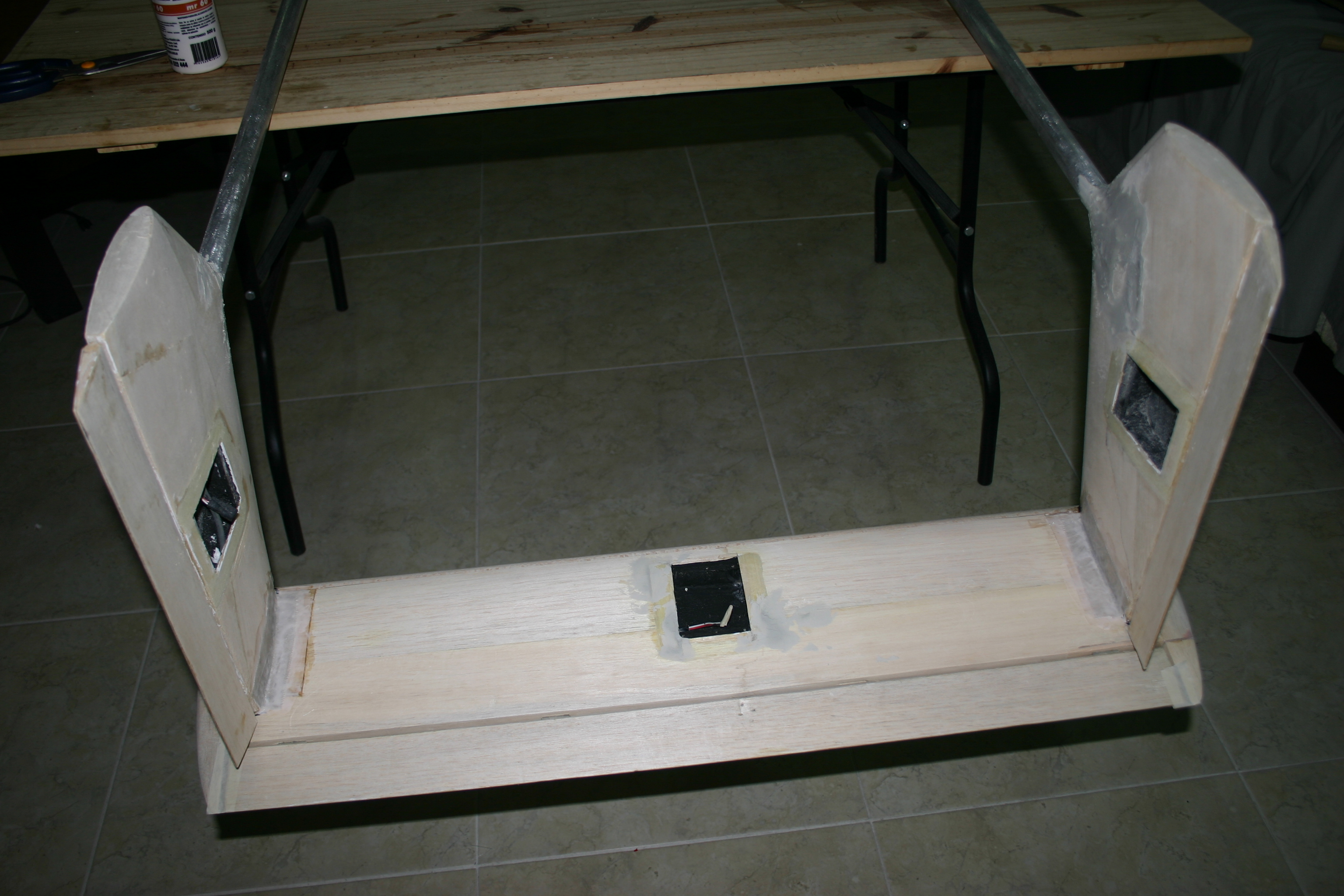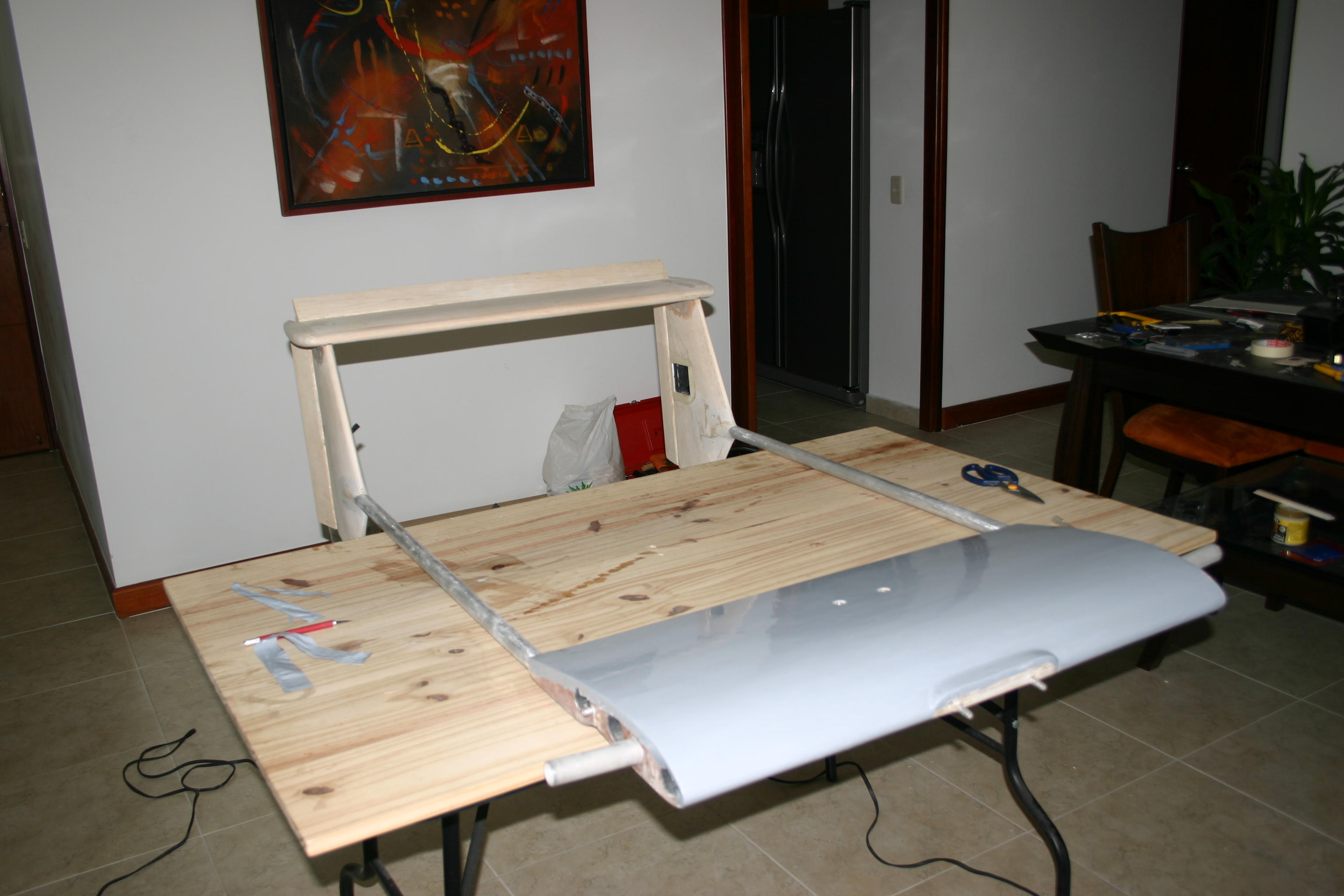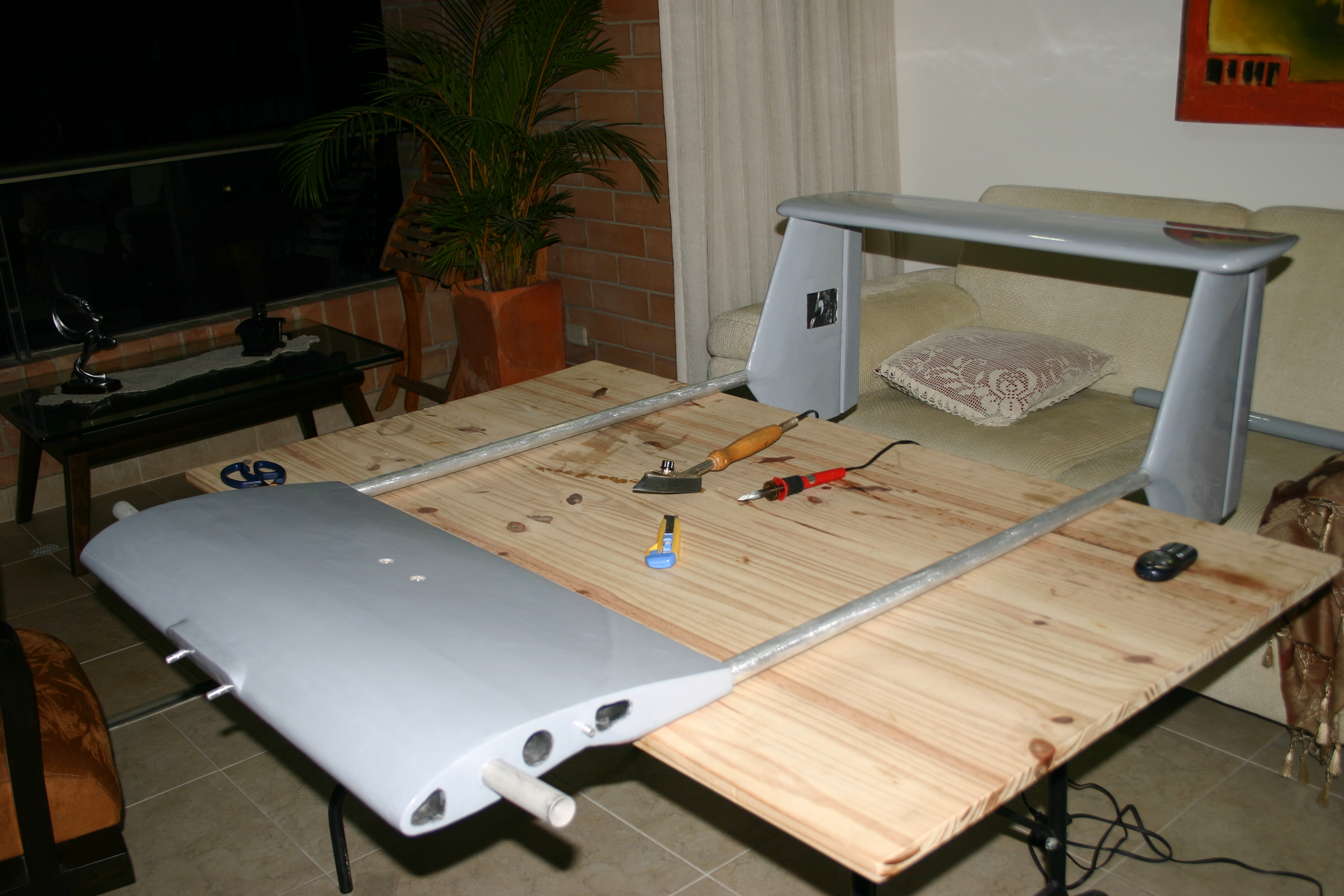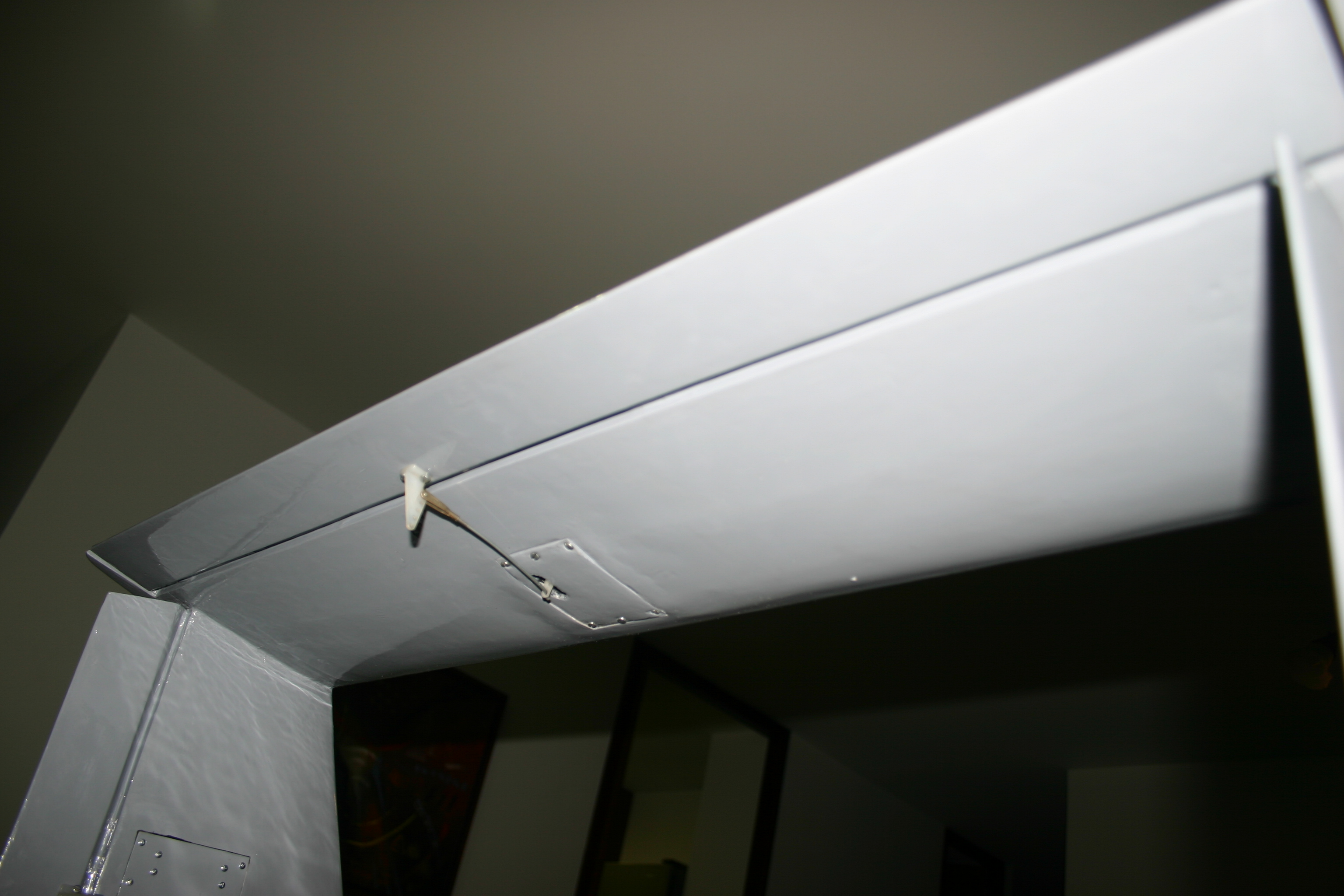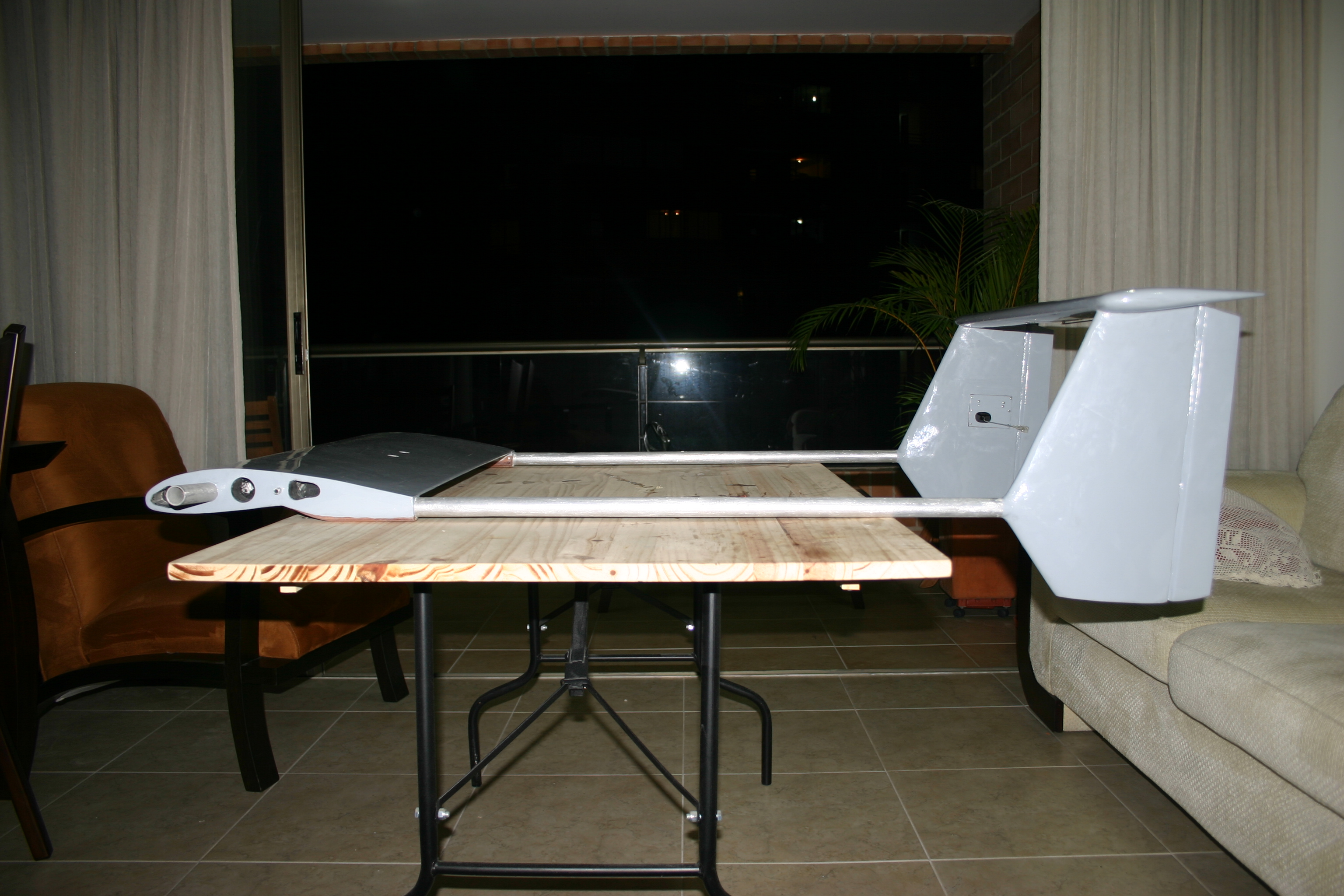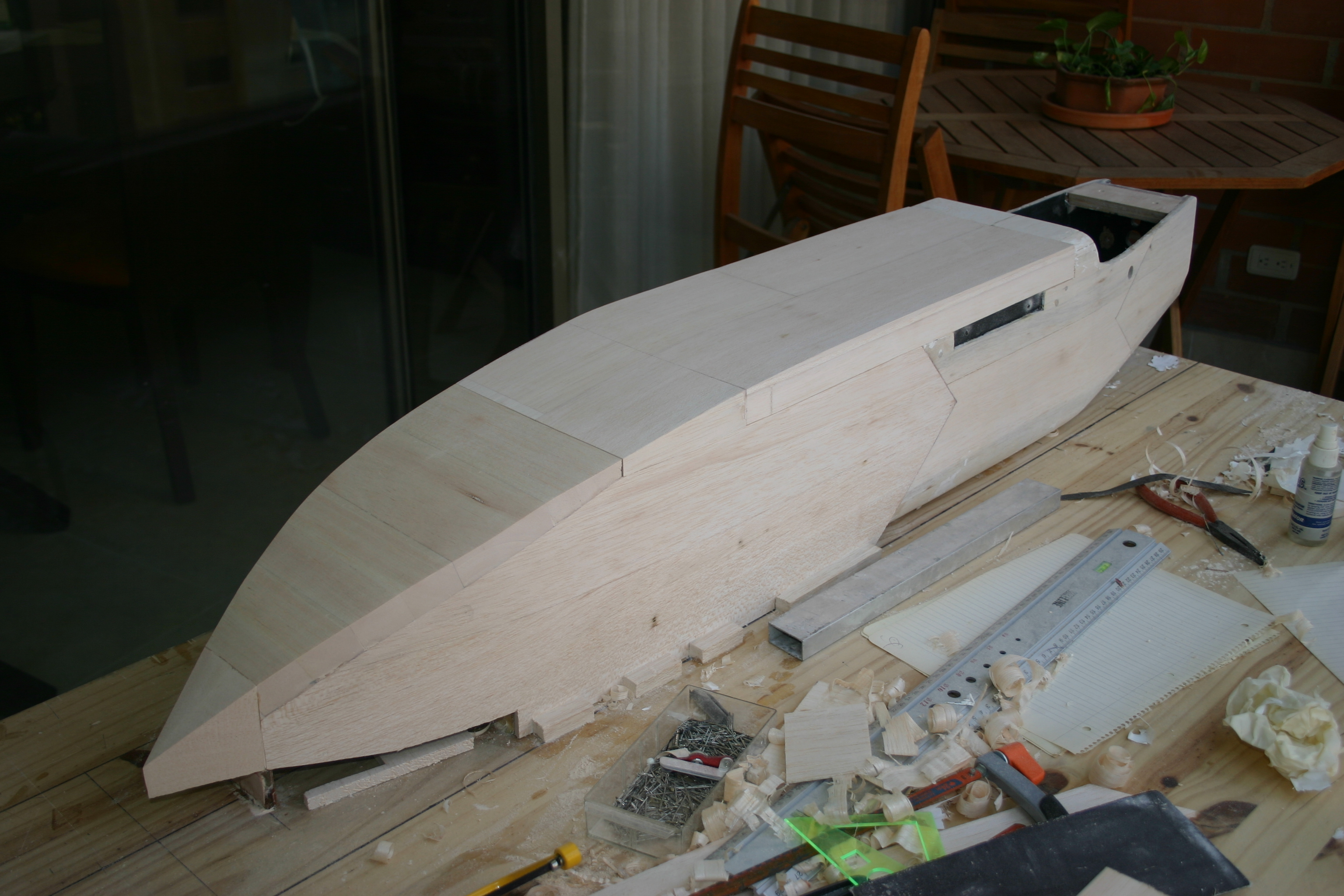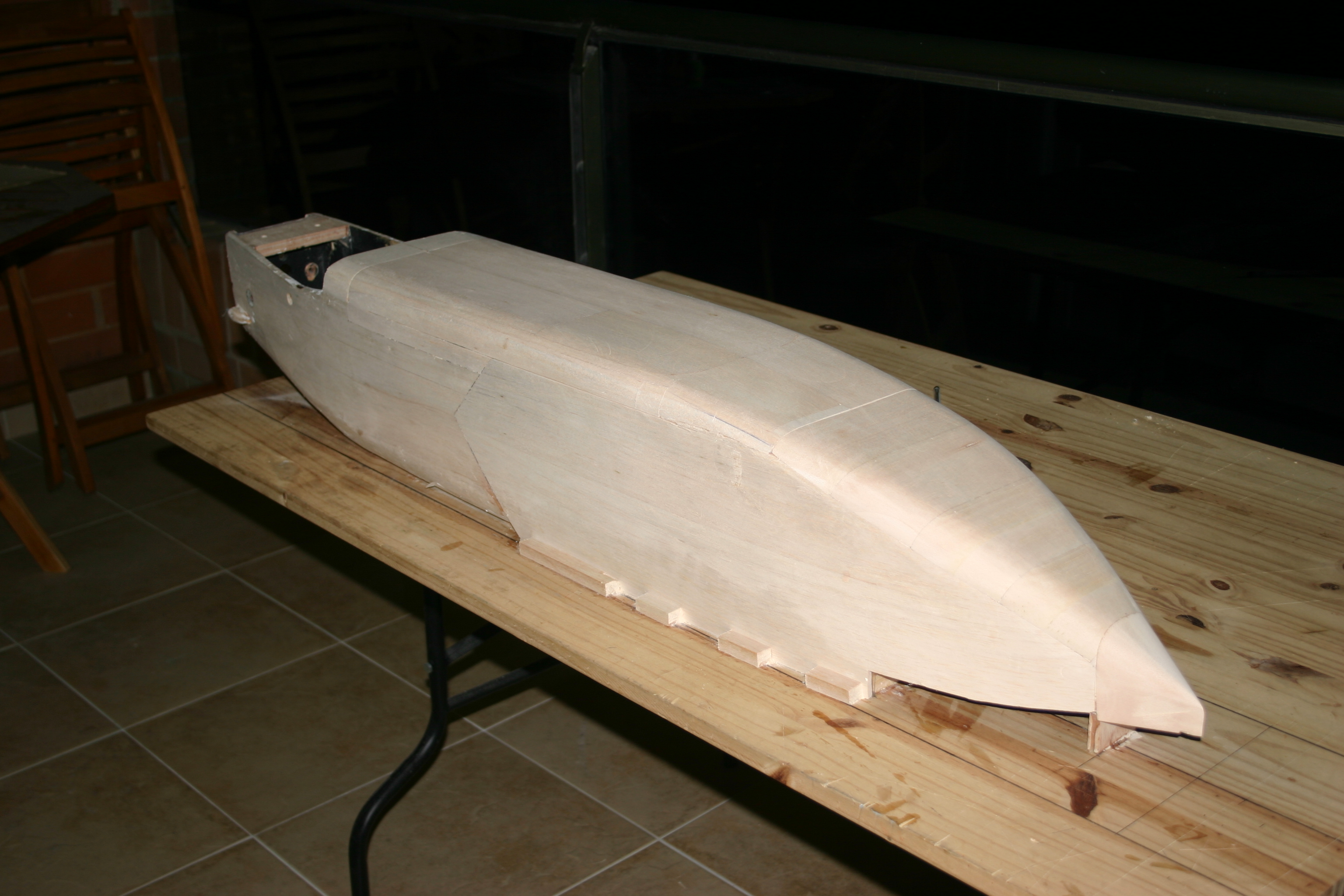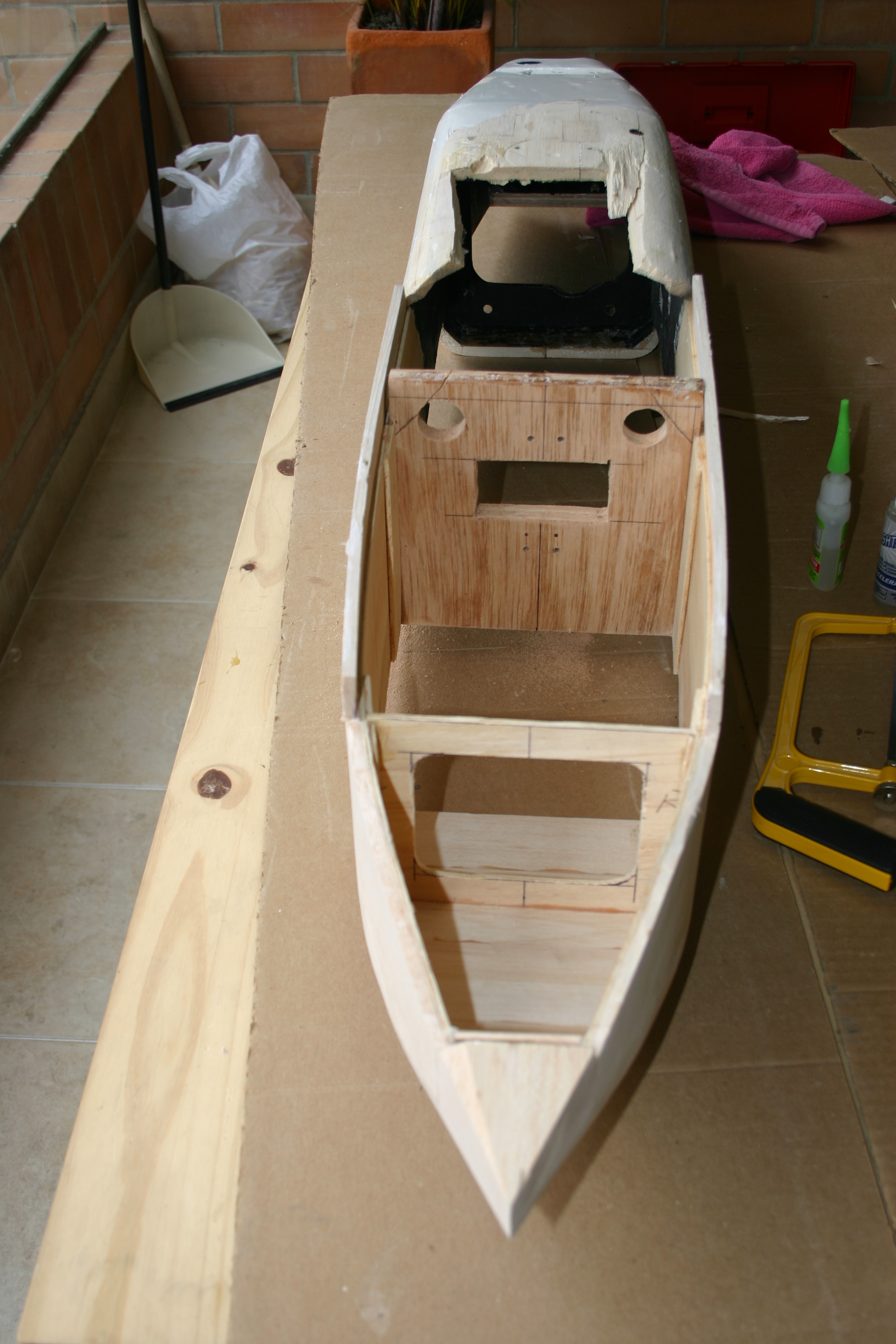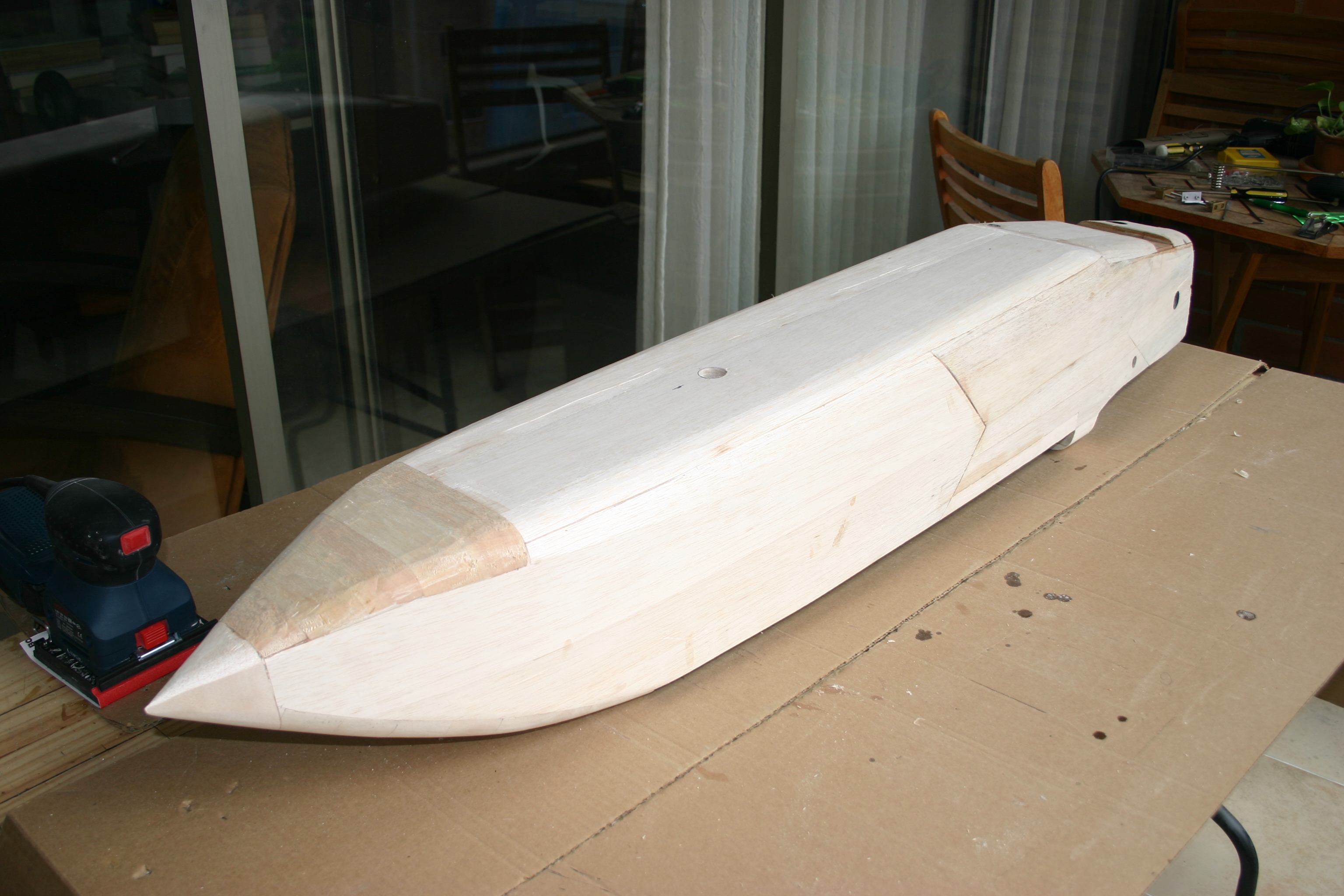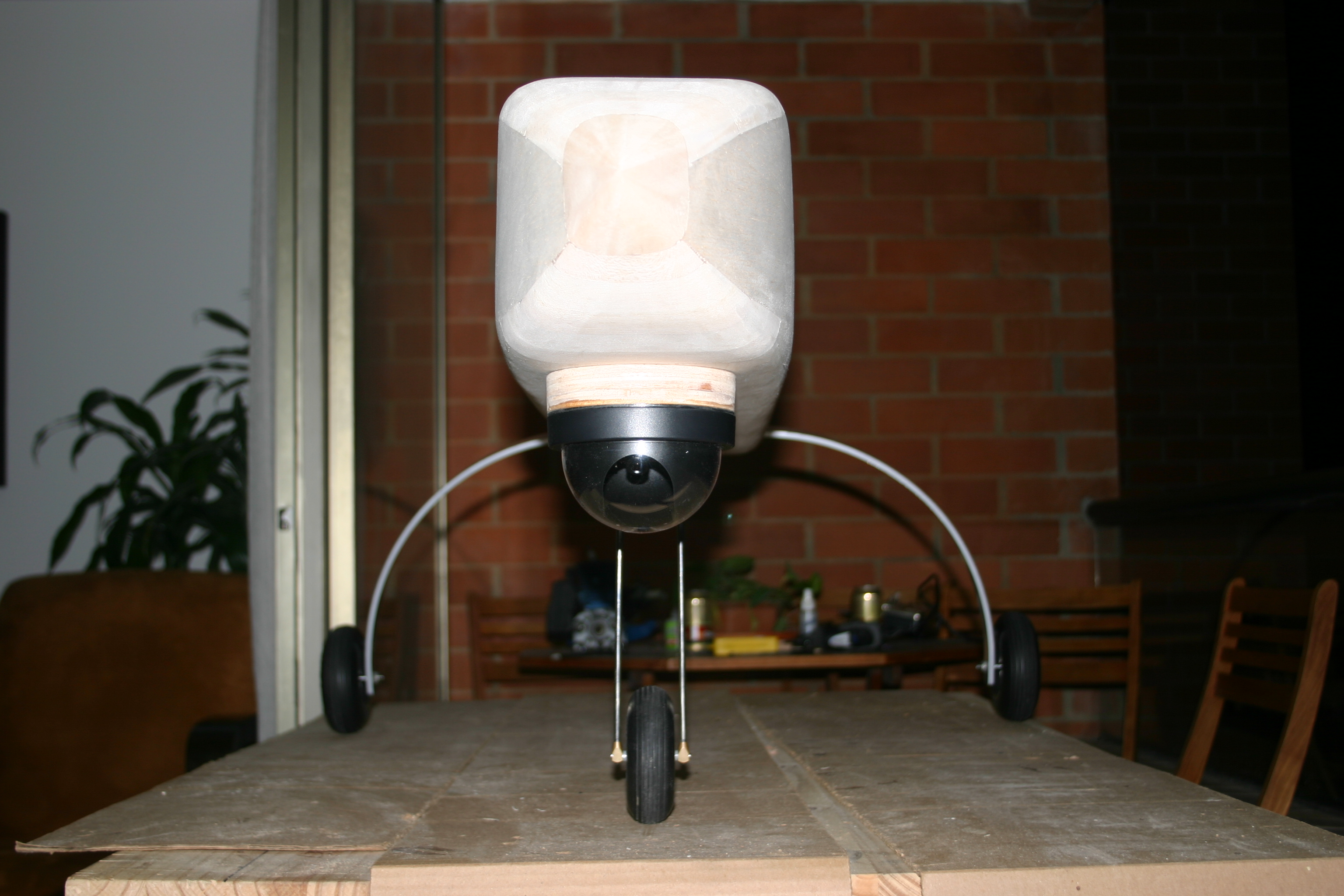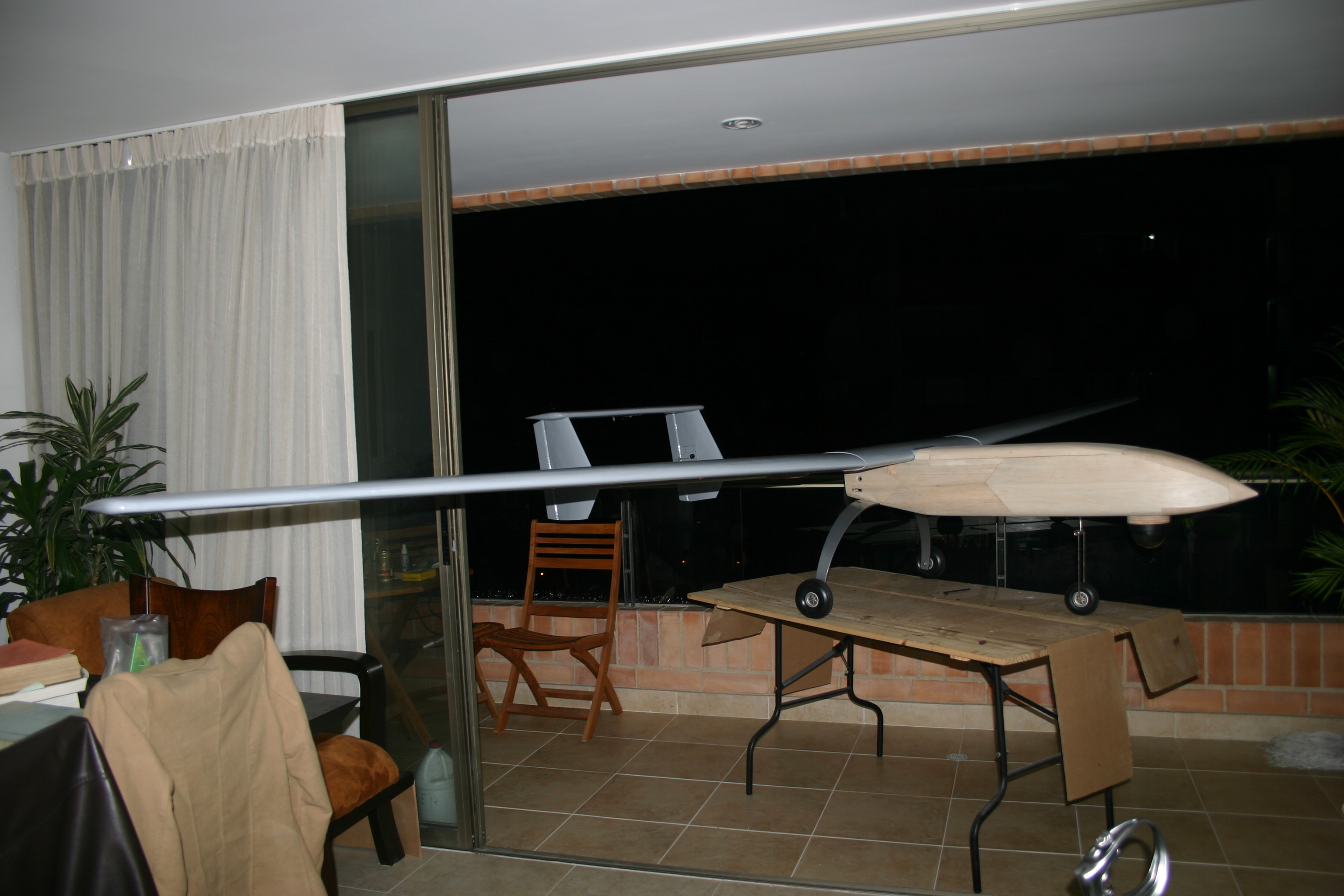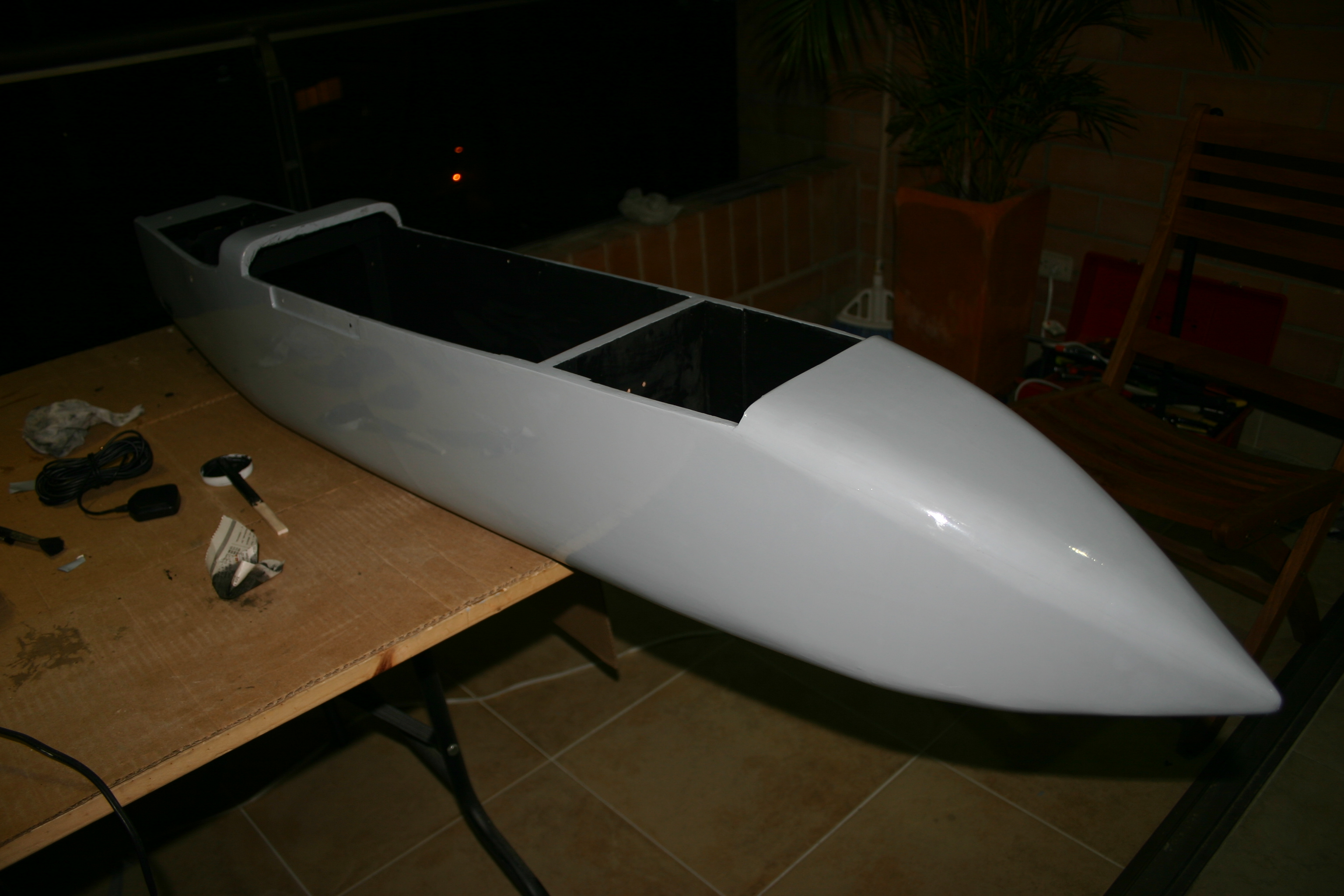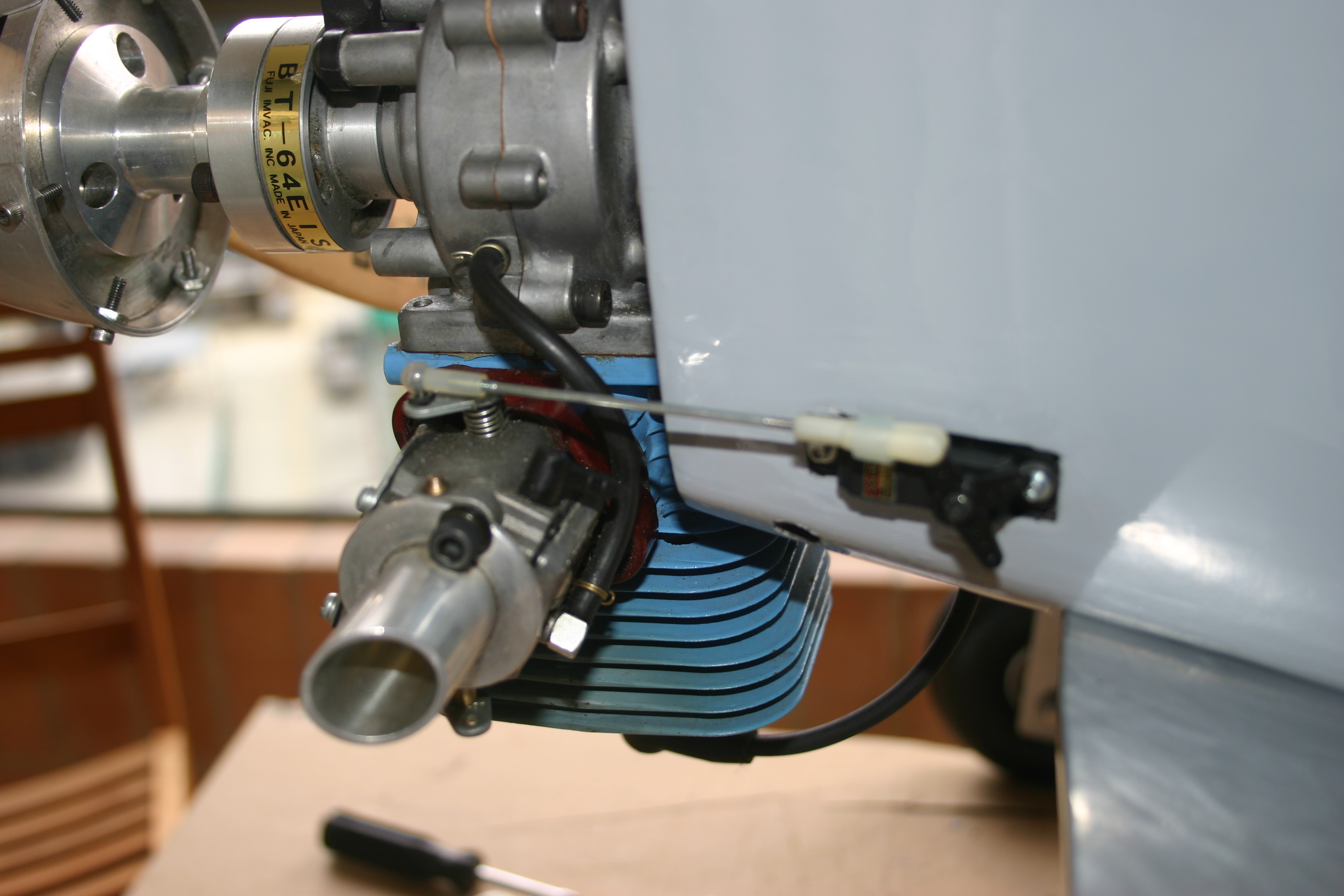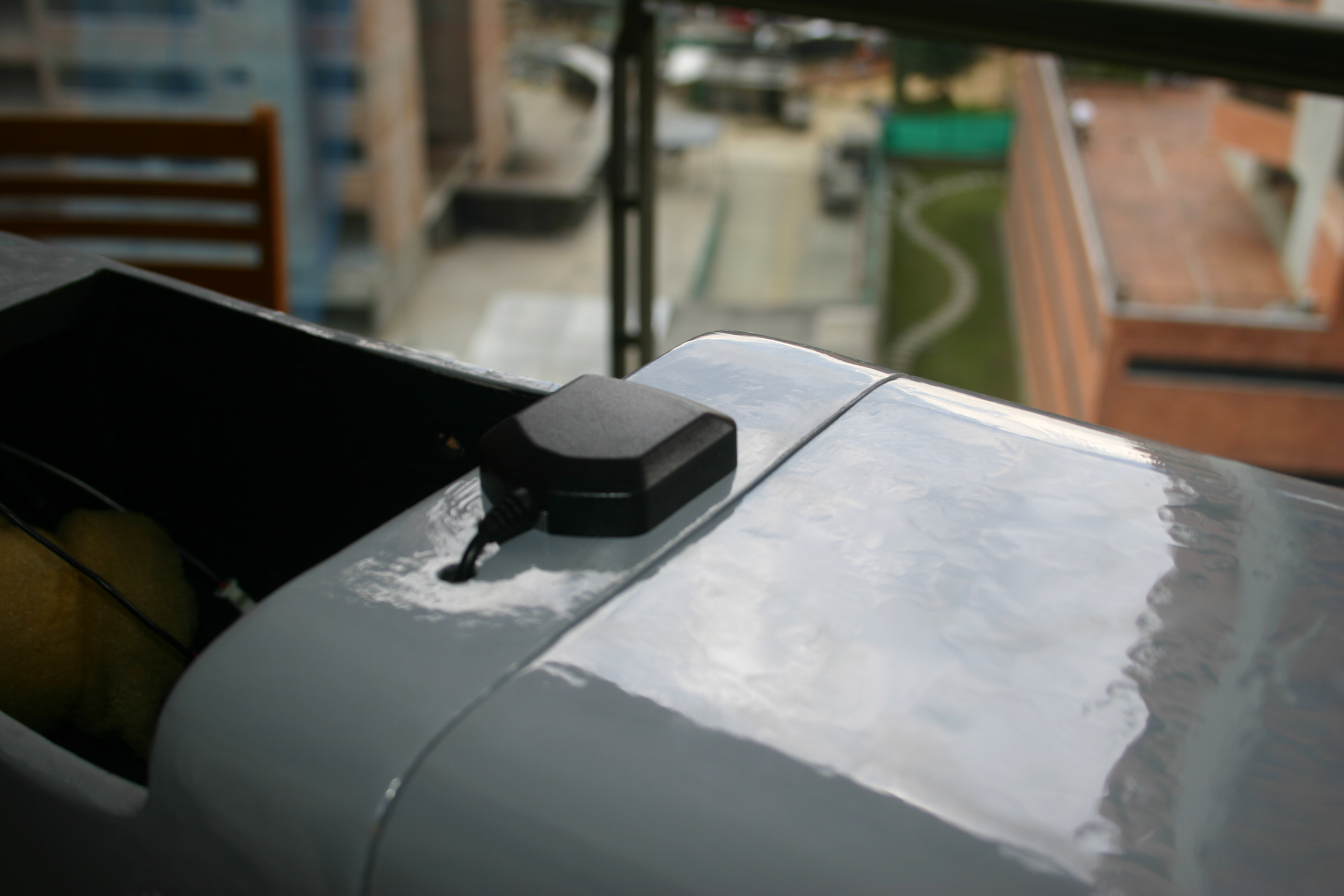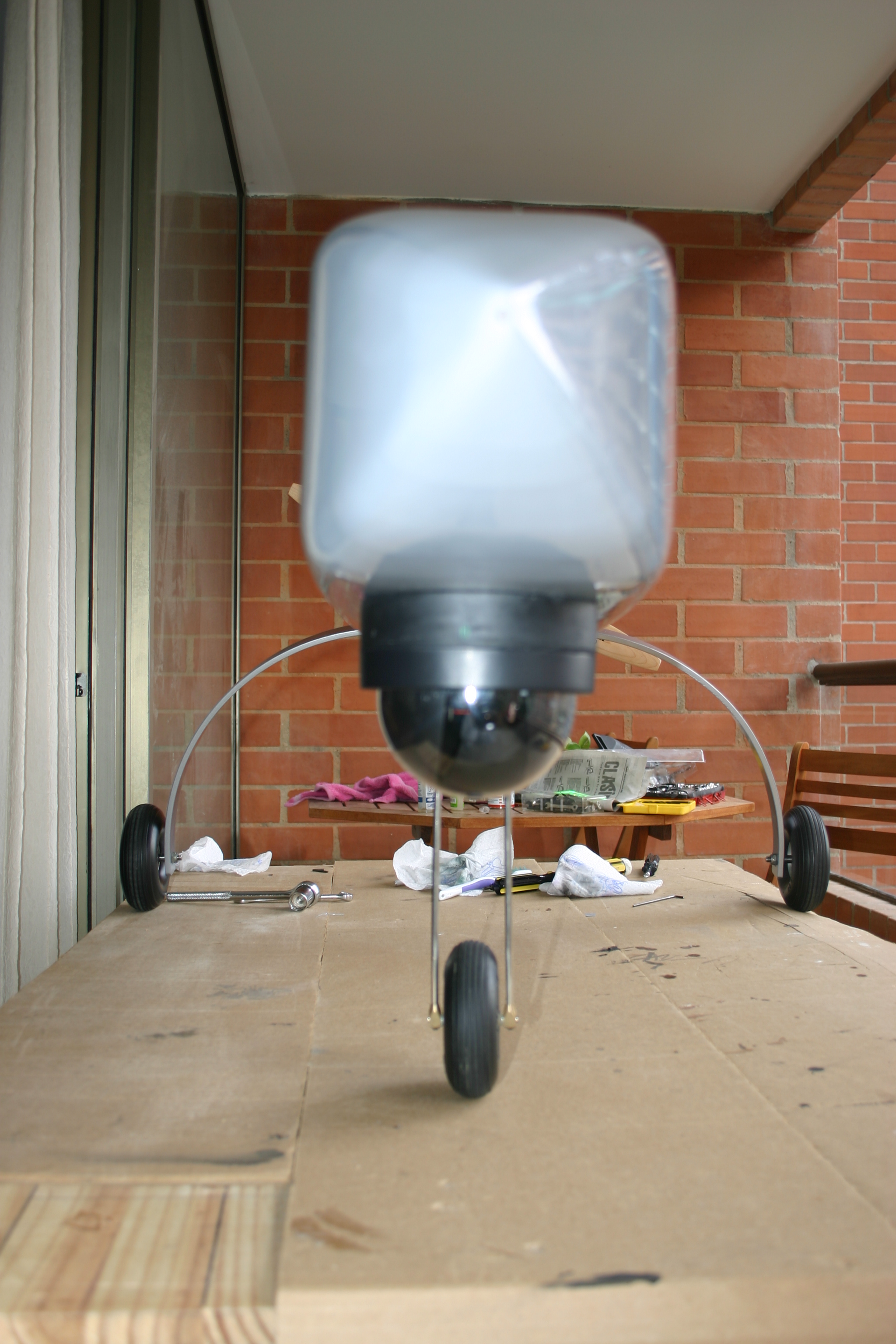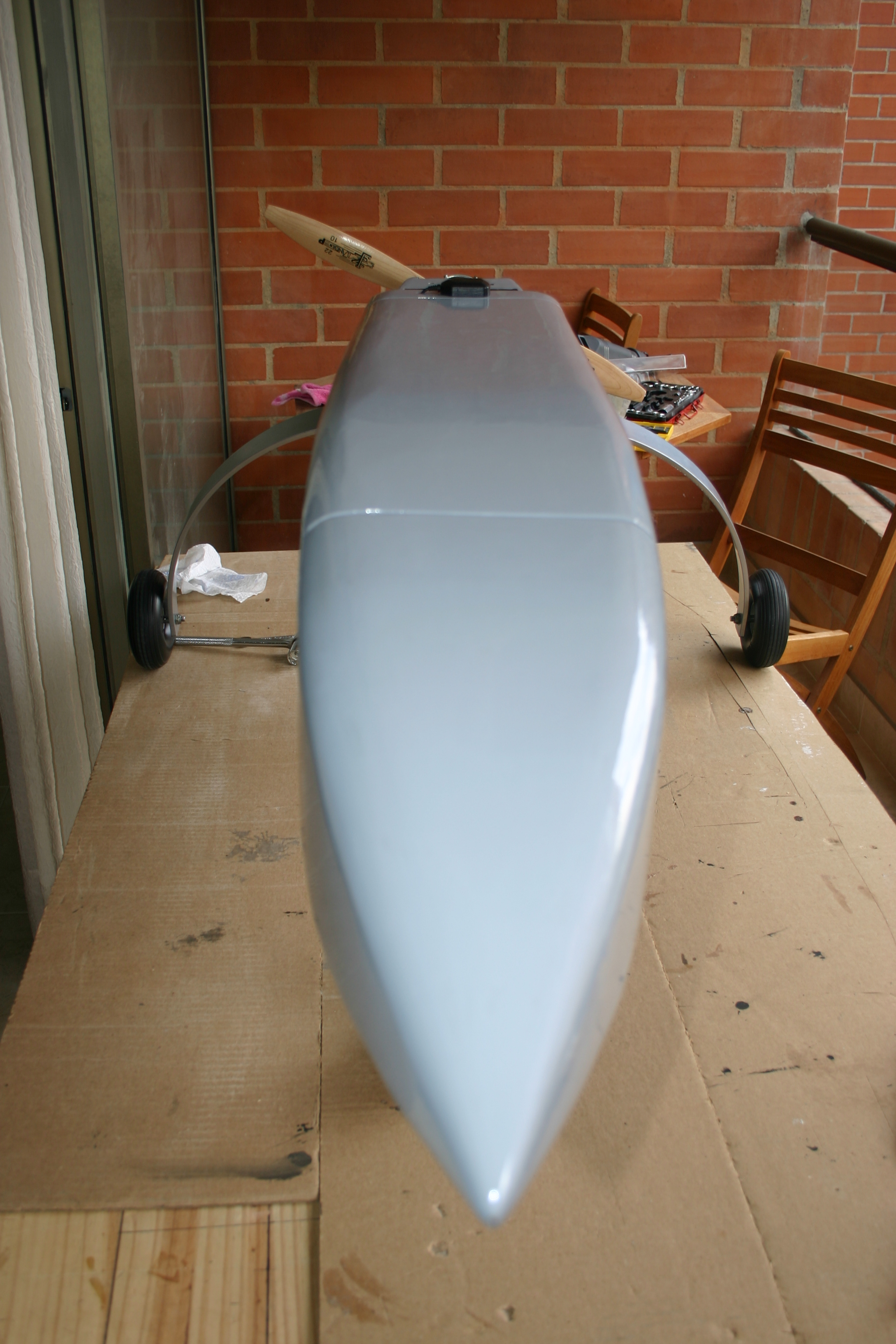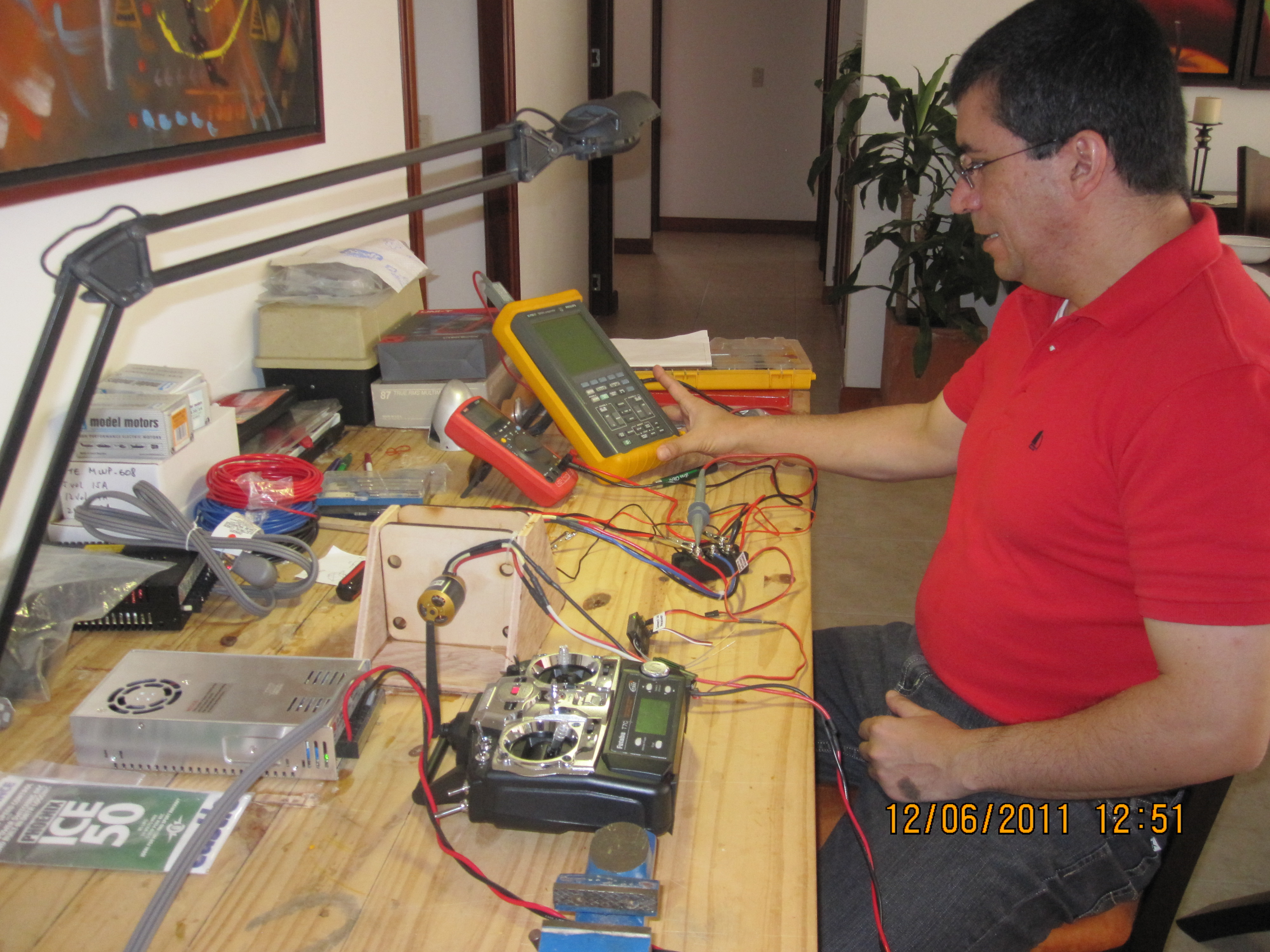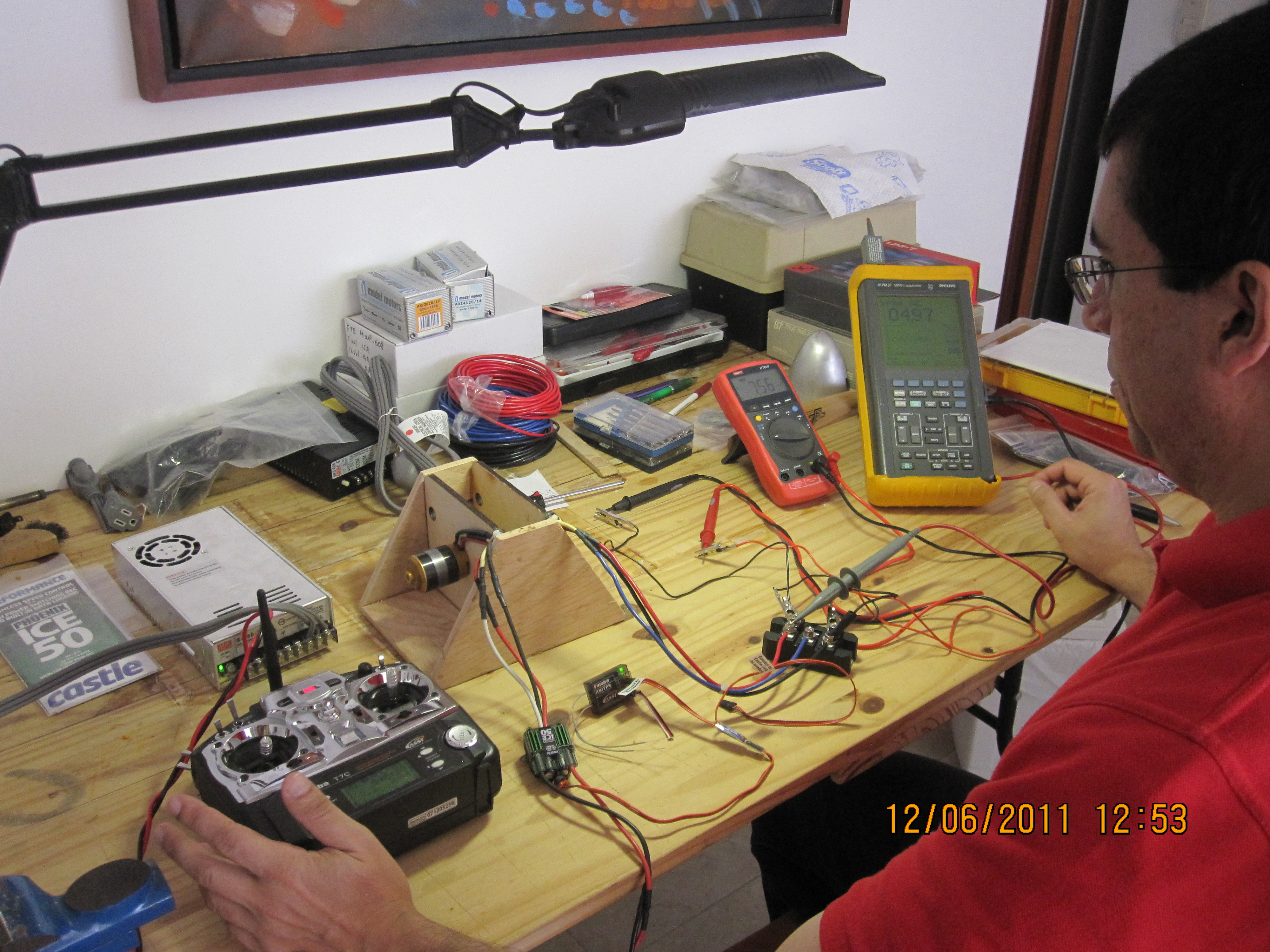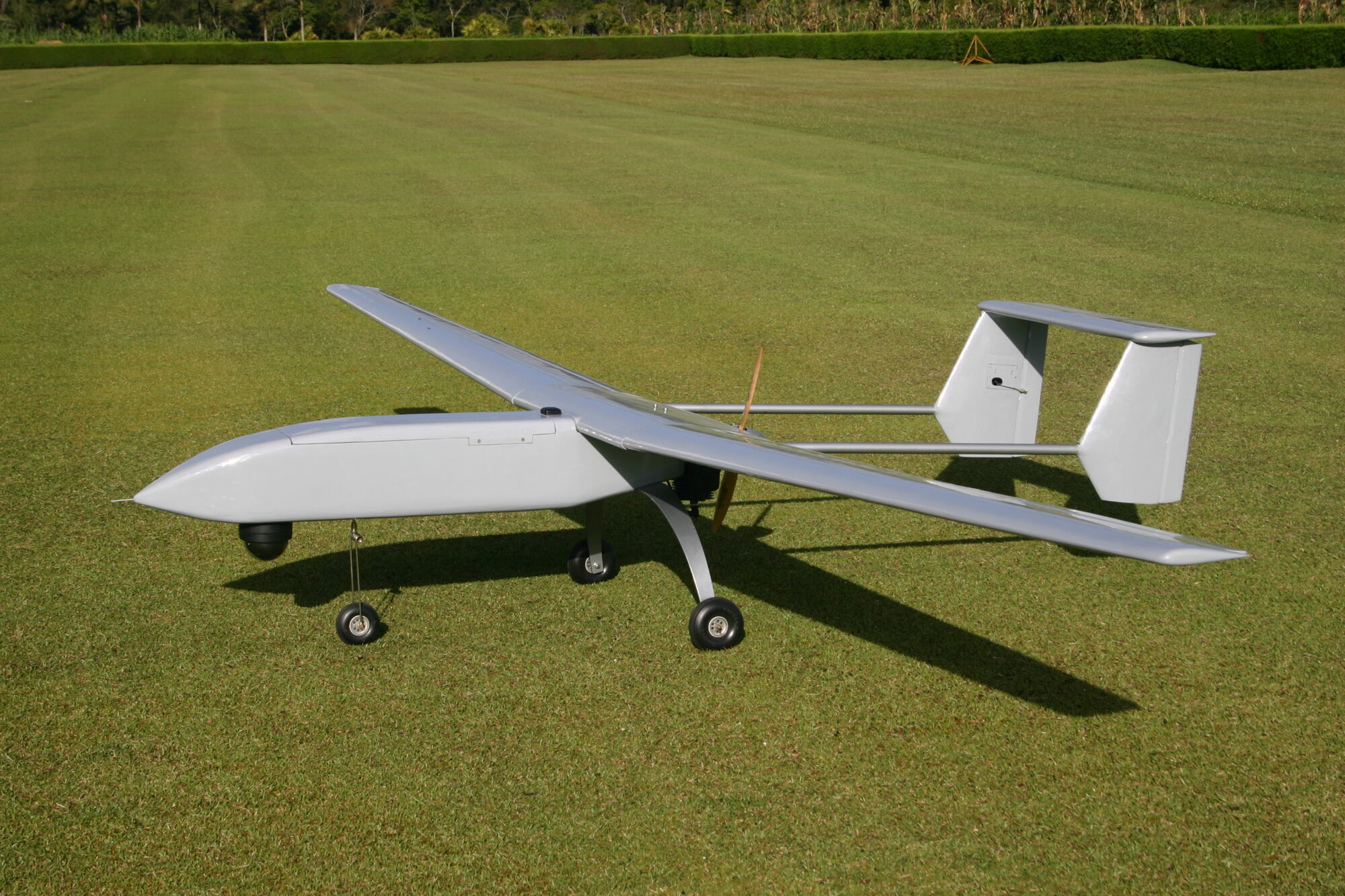
Summary
The Andean Condor unmanned aerial system is a tactical UAS for surveillance, exploration, reconnaissance, intelligence. Possible applications in photogrammetry and precision agriculture are also considered. This development is the result of the project “Development of a fixed-wing unmanned aerial system for short-range missions – Aura Jr” (2007-2009). The project developed with UPB’s own funds consisted of the development of a fixed-wing unmanned aerial system in a comprehensive manner, including aerodynamics; propulsion; structural design; detailed design; hardware design; development of guidance, navigation and control algorithms; software development. In-house software tools with computational numerical methods were developed to make the calculations of the aerodynamics, propulsion system and the optimized performance-based design. The design is an evolution of a UAV previously developed in 2005 called the Aura jr, that weighted 18 kg, had 3.1 m wingspan and was 2.3 m long. The new optimized design called Andean Condor is a UAV of 23 Kg, 5.08 m wingspan, 2.5 m long, payload of 5 Kg, and 4h of autonomy.
Specs
- Wingspan: 5.08 m
- Length: 2.5 m
- Maximum takeoff weight: 23 Kg
- Autonomy: 4 hr
- Minimum speed: 24 ktas
- Maximum speed: 65 ktas
- Operating ceiling: 5000 m asl
- Engine: twin 86cc 7.5 HP, gasoline / oil
- Communications system: Separate data and video links.
- Power: It has a generator for feeding avionics and payload systems.
Design features.
The design has been optimized with proprietary software to allow high altitude short runway clearance and the development of surveillance, exploration, reconnaissance or intelligence missions at low speeds, minimizing the chances of being detected.
Development of guidance, navigation and control systems.
The guidance system is a hybrid system capable of autonomous and semi-autonomous operation. In autonomous mode you can develop a mission that can be reprogrammed in flight at any time from the ground station. The mission consists of a succession of tasks in which the waypoint mode, coordinates, speed and altitude are specified. In semi-autonomous operation the autopilot controls the aircraft based on commands generated from the earth station.
The navigation system is based on the fusion of the sensors using an extended Kalman filter. Sensors include GPS, IMU, magnetometer, barometric altimeter, pitot tube, and sonar altimeter.
The flight control system integrates with the guidance and navigation systems allowing autonomous or remotely commanded flight from the ground station. Includes autonomous take off and landing capabilities.
Gallery
Presentation
Construction
Related Publications
[1] L. B. Gutiérrez, O. Hazbón, and B. Appel, “UAS design requirements for operation in colombian mountain environments,” in 28th Congress of the International Council of the Aeronautical Sciences (ICAS 2012), (Brisbane, Australia), International Council of the Aeronautical Sciences, International Council of the Aeronautical Sciences, September 2328, 2012. Available: https://www.icas.org/ICAS_ARCHIVE/ICAS2012/ABSTRACTS/595.HTM, ISBN: 978-0-9565333-1-9. pdf
[2] J. A. Ramírez, R. E. Vásquez, and L. B. Gutiérrez, “An iterative feedback tunning scheme for the multiloop PID control of a UAV,” in Proceedings of the ASME 2010 International Mechanical Engineering Congress and Exposition. Volume 8: Dynamic Systems and Control, Parts A and B, (Vancouver, British Columbia, Canada), pp. 75–84, The American Society of Mechanical Engineers ASME, ASME, November 12–18, 2010. Available: https://asmedigitalcollection.asme.org/IMECE/proceedings-abstract/IMECE2010/44458/75/344287, ISBN: 978-0-7918-4445-8, doi: https://doi.org/10.1115/IMECE2010-38384. pdf
[3] J. A. Ramírez, R. E. Vásquez, and L. B. Gutiérrez, “Robust gain-scheduled control of a UAV based on a polytopic model approximation,” in Proceedings of the ASME 2010 International Mechanical Engineering Congress and Exposition. Volume 8: Dynamic Systems and Control, Parts A and B, (Vancouver, British Columbia, Canada), pp. 91–99, The American Society of Mechanical Engineers ASME, ASME, November 12–18, 2010. Available: https://asmedigitalcollection.asme.org/IMECE/proceedings-abstract/IMECE2010/44458/91/344343, ISBN: 978-0-7918-4445-8, doi: https://doi.org/10.1115/IMECE2010-38437. pdf
[4] P. A. Ortiz and L. B. Gutiérrez, “Modelo matemático para un vehículo aéreo no tripulado de ala fija, usando un estimador de parámetros ’filtro de Kalman’,” TecnoLógicas, vol. 22, pp. 75–98, 2009. Available: https://repositorio.itm.edu.co/handle/20.500.12622/827, ISSN: 1367-5788. pdf
[5] L. Cardona, M. Osorio, and L. B. Gutiérrez, “Sistema de navegación para vehículos no tripulados,” in Memorias XIII Congreso Latinoamericano de Control Automatico, (Mérida, Venezuela), IFAC, Noviembre 25-28, 2008. ISBN: 978-980-11-1224-2. pdf
[6] L. B. Gutiérrez, “Sistemas no tripulados,” in Memorias IV Colombian IEEE Workshop of Robotics and Automation, (Cali, Colombia), IEEE Colombia, Agosto 13-15, 2008. ISBN: 978958-8122-75-5. Presentation
[7] C. A. Zuluaga and L. B. Gutiérrez, “Infraestructura de simulacion para vehiculos no tripulados,” in Memorias VII Congreso de la Asociación Colombiana de Automática, (Cali, Colombia), Asociación Colombiana de Automática, Marzo 21-24, 2007. ISBN: 9789484408. pdf
[8] J. F. Franco and L. B. Gutiérrez, “Análisis de dominio de un marco de tiempo real para vehiculos autonomos no tripulados,” in Memorias VII Congreso de la Asociación Colombiana de Automática, (Cali, Colombia), Asociación Colombiana de Automática, Marzo 21-24, 2007. ISBN: 9789484408. pdf
[9] L. B. Gutiérrez Z., M. Osorio Cárdenas, and J. A. Álvarez J., “Sistema de guía, navegación y control para aeronaves autónomas,” in CWRA 2005 IEEE Colombian Workshop on Robotics and Automation, (Universidad Javeriana, Bogota, Colombia), IEEE Colombia, Agosto 11, 2005. ISBN: 958-695-182-0. pdf
